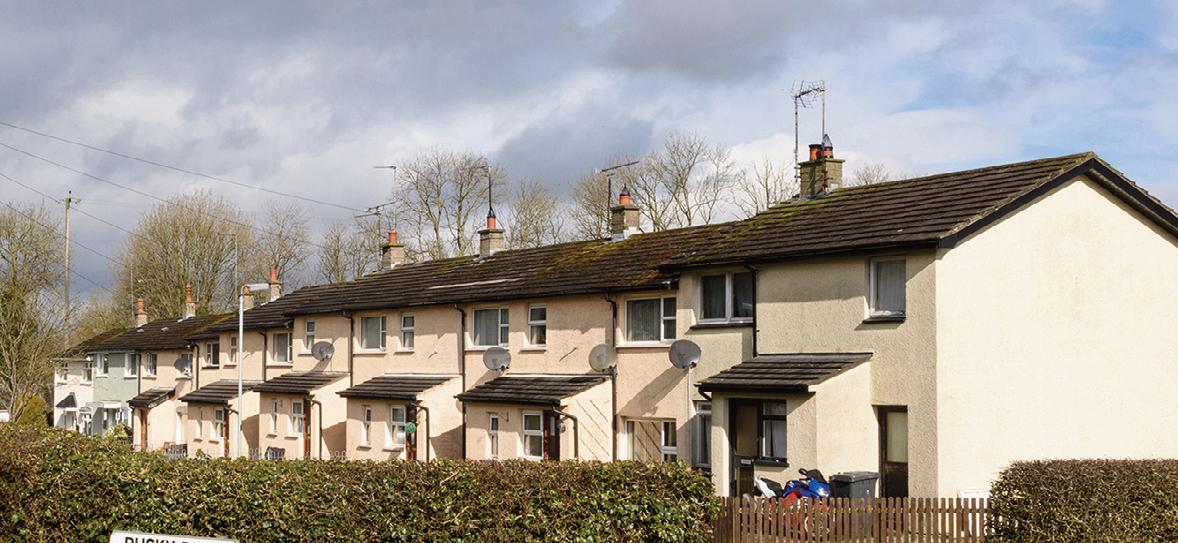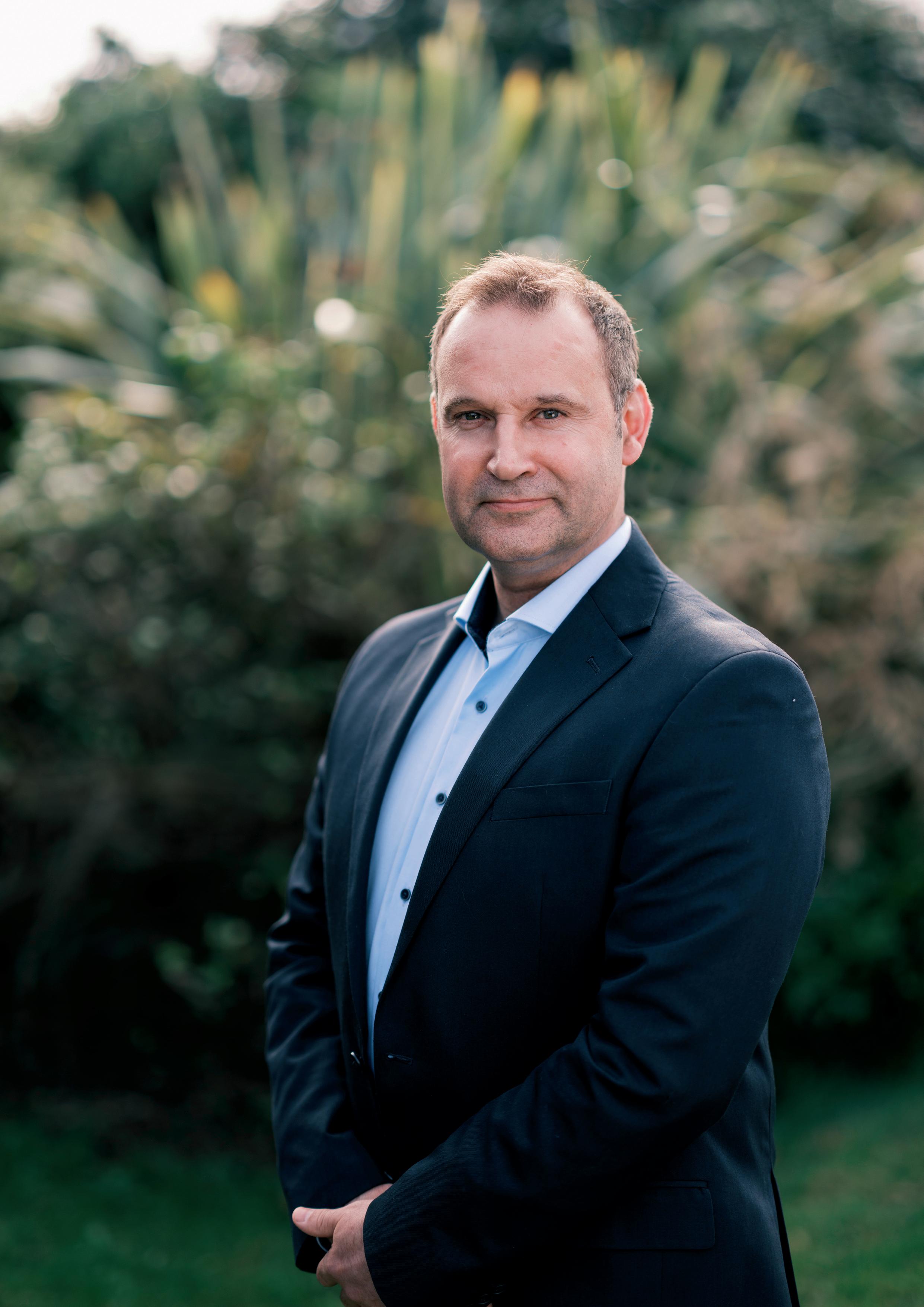


































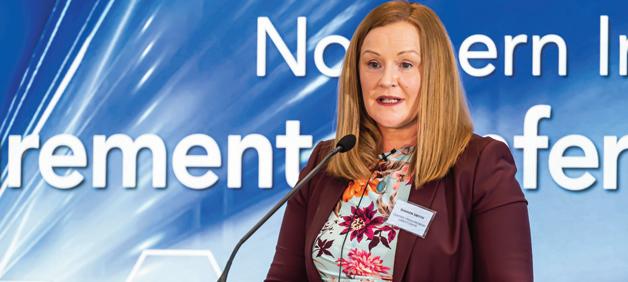
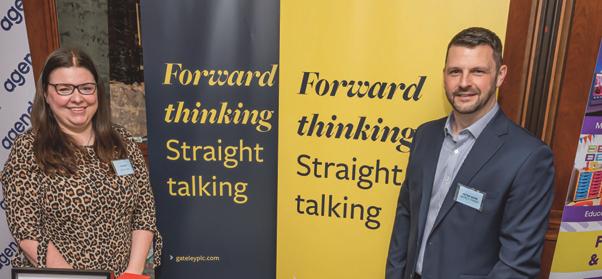
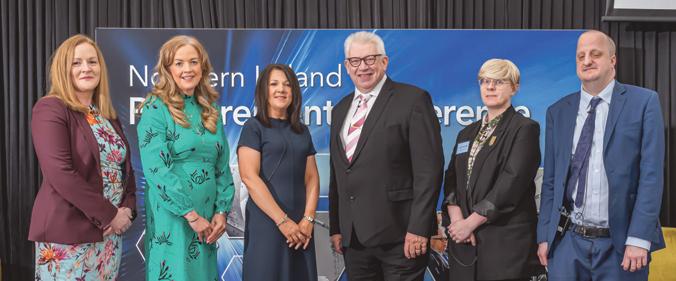










Procurement is an important element of the Northern Ireland economy. Central and local government spends approximately £3 billion per year on procurement, of which £2.7 billion is spent by government departments and their arm’s length bodies. Many private sector organisations also spend significant amounts in the local economy.

A new social value procurement policy came into effect last year in Northern Ireland. Since June 2022, social value must account for at least 10 per cent of the total award criteria for government tenders with the intention to increase to 20 per cent in June 2023, subject to Executive approval. The Northern Ireland Procurement Conference 2023 will examine the progress to date and will look at any challenges and opportunities that have arisen since the implementation of this new policy.


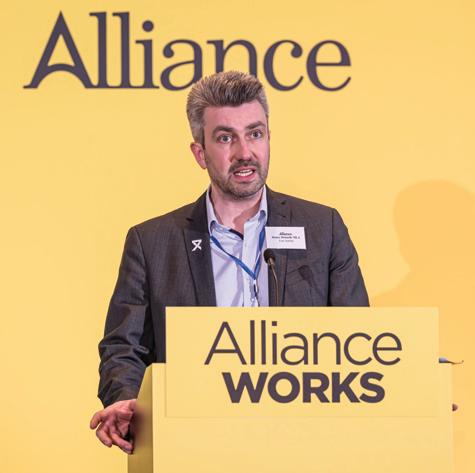

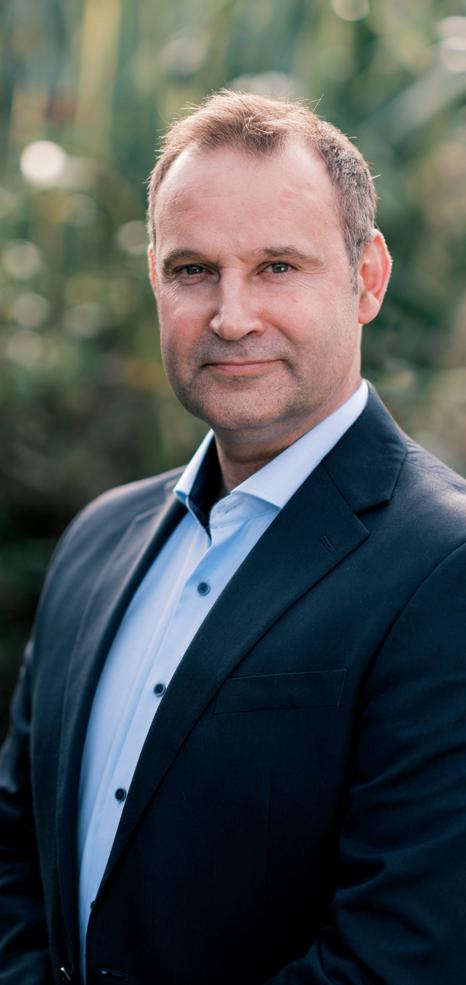
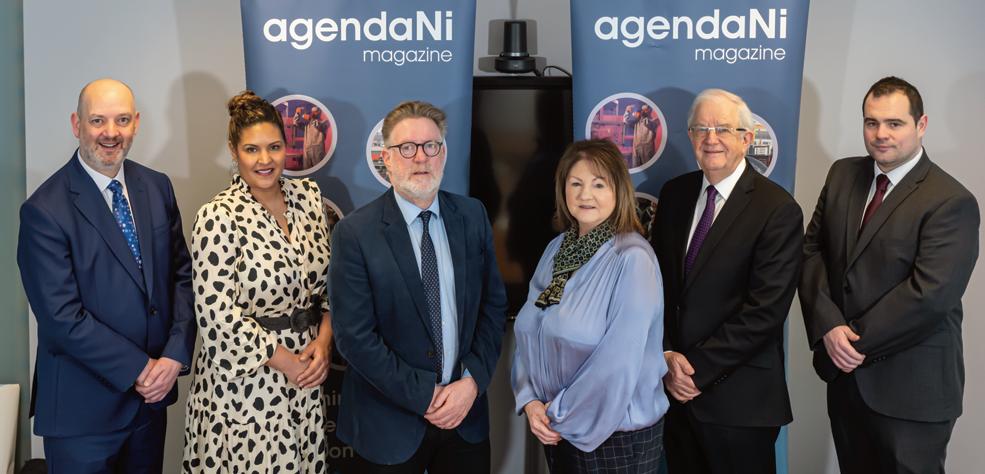
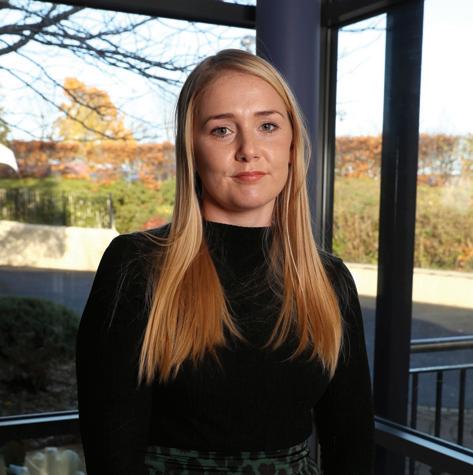

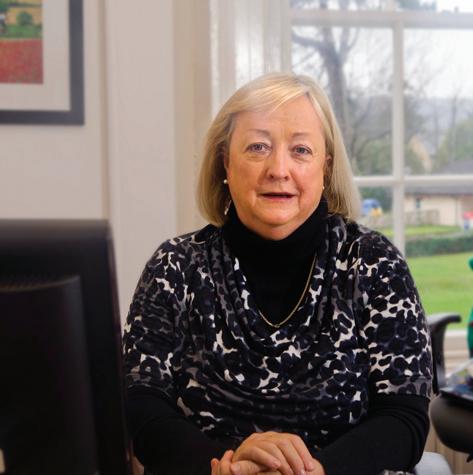





Energy Ireland 2023 will bring together all the key stakeholders in the Irish energy sector to discuss and debate the key drivers of the energy transition and the current energy price crunch. It will look forward to the developments that will decarbonise Ireland’s increasingly integrated energy system.
• Geopolitical context to the energy transition
• Improving Ireland’s energy security
• Developing Ireland’s offshore wind energy resources
• Future electricity system development
• Decarbonising Ireland’s gas network
• Role of renewable energy technologies in the energy transition
• Importance of digital networks in Ireland’s energy future

Speakers include:
• Eamon Ryan TD, Minister for the Environment, Climate and Communications
• Matthew Baldwin, Deputy Director-General DG Energy, European Commission
• Aoife MacEvilly, Commissioner Commission for Regulation of Utilities
• Paddy Hayes, Chief Executive, ESB
• Tanya Harrington, Chair Renewable Energy Ireland
• Dave Kirwan, Managing Director Bord Gáis Energy
• Cathal Marley, Chief Executive Officer Gas Networks Ireland



• William Walsh, Chief Executive Officer Sustainable Energy Authority of Ireland
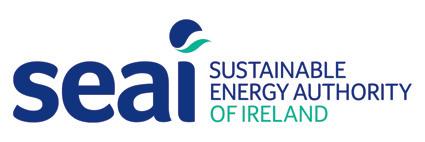
• Niamh McGovern, Partner, Arthur Cox
• Caroline Kuzemko, Reader in International Political Economy, University of Warwick
• Andy Kelly, Director, Afry
• Anouk Honoré, Senior Research Fellow The Oxford Institute for Energy Studies
• Joanne Moran, Generation Director, Energy and Power, Jacobs

Main sponsors



Sponsors
• Klair Neenan, Managing Director SSE Airtricity

• John Reilly, Head of Renewable Energy Bord na Móna
• Richard Murphy, Partner, Pinsent Masons
• Andrew Hickey, Commercial Manager Hitachi
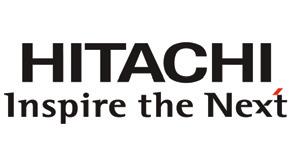
• Colm O’Neill, Partner, KPMG
• Brian Ó Gallachóir, Director MaREI Centre UCC
• Paul Mϋnnich, Director Agora Energiewende
• Catherine Sheridan, Head of Strategy Green Rebel
• Kevin O’Sullivan, Environment and Science Editor, Irish Times
• Michael Galvin, Director of Hydrogen and Sustainable Fuels, Simply Blue Group


• Muireann Lynch, Senior Research Officer Economic and Social Research Institute
• Peter Russell, Director Huawei FusionSolar and Storage Ireland
• Caoimhe McLoughlin, Partner, KPMG
• Darren O’Rourke TD, Sinn Féin
Technology Partner




The Climate Change Commission (CCC) says that “radical action” is required if Northern Ireland is to achieve net zero by 2050.
The distance to 2050 often dilutes the sense of urgency that is required if Northern Ireland is to decarbonise its economy, but the production of three carbon budgets to 2050 has brought into sharp focus the scale of action necessary.
To offer a sense of what is required, if Northern Ireland fully decarbonised electricity generation, made all new cars and vans zero emissions, installed green heating solutions, cut its livestock herd by one-third, and increased afforestation, the region would still fall short of net zero by 2050.
The interim target for the first advised carbon budget is a 33 per cent reduction of carbon emissions by 2030. Now one-third of the way through this decade, this should be a call to action for all sectors.
Reaching net zero by 2050 requires radical decarbonisation policies and actions. Emissions reductions will need to be more than three times faster than their current pace, necessitating action across all sectors of the economy.
The decarbonisation agenda is a global task of finite materials, skills, and green finance; any delay will push Northern Ireland further back in the supply chain queue. Action must begin today.
Our featured think tank with SSE within this issue sees a range of stakeholders gathered to discuss pathways to decarbonisation progress in the absence of local political leadership. Equally, our cover story with Fibrus emphasises that indigenous organisations are pushing beyond the challenges, to deliver for communities, while our round table discussion underpins the role of post-Covid innovation and technology to improve educational outcomes for learners in Northern Ireland.
Editorial
David Whelan, Editor david.whelan@agendani.com
Fiona McCarthy fiona.mccarthy@agendani.com
Ciarán Galway ciaran.galway@agendani.com
Odrán Waldron odran.waldron@agendani.com
Joshua Murray joshua.murray@agendani.com
Circulation and Marketing
Lynda Millar lynda.millar@agendani.com
Events
Jillian Wallace jillian.wallace@agendani.com
Advertising
Gail Kinkead gail.kinkead@agendani.com
Design
Gareth Duffy, Head of Design gareth.duffy@agendani.com
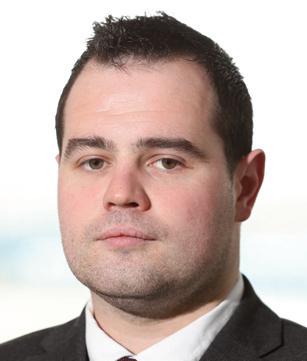
Jamie Hogan jamie.hogan@agendani.com
Subscriptions
Sharon Morrison
Email: subscriptions@agendani.com
Online: www.agendani.com
agendaNi
Owen McQuade, Publisher owen.mcquade@agendani.com
bmf Business Services
19a Maghaberry Road
Maghaberry, Co Antrim, BT67 0JE
Tel: +44 (0) 28 9261 9933
Twitter: @agendani
Web: www.agendani.com
Printed by: GPS Colour Graphics
April 2023 www.agendaNi.com
In a rhetorically similar vein to that of his predecessor Kwasi Kwarteng MP, British Chancellor of the Exchequer Jeremy Hunt MP billed his first Spring Budget as a “budget for growth”.
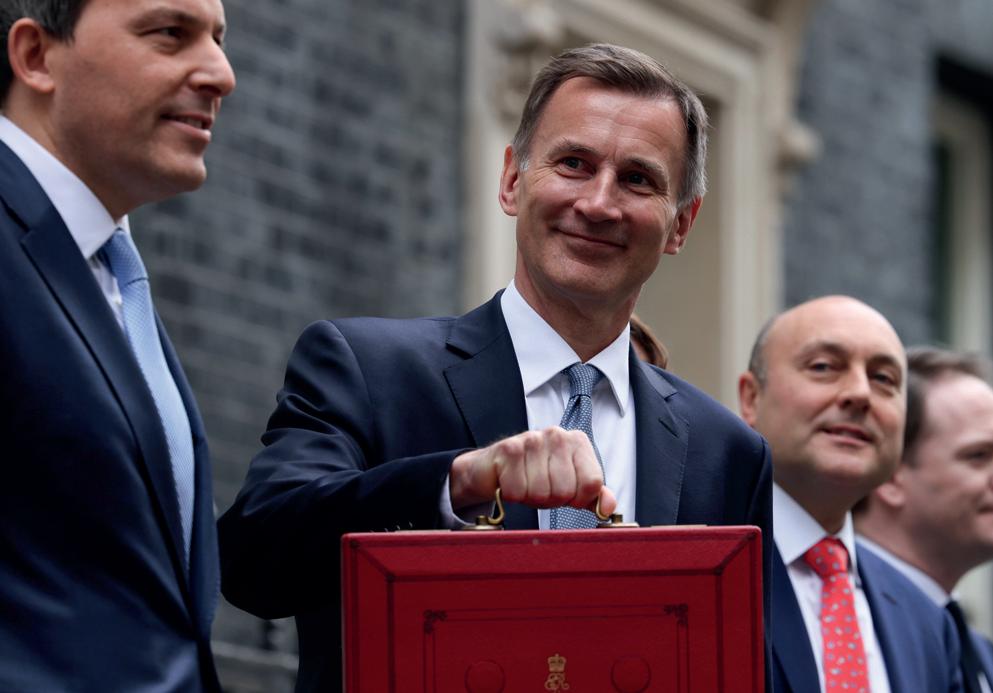
With the budget for Northern Ireland to be fully set by Secretary of State Chris Heaton-Harris MP within an unspecified timeframe, Hunt’s budget has limited scope for Northern Ireland, although there are some small points which will apply throughout the UK.


Hunt has stated that there will be in the region of £130 million more available for public spending in Northern Ireland from the 2024/25 financial year, with an extra £130 million consisting of an extra £121 million for day-to-day spending.
As well as the additional public spending funding, Hunt has
allocated £3 million to tackle the influence of paramilitaries and £40 million in funding for higher education.
However, figures from the UK Treasury show the amount for Executive departments will fall from £13.8 billion this financial year (2022/23) to £13.5 billion next year (2023/24) and £13.7 billion in 2024-25.
With no Executive formed amid the ongoing DUP boycott, Executive departments remain unable to allocate any further funding for Northern Ireland projects without Executive approval. Chris Heaton-Harris MP will formally set out a budget for the region in the coming weeks, although an authorised spend has been allocated to each department under the aegis of the Northern Ireland Budget Act.



Assembly Commission in a written response to a questioned posed by TUV leader Jim Allister MLA, who queried persistent problems with internet connectivity in members’ offices.
Expected to be completed by 30 June 2023, the replacement of the WiFi network infrastructure comes after the Assembly’s Information Systems (IS) Office identified deficiencies in the WiFi service of both signal availability in certain areas of Parliament Buildings, and the reliability of WiFi connections to sustain high bandwidth applications.
Plans to replace the system were revealed by the
“The Assembly Commission has agreed to replace the WiFi network infrastructure, which will include a dedicated internet connection. This project to replace the WiFi network has now commenced and the target date for completion of works is 30 June 2023,” the written response stated. agendaNi understands that, as a contract has not yet been awarded no cost can yet be attributed, and that a procurement exercise is currently ongoing.
The latest round of census results have revealed that only 1.17 per cent of the population of Northern Ireland identifies as lesbian or gay, with 0.75 per cent identifying as bisexual. However, 7.88 per cent of census respondents either did not state their sexuality or answered that they ‘preferred not to say’, suggesting that there may be a substantial amount of the population who do not feel comfortable revealing their sexuality. 90.04 per cent of respondents said that they were straight.
Almost 7 per cent of the population speaks Irish, with the highest numbers recorded in the Mid Ulster and Fermanagh and

Omagh council areas. Meanwhile, 3.32 per cent of the population speaks Ulster-Scots, with rural Antrim areas in Causeway Coast and Glens and Mid and East Antrim council areas recording the highest figures.

Almost two-thirds (62 per cent) of the population travel to work in their own car, with the figure consistent across all council areas apart from Belfast City, with the number of people walking to work more than twice the average of other council areas, and a much greater percentage (8 per cent) of Belfast residents getting the bus to work.
Official figures show Northern Ireland has generated more than half of electricity consumed from renewables in a 12-month period, for only the second time.
51 per cent of the electricity consumed in Northern Ireland in the period between January 2022 and December 2022 was generated from a renewable source based in Northern Ireland, according to the Department for the Economy.

This represents an increase of 9.7 per cent on the previous 12month period (January 2021 to December 2021) and is the second highest proportion on record with 51.6 per cent achieved in the 12 month period December 2021 to November 2022.
In terms of the volume of electricity consumption between

January 2022 and December 2022, some 7,494 gigawatt hours (GWh) of total electricity was consumed in Northern Ireland. Over the same period, 3,825 GWh were generated from renewable sources located in Northern Ireland.
This is the second highest rolling 12-month renewable generation volume on record with 3,868 GWh renewably generated electricity between December 2021 and November 2022.

Of all renewable electricity generated within Northern Ireland over the 12-month period from January 2022 to December 2022, 85.3 per cent was generated from wind, a figure compatible with 82.1 per cent for the previous 12-month period (January 2021 to December 2021).

Secretary of State Chris Heaton-Harris MP has appointed Sarah Ling as the temporary chief electoral officer in Northern Ireland, a role she will hold for the next three months until a permanent successor is found.
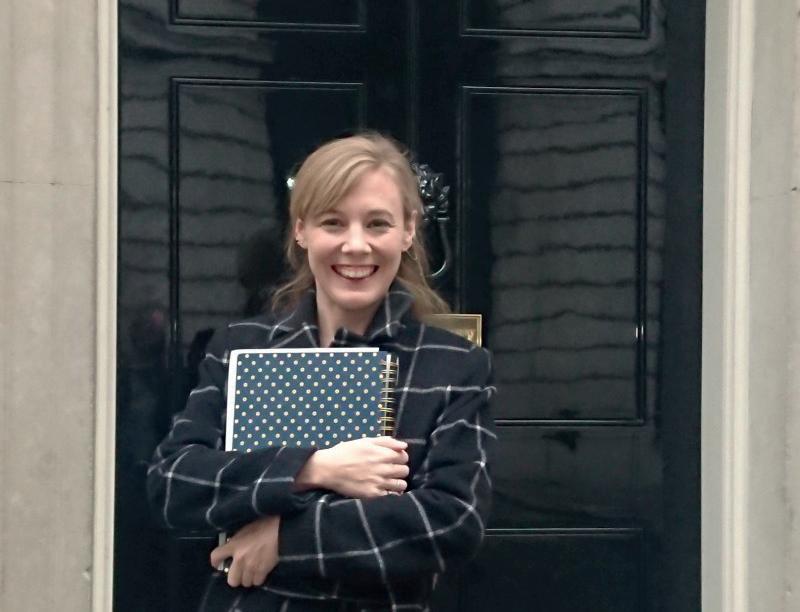
In her role, she will oversee the upcoming local government elections, scheduled for 18 May 2023. She has previously served as a deputy returning officer for several Belfast constituencies in the 2022 Assembly election.
She has additionally been serving as deputy to the chief electoral officer, and is a former electoral service manager for the London Borough of Croydon as well as a consultant for the Association of Electoral Administrators working on the delivery of UK elections.
Ling replaces Virginia McVea, who has left the role to become the head of the UK Maritime and Coastguard Agency, having served as chief electoral officer since 2017.
After a recommendation from the Assembly’s Public Accounts Committee (PAC) in March 2022, the interim Regional Planning Commission held its first meeting in February 2023.


The PAC report states that it was “appalled by the performance statistics” of planning in Northern Ireland and opined that “the Department [for Infrastructure] does not grasp the severity of issues facing the planning system, does not recognise the urgent need for change and has a poor understanding of its role in implementing change”.
The establishment of a regional planning commission has been done on an interim basis, pending the reformation
of an Executive and the appointment of a Minister for Infrastructure, who can sign off on the formal establishment of the commission.
The PAC report stated that a commission will “identify tangible improvements that can be achieved in the short term” which “must focus on problem-solving, delivery, and achieving outcomes within a fixed time frame”.
The interim commission will be independently chaired by Rosemary Thomas, former chief planner for Wales. Following the first meeting, she stated: “I am confident that the skills and experience which I gained in Wales will prove useful, as many of the challenges facing planning across the British Isles are very similar.”

The Department of Justice has published a new draft protocol governing the use of restorative interventions in the criminal justice system in Northern Ireland.
The new protocol considered the adequacy of the existing protocol and sought to establish a fresh approach to the increased use of restorative justice, which will allow for an easier path to rehabilitation.
The document sets out three levels to restorative principles in the Northern Ireland justice system. Level one is accredited restorative justice work, below the criminal threshold; level two
accredited work is restorative justice work relating to the formal Criminal Justice System, and Review of the 2007 Restorative Justice Protocol, and draft 2023 Restorative Justice Protocol four; and level three accredited work is restorative justice work relating to complex and sensitive crime.
Richard Pengelly, Permanent Secretary at the Department of Justice, said: “There has been a significant growth in the use of restorative practices in Northern Ireland and it is therefore incumbent on us to build on that positive work and to introduce a revised protocol that will help and support that growth even further.”
Brexit causes charity funding uncertainty

The ESF has been funding charities to the tune of £40 million per annum for several years. Whilst the UK’s Shared Prosperity Fund is due to replace the £40 million in funding, it has been criticised as having as “lack of detail”, and several Northern Ireland groups are unclear if they will be able to source funding in the new financial year.

Although an application process for £42 million available over two years took place in December 2022 and January 2023, organisations which have applied claim that they have not been told if they will receive funding.

The Levelling Up Department has said that it is working to announce funding decisions “as soon as possible”. However, it remains unclear whether funding will be allocated to groups in time for the expiry of the ESF.
After meeting with DHLUC Minister Dehenna Davison MP, SDLP MP Claire Hanna said: “It appears that funding announcements will be made [the week ending 31 March] about the ESF replacement component of the SPF, but it is also clear that not all previous recipients will be covered. I pressed the need for meaningful engagement with Northern Ireland departments, which has been absent in the design of this scheme so far.”




Originally designed to mitigate the impact of Brexit on the unique circumstances on the island of Ireland, the Northern Ireland Protocol averted the need for a hard border on the island. However, as it became apparent that checks and controls would instead be shifted to the Irish Sea, the Protocol became politically divisive.
Some interpreted the Protocol as equipping Northern Ireland with distinct economic advantage, with goods able to move from Northern Ireland across the whole of the EU and into Britain, but for others, the Irish Sea border not only threatened the fabric of the United Kingdom but caused practical disruption to some trade coming into Northern Ireland.
arrangements for Northern Ireland have been refined, and despite opposition from the DUP, formal agreement between the UK and the EU has been reached.Credit: Simon Walker / No 10 Downing Street.
The UK’s repeated attempts to renegotiate the legally binding post-Brexit agreement soured relationships with the EU, but after months of erratic negotiations, and a change of Prime Minister in the UK, the Windsor Framework has been designed to essentially reduce the significance of the Irish Sea border.
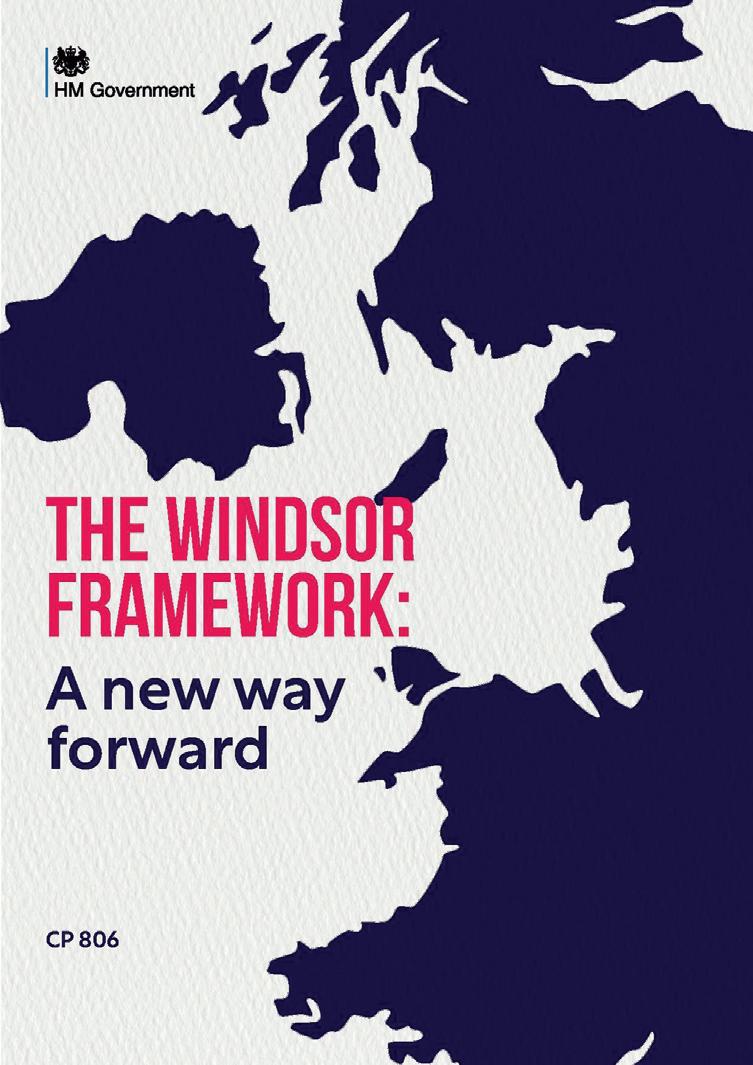


Northern Ireland will continue to follow EU rules for goods trade, but the new agreement sets out processes concerning trade, state subsidies, and value added tax, which encourages light-touch regulation.

The prospect of green and red channels for goods had been proposed as far back as then-Prime Minister Theresa May’s ‘backstop’ agreement but, until now, failed to emerge out of a variety of objections levelled at any formal agreement to date. The Windsor Framework, however, has successfully navigated a potential Conservative Party backbench rebellion in the UK, meaning that goods coming from Great Britain to Northern Ireland will undergo less scrupulous (green lane) checks, than those destined for the Republic of Ireland and the EU single market (red lane).


One of the mechanisms for enabling this is a trusted trader scheme which, according to the EU, promises “an unprecedented reduction” of customs paperwork. “Not for EU” labels on agrifood products will see the EU accept UK public health standards in Northern Ireland, allowing products such as meat to travel from Great Britain to Northern Ireland. The successful evolution of the application of such labels promises the prospect of identity checks on consignments falling to as low as 5 per cent by 2025.
The EU’s leniency is contingent on the UK’s agreement to share near-real-time customs data, which can then be used to identify any divergence or fraud. On both sides of the negotiations, these steps were being welcomed as having greatly reduced the number of checks that will take place once the implementation of the labels is complete in 2025. British Prime
Minister Rishi Sunak MP has asserted that the changes “removed any sense of a border in the Irish Sea”.

Agreement that parcels and online deliveries from Great Britain to Northern Ireland will not require customs paperwork has been welcomed. Businesses using approved parcel carriers will also be party to simplified customs procedures, while those were forced to pay tariffs for the importation of specific types of British-made steel following a change to EU quota rules will no longer have to pay said tariffs.
Another key stumbling block that has been overcome has been the standoff over VAT, with Sunak having said during his time as Chancellor of the Exchequer that it would be unacceptable for Northern Ireland to not adopt UK VAT rate changes. Northern Ireland will now be included in UK VAT rate changes, but in return the UK Government has agreed not to undercut minimum EU VAT rates, except for on immovable objects, such as household solar panels, with a comprehensive list of such items to be excluded to be drawn up in the next five years.

Meanwhile, Article 10 of the Protocol, which stipulated that any subsidy decisions that would affect the goods trade in Northern Ireland would have to be referred to the EU for approval, had been consistent source of unionist and British hostility, with suggestions that it amounted to a violation of the sovereignty of the UK.
While Article 10 has remained intact through the negotiations, the UK Government has said that “stringent” tests will now apply, placing 98 per cent of the subsidies for Northern Ireland beyond the reach of the EU.
Much attention has been allocated by both the media and the political parties to the Stormont Brake, a mechanism designed to assuage unionist fears that the Protocol would mean that the laws of the EU would be automatically implemented in Northern Ireland. Criticised as a token gesture to give the illusion of sovereignty in some quarters,
the Stormont Brake is thus designed to allow the Assembly to apply an “emergency brake” in “exceptional circumstances” if 30 MLAs from at least two parties vote to block the adoption of EU single market rules.

The brake will mean that any rule that provokes a one-third rejection will then be referred to Westminster and Brussels for discussion, with the EU obligated to take “remedial measures” if Westminster decides not to implement measures the EU deems necessary.
The mechanism could possibly open the door for the DUP’s return to the institutions. For instance, there is a possibility that the party could leverage unequivocal backing from the Westminster government on such challenges – which is not a given despite how it may be portrayed – in exchange for returning to Stormont. Westminster has said that it will legislate to ensure it will take account of Stormont demands in the event of the brake mechanism being triggered.
Likewise, bureaucratic red tape that had been the source of unionist perceptions that the Protocol had diminished the equality of Northern Ireland’s place within the UK have also been addressed. For instance, having previously needed to be microchipped and in possession of a passport to travel from Britain to Northern Ireland, pets will now only require a travel document. Similarly, medicines approved for use in the UK that have not yet been approved for use in the EU will now be available in Northern Ireland, and seed potatoes and plants banned from importation for fear of diseases carried will now be able to move freely to Northern Ireland under a special plant health label.
Among the most strident demands of Northern Ireland unionist and the maximalist Brexit wing of the
Conservative Party has been the end of the jurisdiction of the European Court of Justice (ECJ) over Northern Ireland and an end to the court’s role as the Protocol’s adjudicator. The Windsor Framework does not achieve this and neither does it deliver on another key unionist demand for the creation of a dispute resolution mechanism with international arbitration.
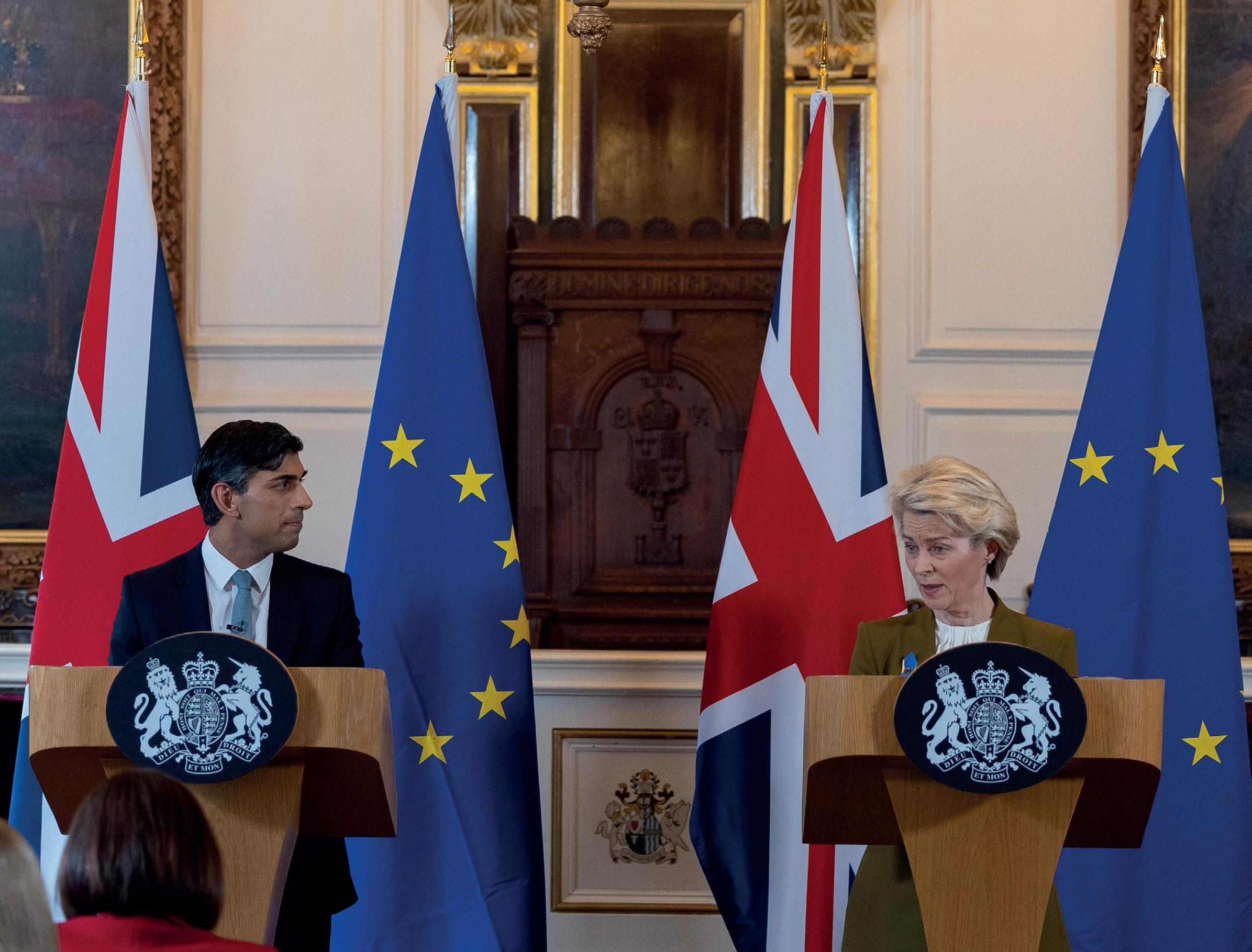
Westminster has instead argued that the implementation of the green lane trading system and its narrowing of the number of EU laws that will apply to Northern Ireland – reducing the total by some 1,700 pages – mean that the original Protocol deal will no longer apply to Northern Ireland and only 3 per cent of EU law will be applicable.
The command paper published by the British Government explains its position: “The rules that do apply are there solely, and only as strictly necessary, in order to maintain the unique ability for Northern Ireland firms to sell their goods into the EU market.”


The £14 million new planning portal became operational on 5 December 2022, with its stated aim to “provide a modern streamlined service making it easier for users to engage with the planning process” and to submit paperless applications online. Mid Ulster District Council was the only of the local councils not involved in the process, with the council opting to create its own planning portal.
The new system has however been criticised as “not for purpose” and “unacceptably poor” by the Royal Society of Ulster Architects (RSUA), who also stated that the new system was worse than its predecessor in some respects. Concerns raised included an inability to update applications once they have been submitted to the system, which is “essential when dealing with detailed drawings which often need to be amended”, read line boundaries not appearing on some maps, and that tracking applications was “very slow and unresponsive”.
RSUA Director Ciarán Fox warned: “In the short term, it affects cash flow. In the medium term, there is a real concern that it could act as a further brake on the local construction sector at a time when it is facing many other challenges.”
Concerns have also been raised at council level, with Armagh City, Banbridge and Craigavon Borough Council taking the decision to write to the system’s developer TerraQuest to stress the “need for urgency” to resolve the issues within the system. The Council’s Head of Planning, Damien Mulligan, had received 274 applications from the opening of the new system on 5 December 2022 to 1 March 2023 and had issued just 92 decisions in that time.
In a statement to agendaNi, the Department for Infrastructure said: “Since the launch of the new portal, there has been a growing increase in the number of planning applications submitted online. On average over 66 per cent of planning applications and 99 per cent of property


certificates are now submitted online. Like many large-scale system implementations, with multiple organisations and stakeholders involved, there have been some initial problems which all partners are working with the supplier to urgently resolve. A number of the issues have already been resolved with remaining issues due to be addressed as part of a phased priority roll-out of software releases in the coming weeks of March and April… We are also continuing to engage and listen to our stakeholders including the RSUA and Construction Employers Federation (CEF) to respond to concerns raised.”
The complaints come at a time when planning fees in Northern Ireland are set to increase for the first time since 2019, with 12.3 per cent price increases coming into effect from 6 April 2023. This move is said by the Department to be in line with the Public Accounts Committee’s (PAC) recommendation that the planning system be made financially sustainable. Also notable in the area of planning reform and as a result of the PAC’s recommendations is the convening of the new interim Regional Planning Commission, which met for the first time in February 2023. The commission, chaired by former Chief Planner for Wales Rosemary Thomas, will “help guide and support the positive progression of the planning improvement agenda”.

The new Planning Portal funded by the Department for Infrastructure and 10 of Northern Ireland’s 11 local councils was launched in December 2022, but has been decried as “slow and unresponsive” and “unacceptably poor” by users.


Chief Operating Officer of Fibrus, Shane Haslem, talks to David Whelan about the transformational impact that Fibrus’ full fibre broadband rollout is having on rural communities across Northern Ireland.


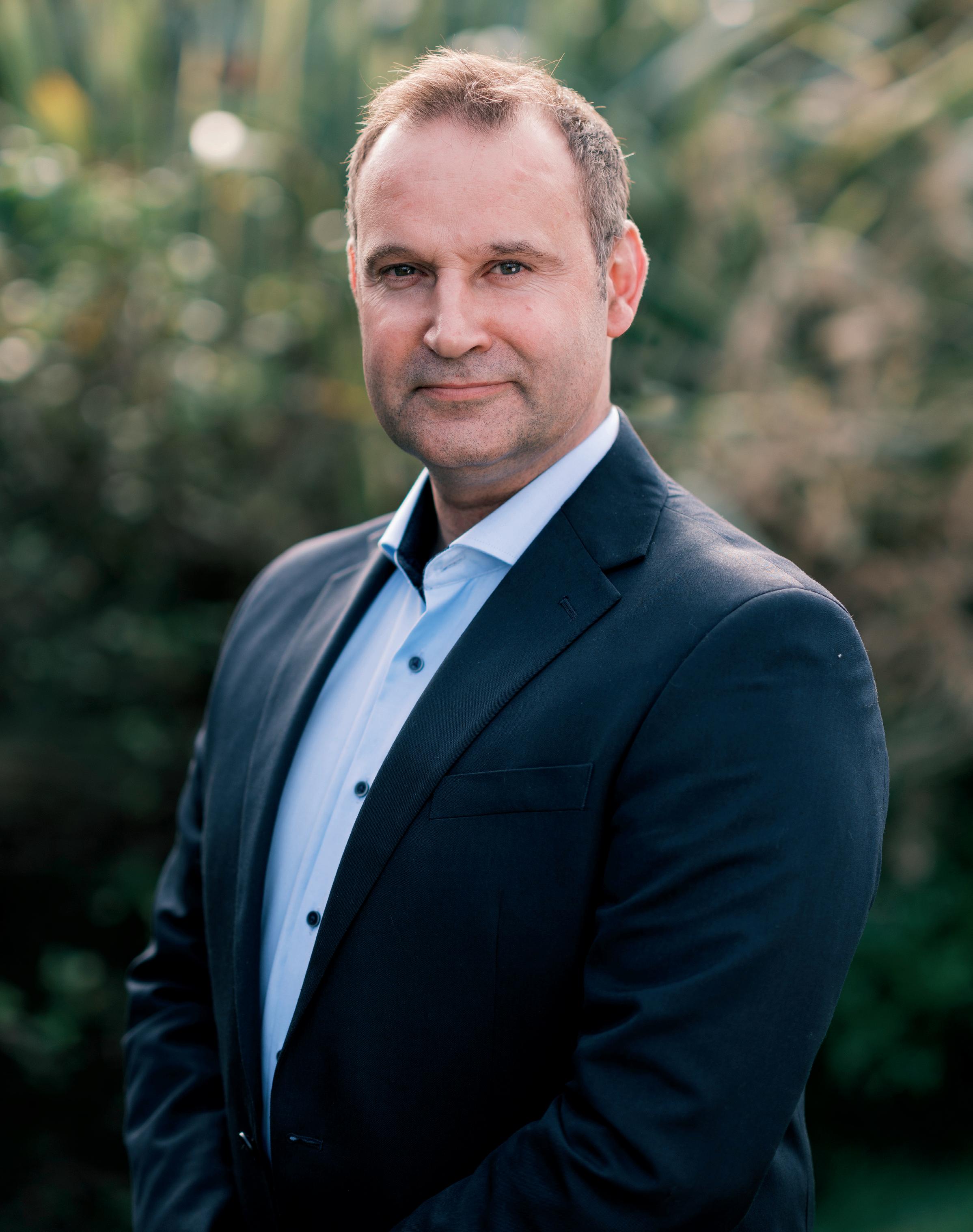
Founded in July 2019, Fibrus, born into a pandemic, has quickly established itself as one of the leading providers of full fibre broadband in Northern Ireland and has ambitious plans to reach over one million premises across the UK.
In March 2023, the Belfast headquartered company announced the delivery of network and services to 250,000 premises across Northern Ireland and the north of England, an impressive milestone for an organisation which cut its teeth targeting smaller towns and villages as well as the most rural areas across the UK.
However, while the numbers point to business success, Haslem insists that the real measure of Fibrus’ accomplishments on the ground lies in the positive impact these services are having on individuals, communities, and businesses across the region.
“The pandemic served not only to highlight the critical importance digital connectivity has in our society, but also the digital divide that exists between urban and rural areas in Northern Ireland,” he explains.
“Fibrus came into being to address a noticeable gap in the market, where large swaths of our rural communities had been missed by high speed, reliable broadband provision and effectively left behind in digital poverty.”
Underpinning a need to narrow the digital divide in Northern Ireland, the Chief Operating Officer indicates that the testimonies of teachers having to travel great distances to connect to a reliable network, of students unable to access online teaching resources and of businesses limited by poor broadband connectivity during the pandemic, were not isolated instances.
“Digital connectivity has become such a massive part of our daily lives that it is now largely regarded as the fourth utility. The full fibre network connectivity we are providing means that individuals, households, and businesses in areas such as Belleek or the Glens of Antrim have the same level of connectivity as those in Belfast, Manchester or London.
“It is life-changing for the individual, but also for the economic prospects of local communities and Northern Ireland PLC as a whole. Network connectivity drastically improves the chances of rural communities to retain and attract talent, foster entrepreneurship, and become appealing places to live, work, and do business.”
Historically, some rural areas of Northern Ireland have struggled to get 1Mb download speed, primarily because of poor and outdated infrastructure. These areas are deemed ‘hard to reach’ given that they are often further away from telephone exchanges, resulting in slower speeds. Additionally, the sporadic nature of dwellings makes the establishment and maintenance of quality rural internet connections expensive.
To this end, Fibrus’ offering of full fibre broadband is important. “Many people are unaware of the two different types of broadband – copper wire and fibre-optic cable. For years, phone and TV companies have run slow copper phone networks into their customers’ premises and called that fibre broadband. Fibrus is a full fibre broadband company meaning that we only use a full fibre optic cable all the way from the network to the premises, providing a high speed, reliable connection. The underlying fibre optic technology we use to build our network is also future proofed to support higher speeds to the home as new technologies and trends manifest over the next 20 to 30 years,” the Chief Operating Officer explains.
Fibrus is well aware of the need to
minimise environmental disruption, and Haslem reiterates that around 80 per cent of the rollout reuses existing network. The re-utilisation of existing network builds on the organisation’s green credentials, which includes a commitment to be a net zero organisation by 2040.
The recent roll out of a fleet of electric vehicles underpins plans to have all its vehicles switched to electric by 2025, following on from other company-wide initiatives such as a paper-free office environment, renewable energy supply to company premises, and biodiversity projects.
Fibrus’ initial ambitious rollout of full fibre infrastructure to build network to smaller towns and villages across Northern Ireland was “supercharged” by the award in November 2020 from the Department for the Economy of Project Stratum.

Project Stratum, developed to improve connectivity for premises unable to access broadband services of 30 Mbps, primarily across rural areas of Northern Ireland, is the largest publicly funded telecommunications infrastructure project of its kind here.
At the end of March 2023, Project Stratum surpassed 60,000 premises against the 85,000 target through to March 2025, and is ahead of schedule. Haslem points to the organisation’s agility and the utilisation of technology throughout its workstreams from the beginning, as central to the ability to 4

“Digital connectivity has become such a massive part of our daily lives that it is now largely regarded as the fourth utility."
Shane Haslem, Chief Operating Officer of Fibrus
mitigate disruption during the pandemic.
“In addition to Project Stratum, we are rolling out our own commercial network across smaller urban towns and villages, targeting a total build across Northern Ireland of 400,000 and we plan to expand on this,” outlines Haslem.
Project Stratum is financed by the UK Government, the Department for the Economy (DfE), the Department of Agriculture, Department of Culture, Media and Sport (DCMS), the Department of Agriculture, Environment and Rural Affairs (DAERA), and Fibrus. Their combined investment is £197 million. In addition to this, Fibrus is investing over £48 million to support network build costs.
“This is a once-in-a-generation
infrastructure project. This critical infrastructure is addressing a historical lack of investment in rural communities from a broadband perspective and touches the most hard-to-reach locations across Northern Ireland,” explains the Chief Operating Officer.


“To offer an example of the reach of Project Stratum, we have a customer with full fibre broadband capable of 1 Gbps bandwidth but, incredibly, they do not have running water.”
Haslem reiterates the community connection Fibrus’ work retains and the mutual benefits the rollout of a network is creating. As part of Project Stratum, the company has recorded 3,405 new
entrant training weeks to date, significantly above a target of 2,640 net hours for the contract.
The company now employs 400 people directly, with another 450 employed via its sister company and build partner Viberoptix, who have developed a large subcontractor base to underpin build plans.

“We want to reiterate that when we commit to an area, we commit wholeheartedly, developing the network in full, but also bringing the benefits associated with investment, such as job creation. We are proud that we are employing and utilising the people and skills from the area that we are investing in. Additionally, where we see a gap in skills provision, we are establishing skills academies to develop those skills and contribute to the economic and social improvement of rural areas.”
Underpinning this commitment to communities, Haslem explains that Fibrus has recently announced the doubling of its Fibrus Community Fund. Delivered through the Community Foundation NI, the fund which aims to help address digital poverty in rural areas, with a particular focus on organisations that support older and younger people,
"The underlying fibre optic technology we use to build our network is also future proofed to support higher speeds to the home as new technologies and trends manifest over the next 20 to 30 years."
has committed to a total contribution of £120,000 by the end of 2023.
“It is embedded in our culture that we continue to support projects which are specifically aimed at young people who have a need for increased access to technology or connectivity, as well as initiatives that combat digital exclusion amongst the elderly or those more vulnerable in our society,” explains the Chief Operating Officer.
Fibrus has also recently completed the build programme for the Full Fibre Northern Ireland (FFNI) Consortium of Councils and BSO. FFNI contracted Fibrus to deliver full fibre service to over 900 public sector sites across Northern Ireland.

Such has been the success of Project Stratum to date, Haslem explains, that it is often used as an exemplar for the potential impact of the UK Government’s recently announced Project Gigabit programme, the largest broadband rollout in British history backed with £5 billion to deliver faster connections to hard-to-reach areas.
In 2022, Fibrus expanded beyond Northern Ireland into Great Britain, initially targeting 8,000 properties in their first connectable area of Penrith, Cumbria. The commercial expansion into the north of England was followed at the end of the year by the company becoming the first to be awarded a contract under Project Gigabit, a £108 million contract to deliver to around 60,000 premises in Cumbria.
In what has been hailed as a huge boost for jobs and skills for Cumbria, Fibrus has committed to creating at least 90 apprenticeships and establishing an apprentice training academy at Newton Rigg, near Penrith, in partnership with Viberoptix.
Haslem explains that Fibrus’ commitment to changing the lives of people living in regional areas has grown. “This win helps us further our mission and commitment to bring fast, reliable, and affordable broadband to all areas in which we build,” he says.
Haslem explains that the expansion into Great Britain does not mean that Fibrus has reduced its ambitions for Northern
Ireland. “As an organisation we want to constantly evolve and deliver the best solutions for all our customers. While Project Stratum and our commercially funded build in Northern Ireland are delivering speeds that will see us as one of the best-connected regions in Europe, we are also keenly aware of the future needs of our customers.
“Emerging technologies are continually pushing bandwidth demands in the home and in businesses. Offering our customers best-in-class broadband services is what we pride ourselves on as a company. The demand for higher speed services is growing and we see consumers connecting more and more devices and consuming much more data.”

In response, Fibrus is beginning to rollout the use of XGS-PON technology in upgrades to its network to support broadband products at 2 Gbps and above having already connected its first customers in Rathfriland. Haslem says that as each area is upgraded, it will update the market and provide a rollout schedule in due course.
“Over the next number of years, we are
expecting to see the demand for 10 Gbps capable networks increase and, as such, we are committed to building the best network possible for our customers.
“We are investing in our future by preparing for a rapid upgrade via XGSPON access technology,” he adds.
Fibrus is also devoted to improving customer service. “We are heavily investing in new ways of working, implementing new technologies and hiring passionate and dedicated departmental colleagues to help drive our customer experience mission.”
Concluding, the Chief Operating Officer says that the ambitious growth of the network is happening in parallel with the ambitious growth of the organisation, whose head office is in the city centre, itself. In August 2022, the company opened its Service and Network Operations Centre at Dargan Crescent in Belfast, which Haslem says will act as a central hub for Fibrus’ service delivery function and represents “another major investment in the ever-growing company in people and in the Northern Ireland economy”.
Haslem was appointed Chief Operating Officer of Fibrus in March 2022, having previously worked as commercial and project director. He has over 20 years telecoms experience, including senior engineering and designing roles in Energis and Cable & Wireless. Prior to joining Fibrus, Haslem worked for eir, rising from senior engineering pre-sales commercial roles to general manager. He is a graduate of Ulster University in computing science. Outside of work, Haslem is a sports enthusiast and enjoys football, cycling, and time spent with his family.
“We are heavily investing in new ways of working, implementing new technologies and hiring passionate and dedicated departmental colleagues to help drive our customer experience mission.”
Announced as part of the Department’s Energy Action Plan for 2023, the final design of renewable electricity support is expected to be published this year, alongside a pathway and timeline for the support being in place.




No firm timeframe has been attached to the scheme’s implementation, however, as the action plan indicates the delivery of actions will be subject to resources being made available. The continued absence of the Northern Ireland Executive and “very challenging current budgetary pressures” are likely to delay implementation.
The support scheme is one of several actions for 2023 outlined in the second iteration of the Energy Action Plan, that align with the

Department’s Energy Strategy – Path to Net Zero Energy published in December 2021. Also included in the action plan is a pledge to commence implementation of a strategy to identify skills needed from the education and training sectors to decarbonise energy.
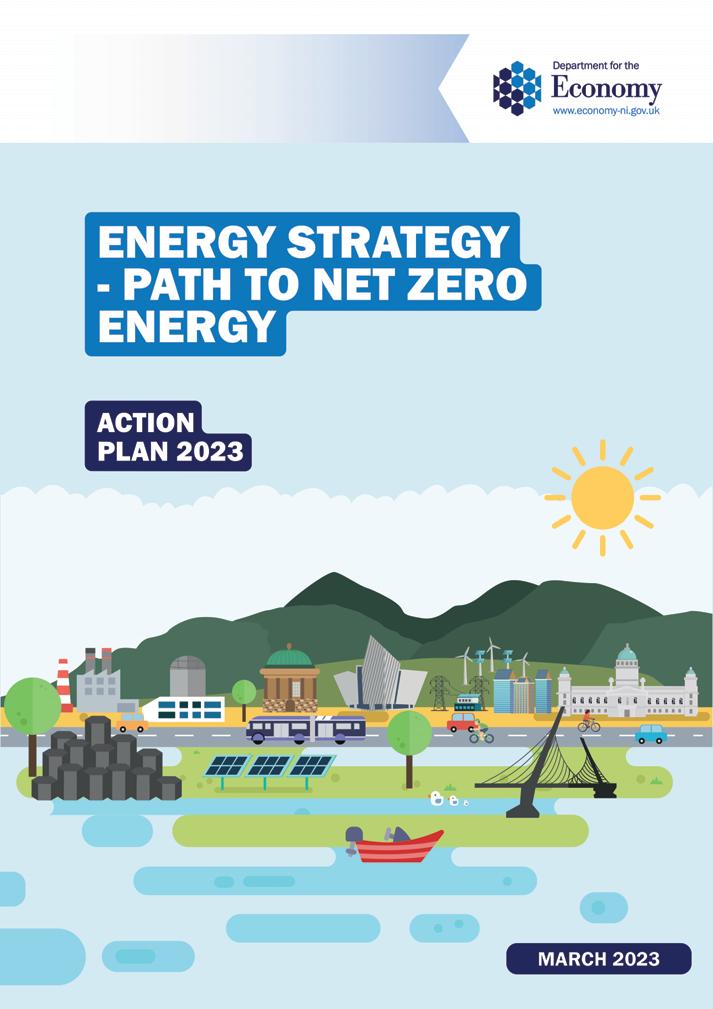





The provision of an energy skills audit had been a well-received component of the 2022 action plan. While it was not completed in 2022, the Department for the Economy emphasises that it remains a priority and has signalled April 2023 as a new date for delivery.
In relation to the consultation on Policy Options
The shape of a future renewable electricity support scheme will be revealed later in 2023, the Department for the Economy has indicated.
for the Energy One Stop Shop Implementation Plan, opened in October 2022. The new action plan indicates delivery of an advice service, subject to funding, and a multi-year implementation plan for the services reflecting the outcome of the consultation.

In relation to fuel poverty, the Department for Communities failed to implement the 2022 pledge to establish a crossdepartmental steering group which would develop and deliver actions to reduce fuel poverty. Rather, the Department has indicated that it “commenced work on developing a long-term Fuel Poverty Strategy and Action Plan”. The 2023 action plan pledges to complete the first phase of consultation and engagement on a new Fuel Poverty Strategy, but offers no timeframe for the strategy’s publication.
The Department for the Economy has rolled back on its initial plan to launch a domestic energy efficiency scheme in 2022, stating that delivery of a pilot domestic efficiency scheme “would not be feasible”. A move to instead focus on the development of a multi-year energy efficiency intervention programme to deliver retrofits is reflected in a new commitment to issue a statement of intent and launch a cross-departmental consultation on energy efficiency in 2023. Likewise, a non-domestic energy efficiency scheme was not launched in 2022, as indicated. However, the Department has said that in 2023 it will, along with Invest NI, deliver a programme incorporating tailored information, advice, and technical consultancy to support energy efficiency and decarbonisation, along with financial support open to eligible businesses.
In relation to the replacement of fossil fuels, alongside the design launch of a

new renewable support scheme the Department plans to issue a consultation on a low carbon heat support scheme in 2023.
Following on from the establishment by the Department of Agriculture, Environment and Rural Affairs (DAERA) of the Inter-Departmental Biomethane Working Group (IDBG) to progress the delivery of sustainable biomethane production in Northern Ireland, the action plan contains an objective of issuing a call for evidence on the options for supporting biomethane production in Northern Ireland.
Additionally, in 2023, the Department for Infrastructure will lead a consultation on the draft regional strategic planning policy for renewable and low carbon energy. The Department says that responses to the consultation will be considered with a view to making any legislative change in relation to heat pumps as early as possible in 2023.
Interestingly, despite some progress on the 2022 pledge to develop an action plan to deliver 1GW of offshore wind from 2030, with a Statement of Intent with the Crown Estate (TCE), towards offshore wind seabed leasing for Northern Ireland published on 16 January 2023, the 2023 action plan has no direct actions towards offshore wind.
Equally, the 2023 action plan makes no mention of hydrogen.
Finally, on delivering a flexible, resilient, and integrated energy system, the Department says that following the completion of a cost benefit analysis in 2022, which concluded that the installation of smart meters for all electricity supply points was a necessity, the existing pilot will be built upon a plan for electricity smart metering in Northern Ireland to be published early in 2023.
Earlier this year, we saw alleged surveillance balloons over USA and a decision to shoot them using a billiondollar F35 fighter plane. What is remarkable about that story is the global media focus on the effort to stop one or two balloons compared to the quiet
efficiency, every second of every day, in cybersecurity to block what we could equate to ‘electronic cyber-balloons’ aimed at surveillance on people, devices, and data.
Every organisation in Northern Ireland has a range of challenges, but one that is constant and rising is cybersecurity. Like everywhere in the UK, and indeed the world, a skills shortage exacerbates the risk, often on a legacy estate of multiple technology types. Is there hope for modern executives and IT leaders in this rising challenge?

The good news is yes. Next-generation technology (as with many aspects of modern life) is making efficient solutions that keep ahead of the emerging cybersecurity threat. The best practice seen in many large and small
organisations, uses two words that assist any strategic action plan to resolve the challenges outlined above: Convergence and consolidation. Gartner has embraced such consolidation in its Top Strategic Technology Trends for 20221 report, recommending something called a cybersecurity mesh architecture (CSMA). Fortinet has been driving this solution set by the market-leading Fortinet Security Fabric2 for a decade. This type of integrated and automated security is seen by many as the optimal ‘convergence’ that can defeat an increasingly automated threat.
How serious is that new threat automation risk today? Before the wellknown ‘Log4J’ attack that hit global networks in late 2021, news of such a major vulnerability breaking typically saw a few days before a sharp rise in global attack levels. Hence, we do need to automate to keep ahead and drive ‘convergence’ into an integrated cybersecurity estate (like the CSMA concept).
Consolidation is the long-term advantage of a sole vendor partnership, with one that allows full integration and
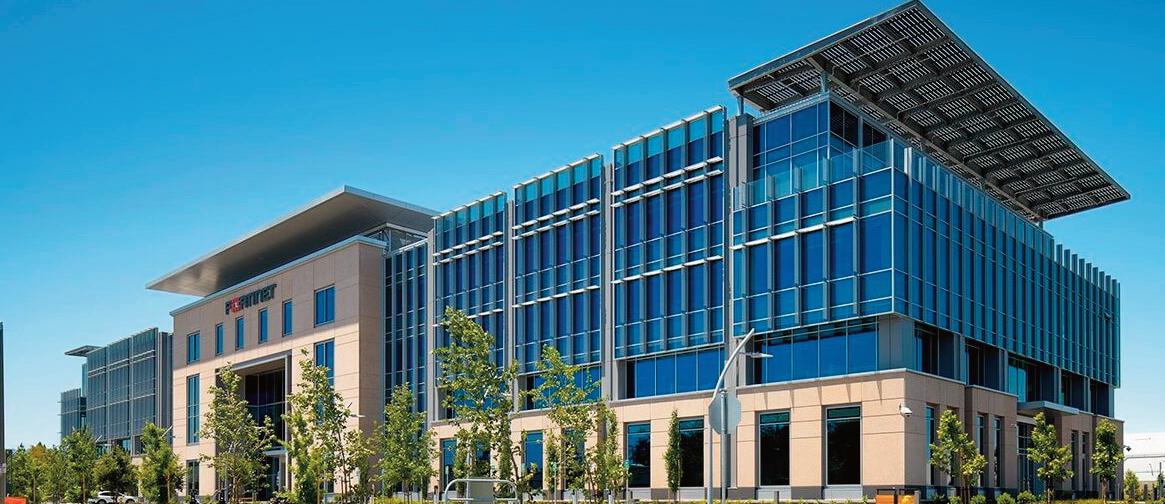
Director, Government Strategy at Fortinet UK, Chris Parker, outlines how Fortinet’s in-house design of processors and solutions can help organisations stay a step ahead of bad actors.
the consequent automated cybersecurity. For organisations that need several years to phase out legacy purchases then choosing a vendor with an open-ecosystem is essential to allow adequate connectivity to prop up integration in a complex estate.
Northern Ireland IT solutions can thus benefit directly from shared global excellence in cybersecurity. From governments to universities and from banks to small businesses, Fortinet uses the same best-in-class technology suite. Many people ask how Fortinet’s value remains so competitive and the answer is the Fortinet policy of making its own processors and solutions ‘in-house’. Along with less supply chain risk or delays, this allows Fortinet to offer the best value, on time and often with more security for the same budget.
Being trusted is an important part of the Fortinet ethos seeking a long-term partnership that is mutually beneficial. At Fortinet we offer you our customers a path to transformation via consolidation, allowing the technology you have invested in to automatically defend against the equally-automated approach from the bad guys and thus provide you with the most integrated and the most competitive value offering in the market.
At Fortinet we believe in providing our customers with Cybersecurity, everywhere you need it.
Lean IT teams can quickly deploy solutions to specifically suit them, onpremises or in the cloud. Consistent security is maintained regardless of where data resides, how users connect, or how the business shifts across network, endpoint, and cloud security:
• unified networking and security to simply deployment and support;
• integrated endpoint security to support hybrid workforces; and

• centralised management and broad reporting and analytics. We offer quick and easy guides3 to how you can start to secure your organisation today for a safer tomorrow.
Chris Parker is attending CyberUK 2023 in Belfast ICC on 19-20 April where Fortinet are sponsors. Fortinet lead for the Team based in Northern Ireland is Graham King; to visit us at CyberUK or for questions on how to gain world class cybersecurity you can contact Graham at gking@fortinet.com
Profile: Chris Parker Chris Parker joined Fortinet UK in 2020. He is a strategic leader who has designed and led international operations at national and multinational level. Senior Corporate roles include: $1 billion Infrastructure project director, COO global oil exploration corporation, and founder of three consultancy companies. Chris is a Fellow of the Tällberg Foundation, holds a master’s degree in technology and two post-graduate diplomas in strategic management.
1. https://www.gartner.com/en/information-technology/trends/top-strategic-technology-trends-cybmesh-gb-pd
2. https://www.fortinet.com/solutions/enterprise-midsize-business/security-fabric 3. www.fortinet.com/solutions/small-business/cybersecurity



As I reflected at the end of International Women’s Day this year, I have to say that it really felt like there was an awful lot of virtue signalling going on, as everyone from politicians to global businesses to Instagram ‘influencers’ pledged their support to gender equality. I witnessed little to no pledges to action, writes Lisa Wilson, Nevin Economic Research Institute (NERI).
One of the things that really got my goat on International Women’s Day this year was the trending of the phrase: ‘Here is to strong women: May we know them. May we be them. May we raise them.’ I lost count of the numerous pictures I saw posted on social media pages quoting the above.
Not one to usually be triggered by topics that are trending on social media, my frustration was definitely coming from a sense that, even on International Women’s Day, the predominant solution to female disadvantage and inequality seemed to be one which was based on (women) making improvements in the raring of our daughters.
As a mother of two daughters, who as part of my job as an economist carries out research on gender inequalities in the labour market, I felt particularly miffed because I know that even if I succeed in this raising of ‘strong women’, if government, businesses, and men do not take action, it is likely that in the future my daughters will experience disadvantage as a result of their gender when they engage in paid work.
When we look at the reality of how gender gaps in pay come about, the reality is that women are performing extraordinarily when it comes to their role in trying to shift gender pay disadvantages in the labour market. Women are doing this to such an extent that they outperform men in terms of their productivity/pay yielding characteristics in the paid labour market. That is women, on average, have more of those characteristics which are associated with higher pay for work. For example, they are better educated, and on average, they work in better paid occupations.
But still, when we compare the hourly pay of men and women, we see that men continue to receive higher returns for their labour compared to women. Why is this? Why is it that, on paper, women should be the ones who earn more from the labour market, but in reality they are they paid less than men?
I recently published the findings of a research study looking at the extent of gender differences in pay in Northern Ireland and the role of different factors in both driving and protecting against gender differences in pay. The results of this study show that even when we consider differences in how men and women engage in the labour market, because they work in different jobs or work different hours or have different levels of experience, men earn more.
At this stage, it is helpful to reflect back on the central point, gender differences in pay are based on the interplay between three factors. The first is that the fact that different characteristics obtain different levels of pay. Secondly, men and women have different characteristics. Thirdly, men and women get paid differently for the
same characteristics. This interplay determines the gender pay gap.
We know that the women have more higher paid characteristics compared to men – so much so that they narrow gender differences in pay – and hence my opening statement, that women are doing the leg work when it comes to mitigating against gender differences in pay.
All of the disadvantage in female pay is coming from the fact that men and women are being paid differently for the same characteristics. My research paper points to the particular importance of the higher returns to men compared to women for having a degree and the clustering of women and lower pay of women in the lowest paid occupations as fundamental in driving the lower pay that women get from work.

Recent improvements in the statutory minimum wage have been having a significant impact on narrowing the gender pay gap, such that we know that it is inequalities in pay between higher paid men and women which is responsible for much of gender differences in pay.
There has been a recent turn towards utilising pay transparency legislation as the path toward mitigating inequalities at the top of the earnings distribution, but this is light lifting for the Government. Government needs and can do much more to address remaining structural inequalities which continue to create gaps (address gendered degree choices, value

properly that work which has traditionally been seen as ‘women’s work’, and make sure that those who work part-time are not penalised via lower pay throughout their life for not working full-time).
Support the goal of pay transparency legislation and use it as a tool to assist action. Do not see it as something which you must do to avoid getting named and shamed by the gender pay gap bot on International Women’s Day.
There are a lot of things that men could do to equalise family/care responsibilities which we know impact significantly upon gender differences in pay. Irrespective of whether we think it is morally right, I think that we do not understand the reasons why we do not see enough men take on more of their fair share of caring.
Men find it much harder to seek flexible working and often take a bigger hit in pay in order to provide caring and know that ultimately if they do, they are going to be penalised. I also think that blaming men is a convenient way of avoiding admitting that we have seen a failure of government action. But I am not going to get into detail on all of that as I would need a whole other column.
But one ‘easy’ thing any man could do without having to really do anything – tell your female colleagues how much you are paid and vote for politicians who prioritise taking serious family-friendly policies.
“If government, businesses, and men do not take action, it is likely that in the future my daughters will experience disadvantage as a result of their gender when they engage in paid work.”
Capita hosted a round table discussion with key stakeholders across the education and technology sectors to discuss the role of data in transforming the educational outcomes for learners.



How can data personalise the learning experience for every young person and equip them with the skills to succeed?
Kevin MarshallThe personalisation of data for better learning experiences is not a new concept, but that challenge has always been the creation of a framework that sets out the parameters of how you collect and use data. Without that, it is very difficult to tailor data to individual needs. Data-driven instruction, in the advent of artificial intelligence (AI), which is predicated on data, has placed us in a
different space than in the past. Existing datasets are arguably siloed across the three main fields for consideration: System level, school level and classroom level. If we can create an overarching framework for data, which has a reliable baseline of input, and it can be interrogated properly, we can design a system which thinks a decade ahead.
Marianne BettsThe use of data and, subsequently, the application of data intelligence and potentially AI can enable better decisionmaking whether that be from a teacher in the classroom, right through to those
Round table discussion hosted by

designing policy. Pockets of data, admittedly of varying quality, exist from the moment a learner embarks on early years programmes or school readiness assessments, and we must learn how to better stitch that data together to create a profile of an individual. That will allow their learning experience to be tailored for better outcomes along their individual learning journeys. Data has the power to enable educators to see what is right for an individual to allow them to maximise their potential and the earlier these insights are available, the better the outcome.
Dáithí MurrayAt St Paul’s High School, Bessbrook, a school of some 1,700 pupils with an annual intake of around 300 children, we are proudly non-selective in our admission. However, we are very clear that learners are streamed following admission. This a concept of personalised learning that has been around for decades, but I believe that as a system we can do better than personalising our learning by cohort and
not by individuals. Schools have access to huge volume of data, and it is exciting to know that the discussion is being had about creating a framework to manage and better utilise that data to develop capacity in evidence-based practice.

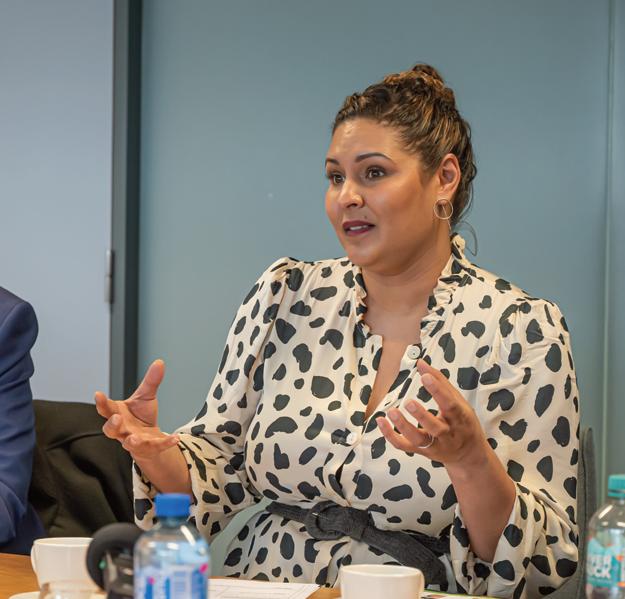 John Anderson
John Anderson


The acceleration of digital technologies is transforming how we use data in education. There is now a greater understanding that qualitative data about learning is as important as quantitative scores. The main indicator is the assessment information provided about the progress of the learner. While education is learner-centred, there must be an understanding that teachers are central to that learning, so we need to have a conversation about teacherlearning in relation to using data. The advent of digital technologies in education, accelerated by the pandemic, has altered the previous model whereby teachers evaluated the understanding of learners and their progress to tailor their teaching. Now, the pupil is increasingly in a position to understand their own progress through more frequent and speedier feedback, and greater levels of peer and self-assessment. At the same time, teachers are benefitting from better methods and greater levels of feedback to reflect, tailor their teaching and share their learning with colleagues.
Frances Meehan
The learning experience we want to enhance must be about much more than the academic outcome. It also must be about safeguarding, intervention, and developing those softer skills. We know that the current system does not provide enough flexibility to meet the needs of all users. The Education Information System (EdIS) programme puts the child at the centre of everything we do and when we look at how data can be personalised to enhance a child’s experience, we see the first hurdle as data availability and reliably. At present, we have a system where we gather information on a child as they enter the education system but when that child moves school, that information does not follow them. As a system, we have multiple datasets in various locations, but we are not yet able to pull down the rich information to enable data-driven decisions. We are working to not only ensure data follows the child but also to deliver a master dataset that is recognised across the entire system from the Department of Education down to the individual child. A reliable and accessible learning record for every individual will enable the right interventions to be put in place at an earlier stage of their educational journey 4

John Anderson is a Visiting Professor of Education at Ulster University and is independent chairman of the Innovation Forum. Formerly a teacher and inspector, Anderson was national director in the UK Microelectronics Education Programme and coordinated the development of education technologies in Northern Ireland schools.
Marianne Betts is the Managing Director of Capita Schools and has worked directly in the public sector for over 13 years. Previously, her roles included establishing Entrust Education Services with Staffordshire County Council; enabling the setup of Learn Sheffield and providing bursary services to schools as Finance and Commercial Director at Sheffield City Council. Betts is also a Trustee for the Wilf Ward Family Trust, a charity providing support, choice, and opportunity for adults with profound learning and physical difficulties.
Kevin Marshall is the Head of Learning and Skills at Microsoft Ireland, leading a team of dedicated professionals committed to enhancing the quality of teaching and learning using technology. He has represented IBEC on several committees, Teaching Council, National Council Curriculum and Assessment (NCCA). He is currently a board member of SOLAS.
Frances Meehan is the Education Authority’s (EA) Director of Education Information Solutions (EdIS) Programme. Meehan has 30 years’ experience in procurement and programme management, leading significant transformation and change management projects in the public sector.
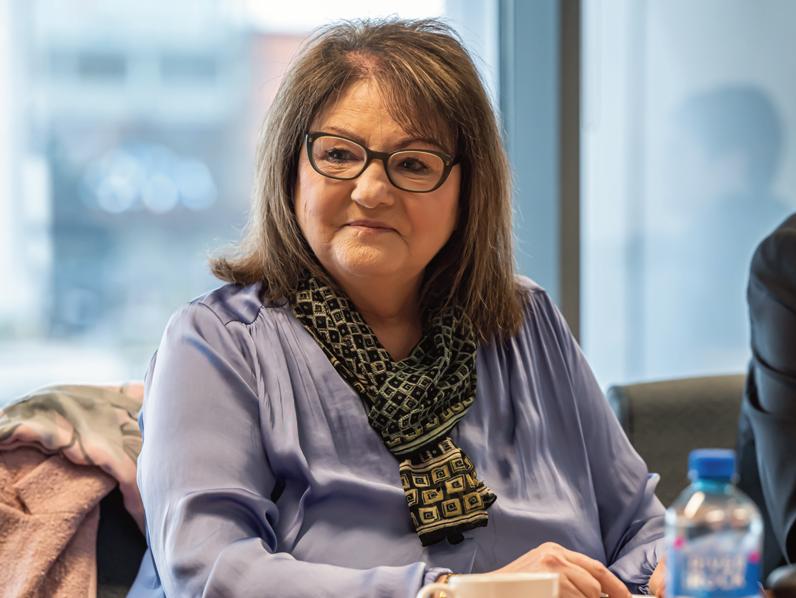
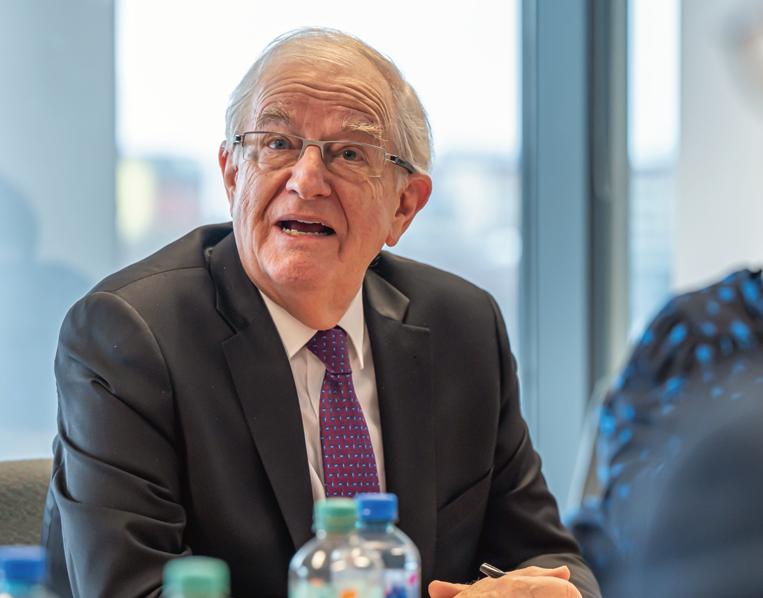
Dáithí Murray has been the vice principal of St Paul’s High School, Bessbrook since 2015, having previously served as the school’s senior leader for innovation and director of ICT from 2016. Murray is a principal examiner of CCEA and serves as the director for Middletown Centre for Autism.

and to allow children to succeed in their chosen field in a way that works for them.
What are the existing challenges in utilising data to create better educational outcomes in Northern Ireland?

 Frances Meehan
Frances Meehan
The data council within the Education Authority, which I chair, is focused on addressing a broad range of barriers which we and others have identified. A major challenge we are working to address is not just siloed data, but siloed mindsets within organisations. Our own organisation is a prime example where we have teams of staff working within one service, but they work on separate data sets and rarely interact. We are working to achieve that holistic approach, which cuts out repetition and streamlines processes, however, the challenge is endemic across the system. Across government in Northern Ireland, we do not like to share data, and it is to our detriment. We as a service should not be asking people to provide information
which is already held by another government department.
Another challenge is data quality and the need for data definitions. Effective educational outcomes from data are dependent on the source data being reliable. For example, if you want to access data about a particular school, currently you will often find up to 10 variations of that school on the system depending on how the name of the school was inputted into the system. Defining data to achieve a master data set, an absolute truth, is critical.
Kevin Marshall
The data quality issue is an ongoing challenge but one that will be fixed because it must be. Underpinning the challenge of data quality is a further challenge of siloed data, which is endemic across the system. To effectively solve these challenges, we need to have a common understanding of what we are trying to achieve. The focus must be on data linked to assessment. How you use data to build a much more continuous, summative, and formative assessment to improve student learning and build growth models. The absence of highquality data is a barrier to that but it is also worth stating that having reliable data is only useful if practitioners can use it effectively. At the moment, data literacy is a barrier, and it is a skill that we all need to re-educate ourselves on.
Marianne BettsData intelligence and tech is changing the agency of students, who are being empowered to learn in different ways. Teachers have to respond to this and adopt a way which best marries their skills as educators with the application of data-driven learning. The challenge lies in getting ahead of this change and I think it is exciting that the EdIS programme has recognised this and is aiming for systemwide change. A separate point, we need to go beyond data quality to data consistency, to ensure longer term impacts are measurable. Sometimes in the drive for change for the future we lose consistency in the data we are collecting and the purposes we are utilising it for. To ensure consistency, there is space for a common framework of agreed long-term priorities for data being gathered, in parallel to constant evaluation to ensure quality.
John AndersonWhat used to be a challenge is now an opportunity. Digital access has made educational progress information much more available to the learner, offering much more opportunity for self-regulation and developing their agency as a learner. We are fortunate that Northern Ireland’s curriculum includes a definition of the development of thinking skills and personal capabilities: educational outcomes are about much more than qualifications and public examinations. Digital technology is accelerating these skills and it is having an empowering effect on the learner at a younger age. However, we must ensure that impact is happening across every school. An additional challenge relates to establishing that single source of truth for data, which will place an emphasis on the data analysis skills of teachers, leaders and governors. Educators must be equipped with the skills to utilise the full potential of the data being collected.
I think it was Ken Robinson who once said that the way we educate our children is often the biggest barrier to their progression, an idea based on the fact that we still educate children by their age and manufacture, rather than where they are in their personal development. Effective use of data can empower teachers and parents to better understand the needs of their children. However, I think there is a lot of work to be done to illustrate to teachers that data can be a tool for greater efficiency and workload reduction, rather than it being seen as an extra task for them to complete. Something that concerns me is how quickly some people have fallen back into pre-Covid practice. The
“Data can support educators to better understand not just a child’s academic performance but their emotional wellbeing.” Marianne Betts
response to Covid-19 was an accelerant to the use of digital technologies and the understanding of data that stemmed from that use. That institutional memory is at risk of being lost if we simply pivot back to how things were.




John Anderson
The historical distinction between summative and formative assessment is not valid anymore. The intensity of teacher/pupil feedback, when accelerated digitally, means that assessment has moved beyond the teach and test method. There is a significant difference in how teachers are thinking about learning progress based on data. Educators are also being supported by the adoption of the cloud-first approach, which is rapidly accelerating the ability of teachers to share solutions. Teachers are working to put their resources online on the understanding that young people are gaining value from accessing the information in their own time, but also 4
“Digital access has made educational progress information much more available to the learner, offering much more opportunity for self-regulation and developing their agency as a learner.” John Anderson
“Having reliable data is only useful if practitioners can use it effectively.” Kevin Marshall
that teachers are gaining value in more efficient use of classroom time. The investment of effort to save, accelerated in response to Covid-19, is bearing fruit.
Dáithí Murray
I have lots of examples whereby data and digital is empowering teachers to do much more meaningful microassessment within lessons. The digitisation of teaching material has enabled a flip of the model, something which has been talked about for over a decade, whereby students can access material in their own time and as much as they want, allowing the teacher to focus on effective engagement. Rather than getting to the end of a module where assessment is done through one high stakes test, teachers have daily opportunities to micro-assess development, which is transformational in delivering better outcomes and allows us to create something we have aspired to for a long time, a generation of reflective teachers.
Frances Meehan
That reflective mindset will not only be of benefit to the child but will also aid
teachers to be reflective on their approach to teaching.
Marianne Betts
Going back to that core of having the child at the centre of everything that we do, data can support educators to better understand not just a child’s academic performance but their emotional wellbeing. The feedback loop enabled by digital tools means that the educator can get immediate feedback not just on performance but also ascertain how the individual felt. Having that understanding can reframe the conversation about performance and help better equip educators on how they can structure learning to suit the individual.
Kevin Marshall
A powerful data strategy also requires a powerful research strategy. Evidencebased policy is predicated on a culture of quality qualitative and quantitative data assessment and one of the values of getting this right is that good data enables the development of predictive data models, which is particularly valuable when educating learners at risk. Predictive models can help educators identify those at risk and supports them to reduce that risk. There is huge potential, but it goes back to ensuring that a data framework and data literacy levels exist to maximise outcomes.
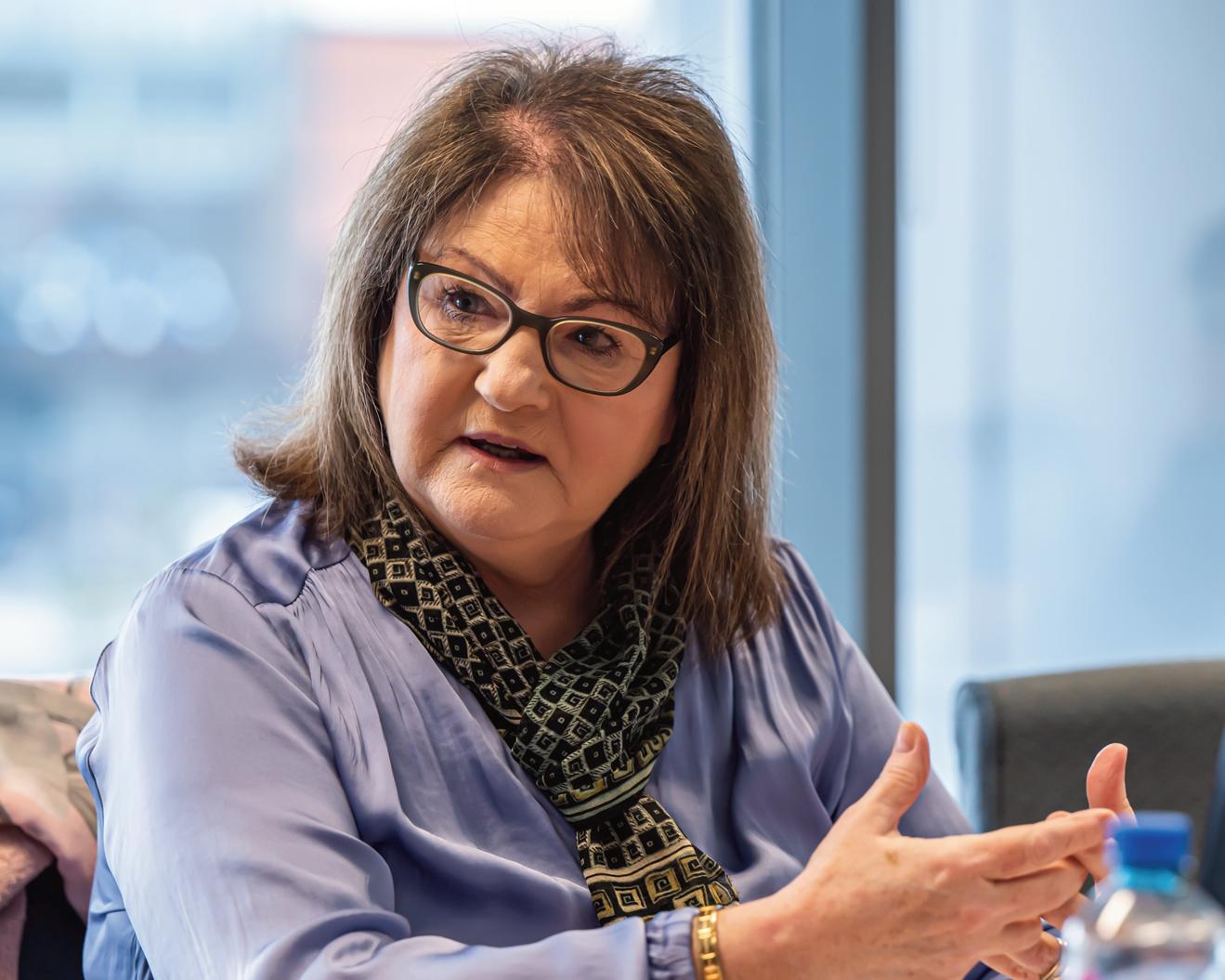

Kevin Marshall

Yes, provided we do it properly. If we have truthful data, providing constant feedback for the learner, and then integrated into a new model of AI, we have a system where leaners are empowered in their choice of study or course, for example. If we can then integrate that idea into a wholesystem approach, where learners and educators can see informal and formal pathways to learning, then we have a truly personalised approach. To ensure continuous improvement, we need a culture around the platform and data which understands not just how to gather and disseminate the data, but actually how to use it. Data is an enabler of insight. If we can get it right at a macro level, then professionals and teachers will have a platform to bring these insights into our communities. However, it is important that a key part of that culture is constant reevaluation.
Frances Meehan
Data is a powerful tool, but it is only one within the toolbox. One of the key benefits of data is the rich environment it provides for us to identify areas of weakness that will facilitate interventions to drive improvements. It creates room for innovation in these areas to change or adapt a model which is not having the impact we had initially aimed for. However, data is just a start point for innovation, not an end. In a recent pilot programme, we conducted a self-reflection framework on where schools were on their digital journey. One of the unexpected benefits was that when we brought educators together to discuss the data, there was clear collaboration and innovative thinking to drive solutions and improvements. Innovation comes from relationship building and a confidence to share, which data can provide a platform for.
Marianne Betts
If we get this right, innovation on the back of trustworthy data has the potential to go beyond a change of approach of our educators but actually drive curriculum change and the types of skills that are being taught. Skills like critical thinking are happening earlier and earlier in the learning journey, and we can utilise data to maximise application of skills such as this to the future workforce and equally, map skills gaps to curriculum, developing the right skills for future local economic growth.
Frances Meehan
Exactly, we then start to look at innovation
“The learning experience we want to enhance must be about much more than the academic outcome.” Frances Meehan
in a different frame, where data-driven innovation goes beyond just our education system but is able to drive continuous improvement across the areas of our Programme for Government such as health and the economy.
Dáithí MurrayUndoubtedly data can provide a platform for innovation and continuous improvement, but it goes beyond education, we need to broaden its impact into our communities and society. When we talk about innovation, we need to be careful we do not over complicate things. There are some obvious solutions we can implement to drive improvement. For example, one area where I see data being a platform for change is around those pupils who need extra support. The earlier we can get the information into the system, and we allow that information to travel with the pupil, then the more innovative we can be in achieving the Programme for Government’s ambition of ensuring every person enjoys long, healthy, active lives, and break the inflexibility of a system that has brought about one of the most over tested generations of students in the world.
John AndersonUp until now we have discussed how data intelligence is an enabler of the learner to improve their capacity and performance and those important ‘soft skills’, however, innovation is also about ensuring education is meeting the changing needs of society. For example, the Shared Education Act (Northern Ireland) 2016 places a duty on the Department of Education and the Education Authority to encourage, facilitate, and promote shared education. Where we have a data-driven system of shared teaching, learning, and of shared objectives, technology is an enabler of programmes of study and online courses that facilitates students studying and working together.
Frances
MeehanData following a child through their learner journey will be a huge step forward in breaking down the barriers to underachievement, this will ensure all those who should have access to a child’s information will have access from pre-school through to the end of their

educational journey. That information is not restricted to educational attainment but how they best learn, what interventions worked for them etc. this data will facilitate timely interventions to support educational outcomes.
John AndersonThe Fair Start report rightly outlined eight key areas to address but missed the empowering role of digital technologies within each. The term ‘ICT’ is outdated and if we can fully recognise the potential of digital technology at a policy level, we can empower improvement and harness the advancements we have made over the past thirty years, particularly those necessitated by response to the pandemic.
We saw during the pandemic how quickly the system can pivot. Technology and data have helped close the gap for administrators, teachers and within classrooms, now let us put devices into the hands of every child and equip them to utilise its potential.
 Marianne Betts
Marianne Betts
As part of a cohesive data set following the child through their learning journey,

we should ensure this also reflects their wellbeing. A child will not reach their learning potential without being a resilient individual, free to learn in a safe and engaging environment. Overall, data can help break down barriers to maximising attainment and developing new skills for each child. Data is a powerful tool, not just as an accelerant, but as an equaliser in education and learning.
Kevin MarshallI would identify devices, broadband, and content as the main means to break down barriers. However, we need to address this on an all-island basis, recognising that there are soon going to be 10 million people on this island. We need to work on solutions that will keep us competitive in the macro challenges in the next two decades and learn lessons from other countries, such as Great Britain, where underinvestment in some communities is being evidenced.
“I believe that as a system we can do better than personalising our learning by cohort and not by individuals.” Dáithí Murray



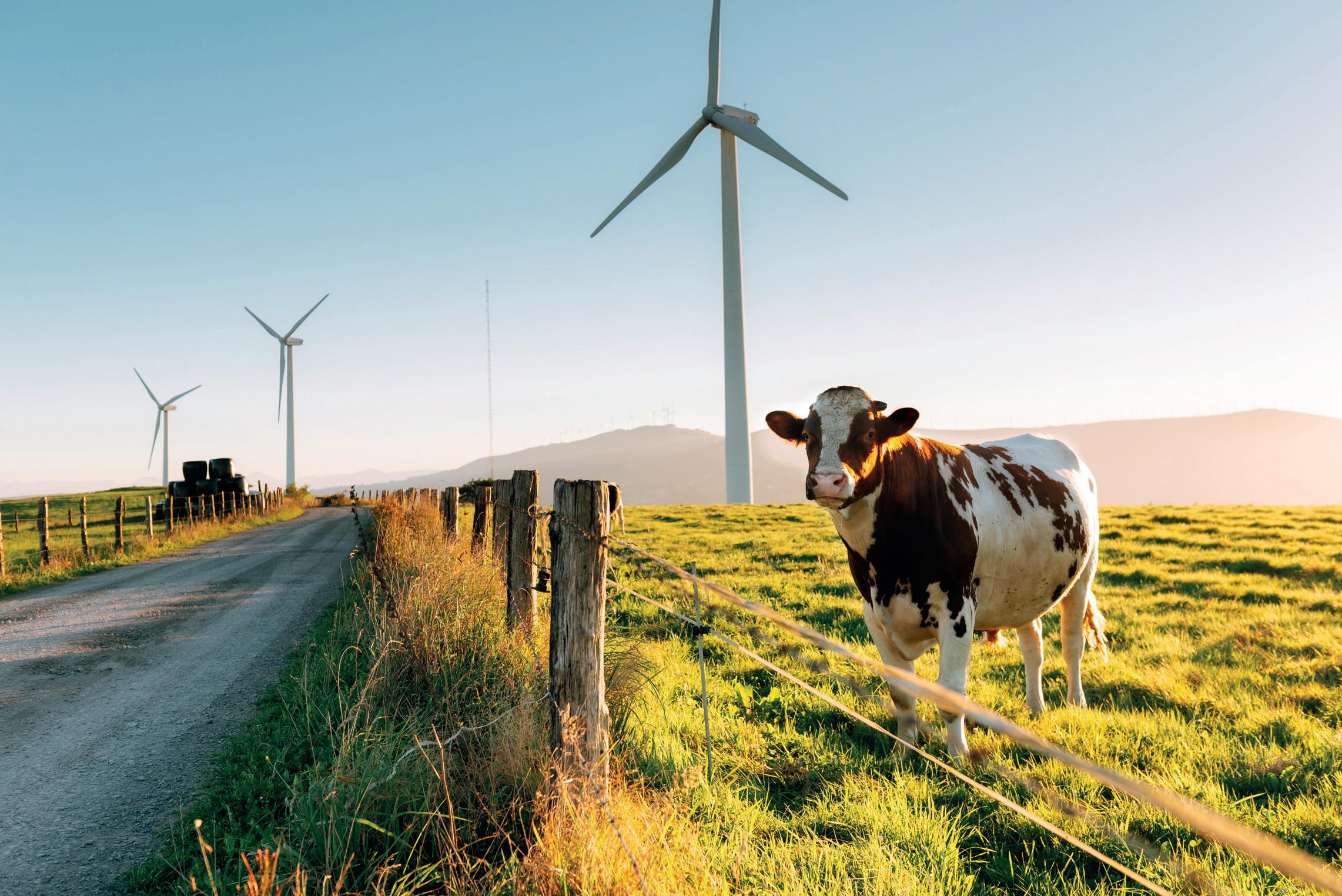
Northern Ireland’s policy ambition “must change” if net zero emissions are to be reached by 2050, the Climate Change Committee (CCC) has stated, with “radical actions” such as rapid afforestation and carbon capture and storage still not enough to reach a 100 per cent reduction on 1990 emission levels.
Since the signing into law of the Climate Change Act (Northern Ireland) 2022, the achievement of net zero emissions by 2050 has been a legally binding target for the Executive, an aim which went “significantly beyond the CCC’s advice on what would be a fair and achievable contribution” towards UK net zero ambitions. In its new report, the CCC states that its updated Balanced Pathway, containing actions within Northern Ireland “consistent with UK net zero by 2050”, would only reach an 83 per cent reduction by 2050 in Northern Ireland’s emissions, despite it being “very ambitious, with most sectors decarbonising almost completely”.
Under a second scenario developed by the CCC – the so-called ‘stretch ambition’ – a 93 per cent reduction could be reached by 2050 through the adoption of actions such as the “rapid ramp up” of afforestation rates to reach 3,100 hectares per year by 2035, which would require a multiplication of the 2021/2022 rate by six, and engineered removals of emissions via carbon capture and storage (CCS), which “would require significant investment and infrastructure development”.
A third, “speculative” scenario is thus developed by the CCC, with two pathways suggested to
make up the residual emissions: the first pathway would see the deployment of direct air capture (DAC) technology, “which is expected to have high costs and may be difficult to deliver at scale in time”, in order to take CO2 directly out of the atmosphere; and the second would see livestock numbers approximately halved by 2050, which would go significantly beyond the recommendation of less than one-third in the Balanced Pathway.

Agriculture remains the key determinant sector in Northern Ireland’s pursuit of net zero by 2050, with the residual emissions in the two scenarios that do not reach net zero coming from the sector, and the reaching of net zero in the third scenario requiring radical action within the sector. Emissions in the sector stood at 6 MtCO2e in 2020, up 6 per cent since 2010, but will need to fall by 21 per cent from this level by 2030 under the stretch ambition scenario that would achieve 93 per cent reduction of total emissions from 1990 levels. The main source of agricultural emissions in Northern Ireland is livestock, and the stretch ambition scenario would require total livestock numbers to fall by 12 per cent by 2030. The speculative scenario, under which net zero emissions could be reached by 2050, would see the number of livestock halved by 2050; at the least. The CCC says its pathway rests on a reduction of dairy cattle by 22 per cent, beef cattle by 17 per cent, and sheep by 18 per cent by 2030. However, the latest agriculture census published by the Department of Agriculture, Environment and Rural Affairs (DAERA) found livestock dairy cow numbers to have fallen by 1 per cent in 2022, beef cow numbers to have fallen by less than 1 per cent and sheep numbers to have risen by 3 per cent.
Advising that decarbonisation action must begin immediately as Northern Ireland is
now in its first carbon budget period, the CCC states that “current action and deployment rates are insufficient across all sectors of the economy and rapid ramp up needs to start now”. It is thus recommended that that following target levels be set for the first three carbon budgets:

• a 33 per cent reduction from 1990 levels from 2023-2027;
• a 48 per cent reduction from 20282032; and
• a 62 per cent reduction from 20332037.
Interim targets for 2030 and 2040 should be set at 48 per cent and 77 per cent respectively, the CCC advises.
Significantly, the CCC also states that due to the “extremely stretching nature of Northern Ireland’s legislated net zero target” going beyond net zero across the UK measures, carbon credits should not be used. The use of such credits would pose several risks, the CCC says, such as: Impairing the clarity of sectoral actions; substituting domestic effort with purchased reductions from outside Northern Ireland; and sending an international signal that the net zero target set would be undermined by the use of credits.
The CCC states that a number of near-
term actions need to begin immediately, such as: the deployment at scale of renewable electricity generation, “substantial investment to expand the elective vehicle charging infrastructure” and “major scale-up of plug-in vehicles’ share of new car sales from the current 10 per cent to 100 per cent” by 2032; all homes off-gas grid and on-gas grid having zero-carbon heating installed by 2030 and 2033 respectively; all industry cutting fossil fuel use by 45 per cent by 2030; low-carbon farming practices be adopted alongside the livestock reductions; all low-yielding trees to be removed from peat soils by 2030 and all extraction sites to be restored by 2035; and tree-planting rates to increase from 226 hectares per year to 1,000 by 2024 and 3,100 by 2035.
For Northern Ireland to meet the advised carbon budget targets, average annual emissions are required to be 19 per cent below 2019 levels by 2025, and 35 per cent lower by 2030. This compares with a reduction average of 9 per cent per decade over the period 1990-2020, lending further credence to the CCC’s statement that this work “must begin immediately”.
“Current action and deployment rates are insufficient across all sectors of the economy and rapid ramp up needs to start now.”
New Phoenix Natural Gas Chief Executive Officer, Kailash Chada, talks to David Whelan about his vision for the gas network as a central component of a decarbonised energy system.

Having served as Phoenix’s Chief Financial Officer for the past six years, Chada is well acquainted with the journey Phoenix is on as a key part of Northern Ireland’s energy future.
Phoenix recently connected the 250,000th property to its gas network, a sizeable feat for an organisation which
began building the industry in Northern Ireland, from a standing start, just over 25 years ago.
Today, Phoenix Natural Gas is one of the largest businesses in Northern Ireland, having built around 4,000km of gas network pipelines, making gas available to around 350,000 properties in doing so,
with new connections averaging around 10,000 per year across that 25-year period.
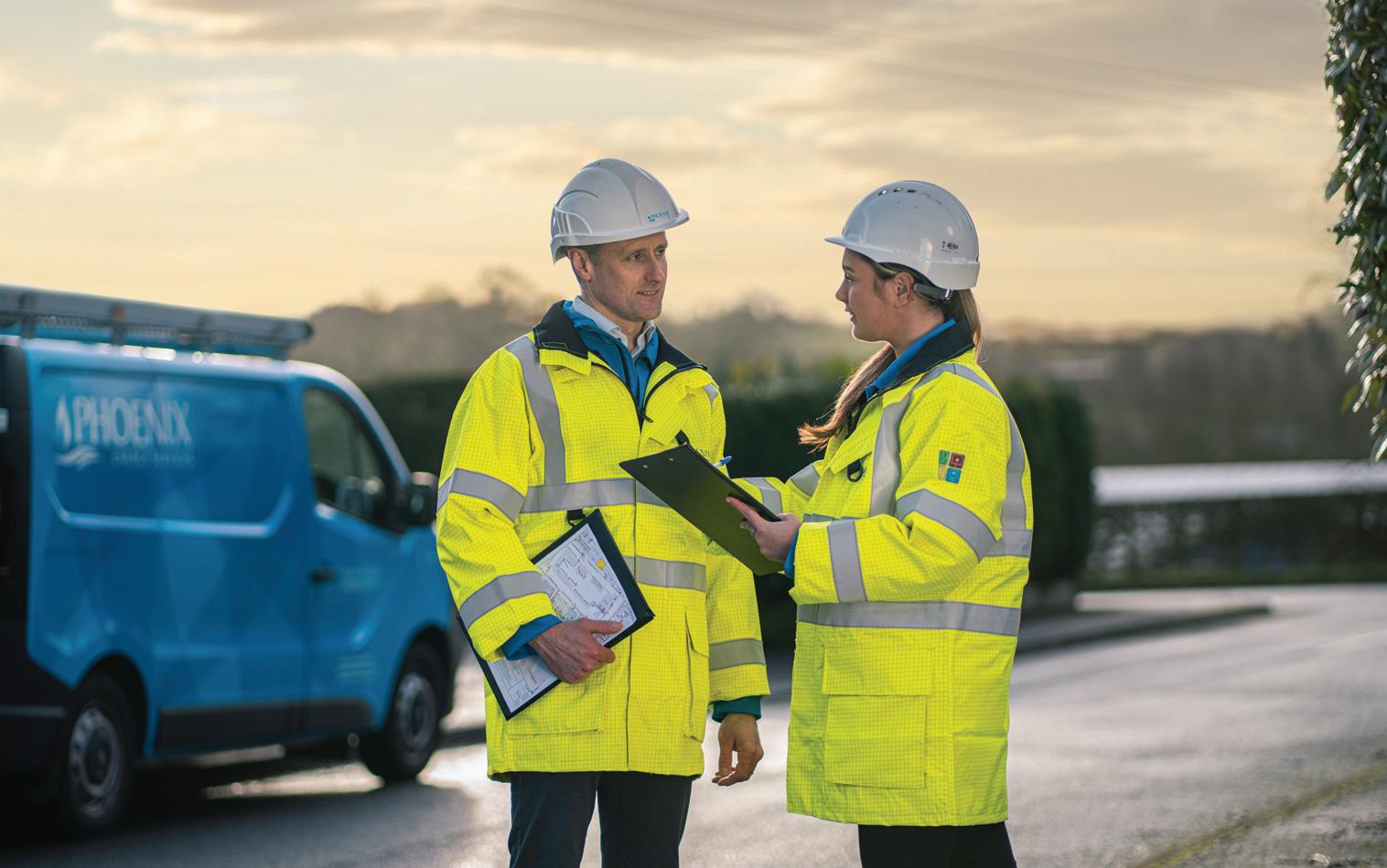
However, Chada is aware of the scale of the challenge facing the organisation over the next quarter-of-a-century, as Phoenix seeks to integrate renewable gas solutions into its expanding gas network.
Crucially, the CEO believes that the marketplace leadership role that Phoenix has established can be readily transferred to the decarbonisation challenge.

“When you look at the origins of Phoenix, the values instilled from the very beginning are the same values that will serve us and Northern Ireland well for the future. In building an industry we developed excellent relationships with key stakeholders including communities, businesses, and government. We cultivated a skills capacity and independent gas industry supply chain that now employs some 2,500 people, while attracting private finance to build our network capacity,” explains Chada.
“Most importantly, we embedded a culture across the industry that saw Phoenix push through delivery challenges with a ‘can do’ attitude. This is exactly the type of attitude that will be
necessary if we are to reach our decarbonisation ambitions. Indeed, I believe Phoenix’s experience, particularly in the area of market development and service delivery can serve as an exemplar to emerging renewable industries.”
The publication of the Department for the Economy’s Path to Net Zero Energy in December 2021 served as a springboard for an organisation which had been internally strategising on its future role in Northern Ireland’s energy system for some time.
While ultimately Phoenix’s 2050 pathway sees the business move away from the distribution of fossil fuels in its network, Chada is clear that the organisation can continue to drive down carbon emissions through natural gas supply in the near term, whilst the introduction of renewable gas solutions scale up in the coming years.
“Decarbonisation is a global problem but the solutions will be shaped by local, regional energy landscapes. We are cognisant that a decarbonised energy system does not have a role for fossil 4
fuels. However, the Phoenix network is a regional asset and will use its unique attributes to play a key role in supporting an integrated decarbonised energy system for homes and businesses across Northern Ireland,” he states.
Highlighting that the conversion of a home from an inefficient oil boiler to connection to the natural gas grid can garner a carbon emission reduction of up to 50 per cent, Chada points to the impact this has made over the past 25 years.
In 2021 alone, Northern Ireland’s natural gas users collectively prevented over a million tonnes of CO2 from entering the atmosphere; the equivalent of taking circa 500,000 cars off Northern Ireland’s roads each year.
“To date, the gas network has played a major role in reducing carbon emissions for Northern Ireland. Therefore, in the medium term, continuing to switch domestic properties from oil to natural gas offers an immediate decarbonisation impact that will reduce emissions from the residential sector over the next decade. Switching to natural gas also prepares these homes for the transition to utilising renewable gases in the future.
Emphasising that Northern Ireland’s ambition for self-sufficiency in indigenous renewable energy will require a combination of solutions, Chada says that continuing to utilise Northern Ireland’s £1 billion gas network will not only protect consumers’ investments to date, but also supports other sectors’ transition to net zero.
“The network was installed relatively recently, placing the gas network ahead of the curve compared to older networks elsewhere, such as in Great Britain. The distribution network in Northern Ireland consists of modern plastic pipes ready to distribute biomethane, and well placed to also embrace hydrogen. By transitioning the gas network away from natural gas to indigenously produced renewable gases like biomethane and hydrogen, we are providing an opportunity for our existing network infrastructure to become a key enabler in Northern Ireland’s pathway to net zero,” he explains.
“At the heart of our pathway is a vision of an affordable, least-disruptive, transition to net zero where energy users can continue to enjoy all the convenience and benefits of a gas heating system, safe in
the knowledge that the gas they use will be 100 per cent renewable by 2050.”
Recent research by Queen’s University Belfast estimated the potential for biomethane to account for more than 80 per cent of the region’s gas distribution network demand. Importantly, highlights Chada, biomethane is almost indistinguishable to the composition of natural gas, meaning it requires no change from the consumer.
Later in 2023, biomethane will be injected into the Northern Ireland gas grid for the first time, and the Phoenix CEO believes that is a crucial step for on-gas grid consumers, who will be able to take advantage of a decarbonised heating solution, that does not require behaviour change or expensive retrofit.
The use of biomethane in the gas grid is a proven technology, with over 20,000 anaerobic digestion plants already in existence across Europe. For instance, Denmark currently has around 30 per cent of its gas volumes coming from biomethane, with a target to move to 100 per cent by 2034.
“Biomethane is a proven alternative to natural gas which is already injected into gas networks across Europe,” Chada says, adding: “As well as reducing the carbon footprint, with no change for the consumer, the environmental benefits include re-purposing methane from
waste, which would otherwise be released into the atmosphere.
“It is important to note that the vast majority of the feedstock required to produce this level of biomethane is located within 10km of the existing gas network, a feature that is supporting the high level of early adopter interest that gas networks are currently experiencing.”
Although still in its early stages in Northern Ireland, Chada is in no doubt that green hydrogen will play a major role in Northern Ireland’s decarbonised energy future. However, unlike other economies, Northern Ireland does not have a large industrial sector to drive demand and production. The current gas network can safely accommodate a 20 per cent hydrogen blend without any material impact on the gas network or consumer appliances, and Chada believes the network represents an enormous potential source of ready demand for hydrogen, which could unlock early investment in Northern Ireland’s hydrogen economy.
As a result, Phoenix is working to establish relationships and partnerships across various industries in Northern Ireland to progress the development of a hydrogen industry, and importantly, launch pilot projects, to demonstrate the capabilities.
The Department for the Economy’s
"I believe Phoenix’s experience, particularly in the area of market development and service delivery can serve as an exemplar to emerging renewable industries.”
Energy Strategy has pledged to review the existing legislative provision for hydrogen to be injected into the gas network by 2025. Significant work is underway to prepare the gas network to accept 100 per cent hydrogen with Chada suggesting that hydrogen-only zones within the network can be developed once hydrogen production facilities become established.
Alongside its own collaboration across industries, Chada believes that Phoenix’s regulated model is an optimal vehicle to attract investment into Northern Ireland and one that has demonstrated that it is well placed to deliver on local executive energy policy objectives. However, he says that given the scale of challenges ahead government policy must now be directed at creating the necessary market frameworks and mechanisms to accelerate the transition to renewable gas solutions.

Alongside the Utility Regulator, Phoenix is in the process of finalising its new price control out to 2028 (GD23). This includes a provision for proof-ofconcept/innovation projects, that Chada describes as “invaluable” in helping to create the right environment for the expansion of renewable gases on to the gas network.
“The timing of this price control is favourable because we are in a defining period. The actions taken within the next six years will allow the region to meet 2030 targets whilst also creating the foundational regulatory, legislative and market platforms to support 2050 net zero ambitions. We are already very clear on what needs to be done to have a decarbonised economy on or before 2050, and what is required now is action.
“Phoenix’s extensive experience in delivering market solutions through effective partnerships and enabling change coupled with our modern gas network asset and established supply chain leave us ideally placed to play a central role in an increasingly integrated energy system that delivers economic, sustainable solutions to homes and businesses in Northern Ireland.”
Born in Magherafelt and raised in Portrush, Kailash Chada started his career with PwC in Edinburgh before undertaking several senior roles in leading financial institutions in London, including Royal Bank of Scotland, where he was Chief Finance Officer and interim CEO for a division of Ulster Bank. After returning to Northern Ireland with Ulster Bank, Chada took up the post as Chief Finance Officer at Phoenix in 2017, and was later appointed CEO in April 2023.
A married father of three sons, Chada is a rugby, hockey, and cricket enthusiast.
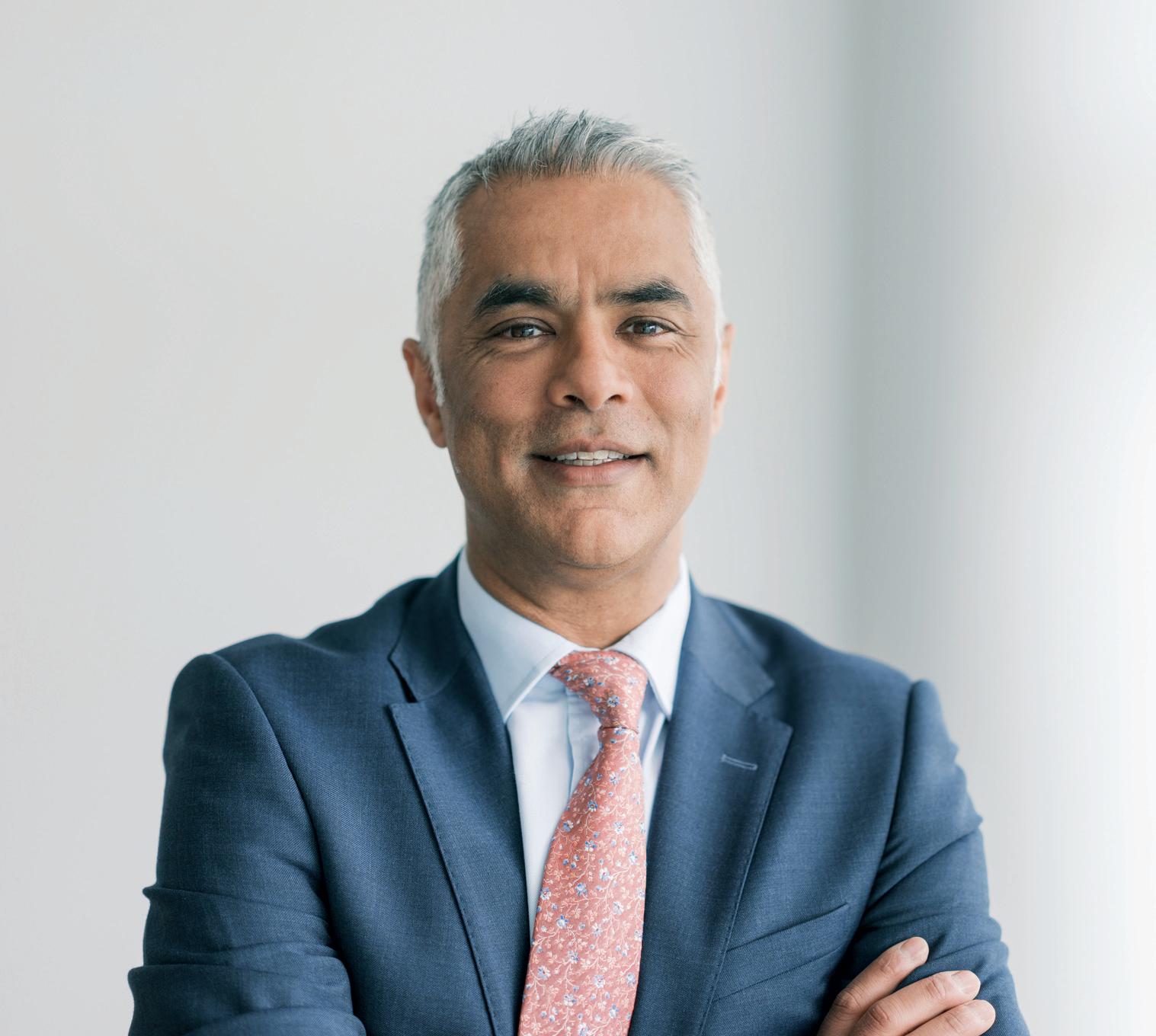
People in Northern Ireland can expect at least seven less years of healthy life, to be more reliant on family and friends for childcare, and are less likely to be employed than their southern counterparts, a spate of recent publications highlight.
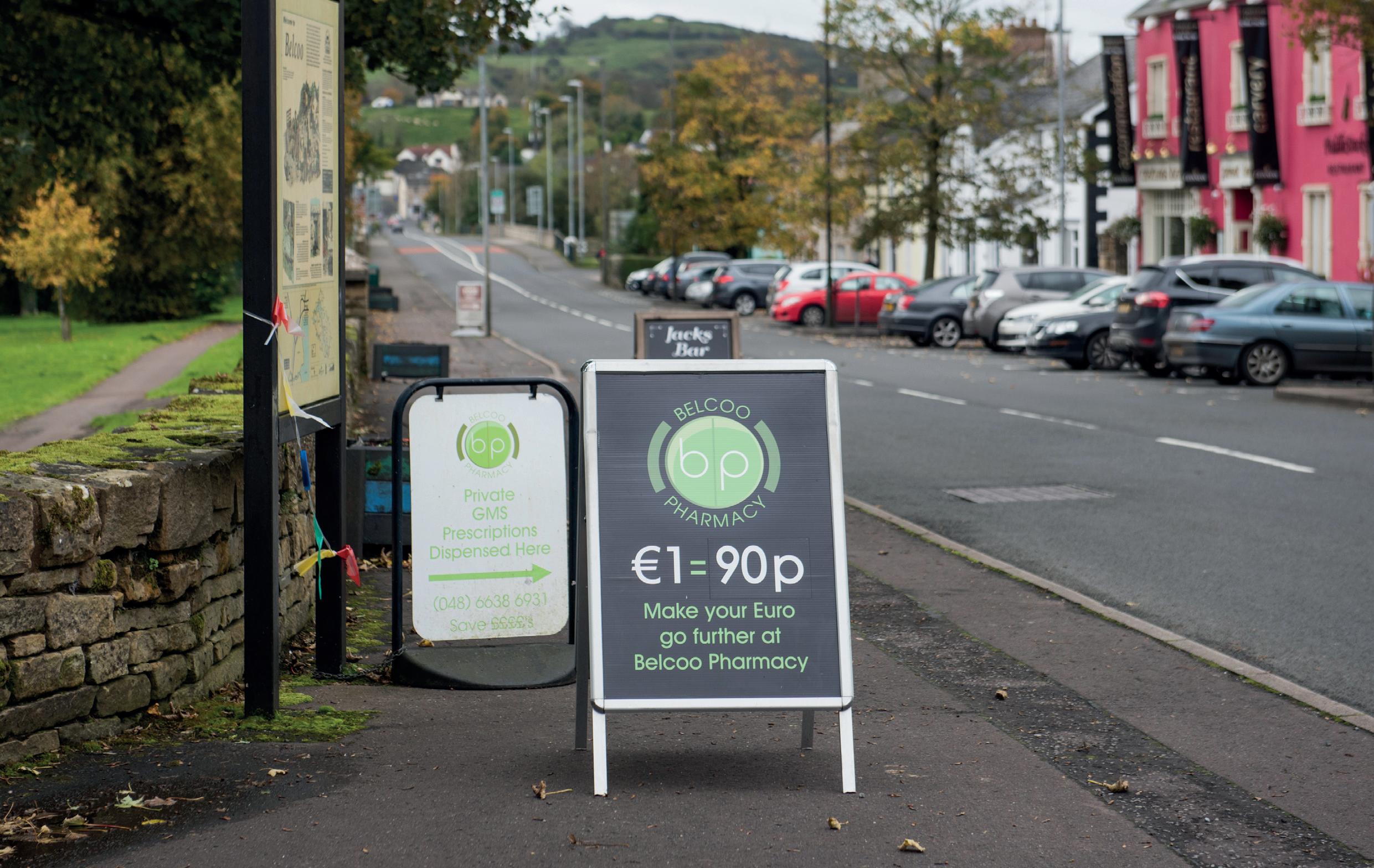
The Department of Health’s most recent publication of figures for life expectancy and healthy life expectancy, published in January 2023, covered the period 20192021 and found life expectancy in Northern Ireland to be 78.4 years for males and 82.2 years for females, but also found healthy life expectancy to be 60.6 years for males and 62.7 years for females. In data published by the Central Statistics Office (CSO) in 2022, life expectancy in the Republic of Ireland was found to be 79.6 years for males and 83.4 years for females in 2016; healthy life expectancy stood at 68.4 years for males and 70.4 for females. These figures mean that the smallest healthy life expectancy gap between the north and south was between northern

females and southern males, 5.7 years. The gap stood at over seven years for both sexes when compared to their southern counterparts.
A March 2022 comparison of the two primary care systems in the Republic and Northern Ireland by the Economic and Social Research Institute (ESRI) found that “one system does not consistently do better than the other” but that the Republic has performed better in terms of infant mortality and life expectancy, and that there were higher levels of unmet healthcare needs due to affordability in the Republic. However, the most common reason for unmet healthcare needs in both jurisdictions is long waiting lists, and while both have experienced increases in this regard, the
increase has been much more pronounced in Northern Ireland. From 2017 to 2021, the proportion of patients on day and in-patient waiting lists for more than one year rose from 20 per cent to 60 per cent in Northern Ireland, compared to a rise from 12 per cent to 20 per cent in the Republic.

Further ESRI research, published in 2023 in the Irish Studies in International Affairs journal, found educational attainment in 2019 to be higher in the Republic of Ireland than in Northern Ireland. The proportion of those aged 15-64 with a lower secondary level of education stood at 24 per cent as compared to 21 per cent in the Republic. In terms of higher

less years of healthy life
educational attainment – post-secondary or above – a gap of four percentage points in favour of the Republic was found. However, most telling is that when the sample is restricted to those aged 2529, a gap of nine percentage points is present, meaning “that there has been substantial divergence over time” and “the proportion of young people with low levels of educational attainment was approximately 11 percentage points higher in Northern Ireland” along with the nine-point gap for high attainment.
As part of the Shared Island Initiative, the ESRI also performed a comparison of both educational systems in Ireland from primary to third level, which found the need for “greater cooperation on tackling educational disadvantage and on special educational needs”. The report also found that people in Northern Ireland are two to three times more likely to leave education early than those in the south, with the northern proportion of those leaving with, at most, lower secondary attainment standing at 14 per cent, compared with the southern proportion of 6 per cent. While the proportion of graduates in both jurisdictions is said to be similar, the number of people undertaking a post-secondary, non-third level course shows vast difference: 10 per cent of the population in Northern Ireland possess such a qualification, compared to 30 per cent in the Republic. Further Shared Island research found northern parents to be more reliant on family and friends for childcare than parents in the Republic, with mothers in Northern Ireland found to be more likely to work part-time, and the entitlement to free pre-school provision slightly higher in the Republic (15 hours per week) than
Northern Ireland (12.5 hours). It is noted that both jurisdictions face affordability challenges for parents, with Ireland and the UK both consistently featuring among the OECD countries with the highest childcare costs.

The most recent figures for gross value added (GVA) published by the Northern Ireland Statistics and Research Agency (NISRA) show that Northern Ireland’s GVA decreased by 7.9 per cent in real terms from 2019 to 2020, a rate lower than the UK’s overall 9.8 per cent decrease; CSO data for the Republic shows its GVA to have grown by 7.6 per cent in the same period. GDP in Northern Ireland decreased in real terms by 10.5 per cent in the same period and increased by 6.2 per cent in the Republic.
The ESRI’s educational attainment report found that wages are “significantly higher” in the Republic than Northern Ireland at all levels of qualification. NISRA data shows gross disposable household income to have stood at £17,395 for 2019, while equivalent CSO data for the Republic shows the mean to stand at €53,118 (£46,600 using 2019’s average conversion rate) and the median to be €43,552 (£38,208). The employment rate during quarter four of 2022 stood at 71.9 per cent and 73.2 per cent in Northern Ireland and the Republic respectively.
The figures tell the tale of two jurisdictions on one island, both beset by problems in providing public healthcare and childcare, but one trending in the right direction in both economy and educational attainment, and the other doing the opposite.

From 2017 to 2021, the proportion of patients on day and in-patient waiting lists for more than one year rose from 20 per cent to 60 per cent in Northern Ireland, compared to a rise from 12 per cent to 20 per cent in the Republic.

“The SDLP is here to stay”, Eastwood impressed upon the 200 or so party members gathered in his native Derry for the party’s annual conference at the end of March 2023.
That the SDLP’s leader feels the need to insist on the party’s continued relevance is a sign of the electoral struggles it has experienced in recent years – a significant decline from the position it held 25 years ago as an integral part of securing peace and delivering the Good Friday Agreement.
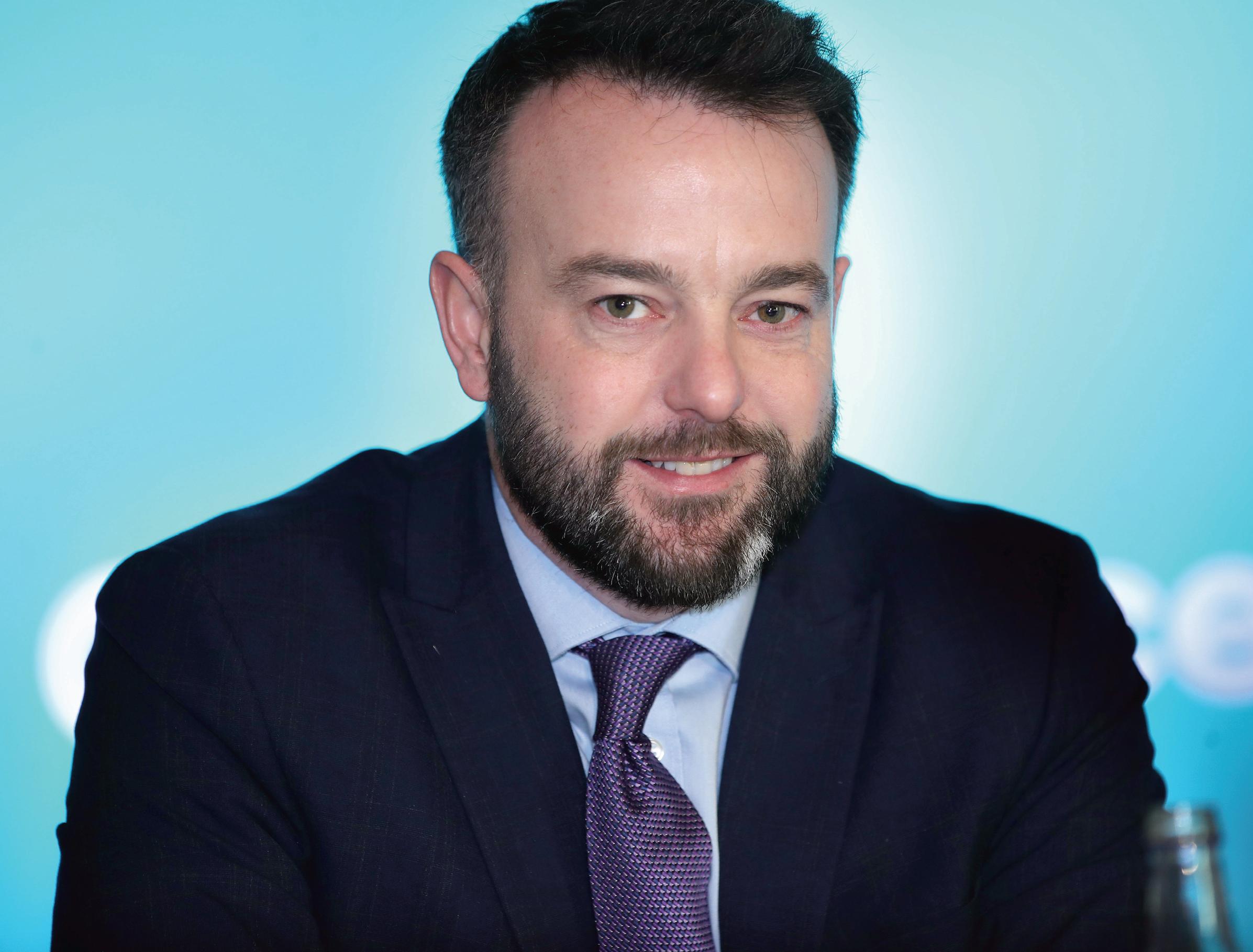
In the May 2022 Assembly Election, the SDLP lost four of the 12 Assembly seats it held since 2017, slipping from the third largest to the fifth largest party in the Assembly, excluding it from an automatic entitlement to an Executive portfolio. The announcement of a move into official opposition appeared to be the tonic to Eastwood’s diagnosis that the party had struggled to define itself in the years after the Good Friday Agreement. However, the absence of the institutions has meant little recognisable change for the electorate.

In this context, the mood-music around the upcoming local elections suggests that the SDLP could be set for further disappointment. The tone adopted by Eastwood indicates that he and the party are already bracing themselves for some decline – choosing instead to concentrate on the future.
“We are focused right now on the long term, because we understand that we are in a very difficult political context,” he states.

“a new mission” as a convincer of a new Ireland, countering suggestions of its potential demise amidst prolonged electoral decline.
Eastwood’s assessment is that the absence of Stormont, blame for which he levels at the DUP’s unwillingness to serve under a Sinn Féin First Minister, has “starved people of government and power”. The leader’s outlook on the upcoming local election hinges on his assessment that little has changed in this vacuum.
Overall, however, the leader is not downbeat. He firmly believes that the current difficult political context is temporary and used his party’s annual conference at the end of March 2023 to launch its “rebrand”, the conference ‘The Movement for a New Ireland’.

“We have reset our mission to become the convincers for a new Ireland and we are relentlessly focused on that,” he states.
“Post-Brexit, the next number of years is going to be about the constitutional conversation. Those conversations are already happening, but they will heat up, as more and more organisations and the governments see this as a live issue.”
In 2021, the SDLP formally created the New Ireland Commission to “shape its contribution to the debate on constitutional change”. After 18 months of “quiet” conversations with people from a unionist background, the leader says that now is the time for public debate.
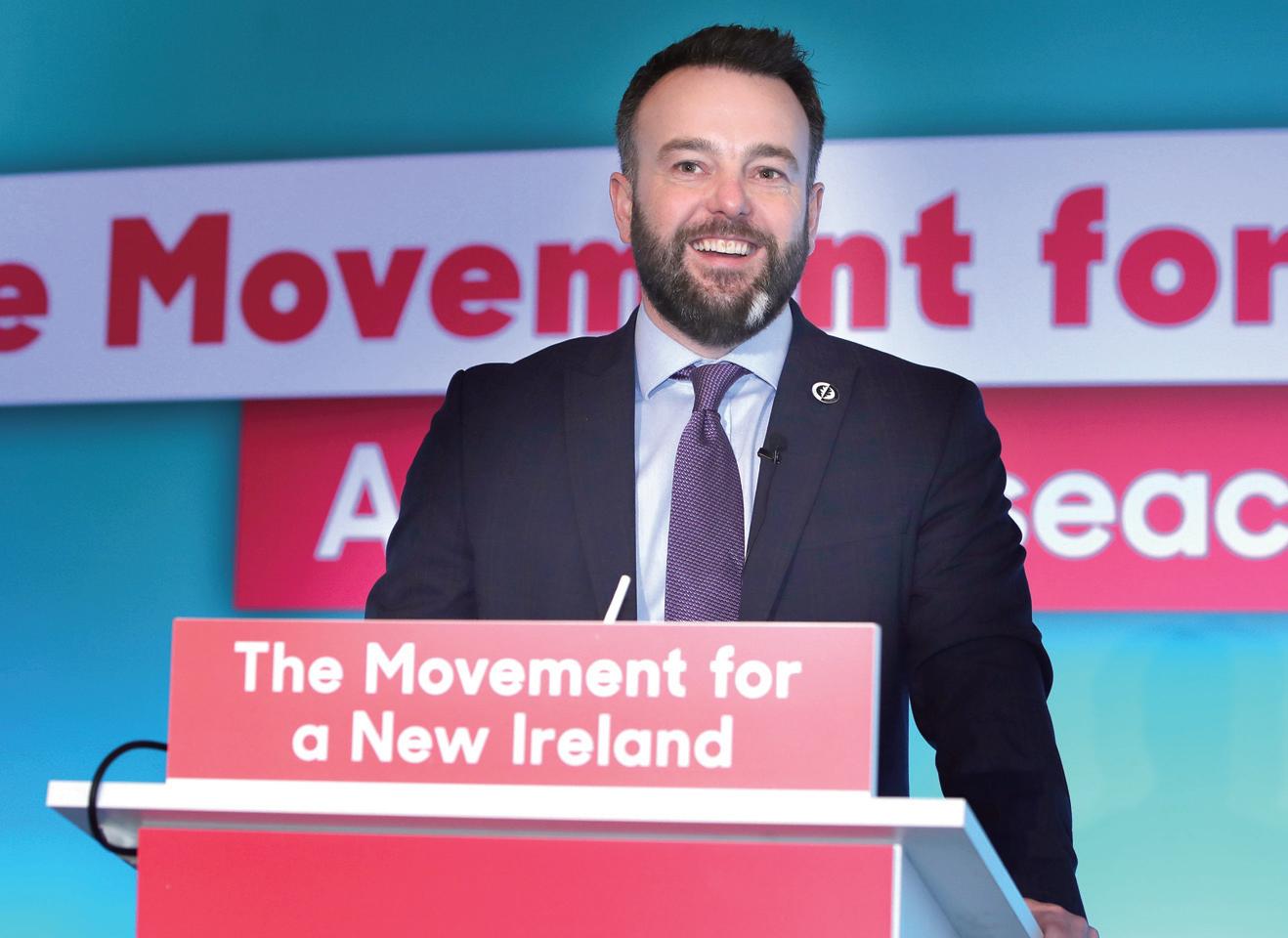
“The SDLP passionately believe in a new Ireland, but also believe we can convince people of it,” he says, suggesting that the party is best placed to attract the broadest interaction. “Our history and our pedigree help us to open doors for people to have that conversation that others cannot.”
Quizzed on the work of the Commission to date, Eastwood indicates that it has adopted a deliberately reserved approach, to not only create the space for unionists who might be hesitant to publicly engage on what a future Ireland might look like, but also to allow the SDLP to understand any reticence, as a basis to move forward.
With public engagement events scheduled in every town in Ireland,
Eastwood explains this “gear change” by the Commission as a consolidation of public meetings already held in the likes of Belfast, Dublin, London, and Washington.
“We have already set out our six principles for how we are approaching the conversation and we are working with experts to develop policy approaches to how it will all look. In the end, we aim to have a document that will be a prospectus for change.

“Anyone interested in a new Ireland must establish what the best vehicle for achieving it is. I would argue that, even with our diminished electoral performances, we are key to this conversation. If there was not an SDLP, you would have to invent one because I do not think there is anything else out there that does the same job.”
Eastwood believes that the SDLP is better placed to convince those he describes as “unity curious”, outlining his belief that Sinn Féin has little traction beyond its voter base, and pointing to a track record of the SDLP accommodating British traditions.
“One of the biggest things we are hearing back from our engagement with those
from a unionist background is concern about how their British tradition will be treated in a new Ireland. When we say we want to see the British tradition respected and celebrated in a new Ireland, we mean it. The Guildhall in Derry is a prime example. After the civil rights movement, the removal of the old Derry Corporation was replaced with power-sharing in the Guildhall, John Hume insisted on it. Today, the Guildhall retains those vestiges of unionist and British symbols.
“When you think of all of the people who transfer their vote to the SDLP who have a different first preference, and you think of all the different political parties across the island who see themselves as close to us, these are relationships which can be marshalled to build a coalition for change,” he says, adding: “I genuinely do not know who else is going to do it.”
On whether the SDLP has put a timeframe on finalising a Irish unification policy, Eastwood describes any call for a border poll currently as “foolish”.
“I am very reluctant to name dates, but I think that within the next decade we will be within that territory of having a border poll,” he says. “However, we intend to have the policy document out long before that, because it needs as much discussion as possible.”
Eastwood rejects the suggestion that the party’s focus on a new Ireland sits in contrast to calls to see a functioning Stormont returned. Asked whether he believed Stormont has a future, he says: “I think it does. In the time ahead, we have to run this place and I would rather locally elected people were running it rather than British ministers.”
The SDLP has been vocal on a demand for Assembly reform, including the equalisation of the title of the first ministers, a return to co-nomination of the heads of government, requiring a weighted majority vote, and a new weighted majority vote to appoint a new Speaker. However, Eastwood says that prior to this, the mandate given to Sinn Féin’s Michelle O’Neill must first be respected, adding: “Only then can we have a proper conversation about reform”.
The MP is explicit in his view that Assembly reform does not represent a “silver bullet”.
“What really matters in this regard is attitudes. If there is no desire to change attitudes towards working together then reform will not work.
“I want to see Stormont working but in reality, it is not going to be enough in the longer term for generations of people who
feel the peace dividend has not come their way, and they are asking what is next,” he insists.


The return of Stormont is currently inhibited by the DUP’s opposition to the Windsor Framework, despite the framework passing through Westminster and being formally adopted by the EU and UK.
While the Stormont stalemate looks set to continue amid DUP opposition, Eastwood believes that the agreement represents progress.
While he expresses the view that the Stormont Brake enhances the potential for deadlock in the Assembly, the MP issues a warning to the DUP about current political realities. “Brexit is done,” he states firmly, adding: “Things have moved on. London and Brussels are no longer talking about Brexit; they are moving on to other challenges like Ukraine, climate change, etcetera. The DUP is finding itself on very narrow ground.
“The DUP needs to figure out where it is going and what its plan is because the conversation about constitutional change is happening. If unionism wants to protect the union, then its leaders should have a positive conversation about that and lay out what they perceive to be the benefits of it.
“We now have dual market access with both the European and British markets, which is something which British MPs in Westminster would give their right arm for. The Scottish and Welsh governments would love to have this. There is an argument that unionism could make around that for the union’s future, but they are not even trying to make it and instead, are embedded in constant negativity which will continue to deliver diminishing returns.”
Looking to the future, Eastwood confirms the focus on the long term but contends that they are prepared for “bumps in the road”.
In the short-to-medium term, he says: “We will see what happens with the local elections, but the next election after that is a Westminster election and I think we have a big job to do retain our two seats and perhaps add to that.
“There is an opportunity to get rid of this Tory Government and as the polls narrow between the Tories and the Labour Party, SDLP votes will count for votes for Keir Starmer against the Tories.”
In the longer term, he adds: “The goal is that we have built a prospectus for change and convinced people that a united Ireland is the best way to run our economy and get better social outputs, particularly for health. We have been really badly served by partition and I really think that there is an opportunity coming to change that.”
On whether he will be the leader driving these long-term ambitions, Eastwood says: “I still feel like there is a big job to do. I turn 40 next year, so I still think I have time to do it. We have a generation of leaders in the SDLP who are roughly the same age and are in this for the long haul and are enthused by this new mission.
“They are inspired by the Good Friday Agreement generation, but they are ready to do the next thing and not be stuck in the past. We have a role to play which will be really important and I am not going anywhere,” he concludes.
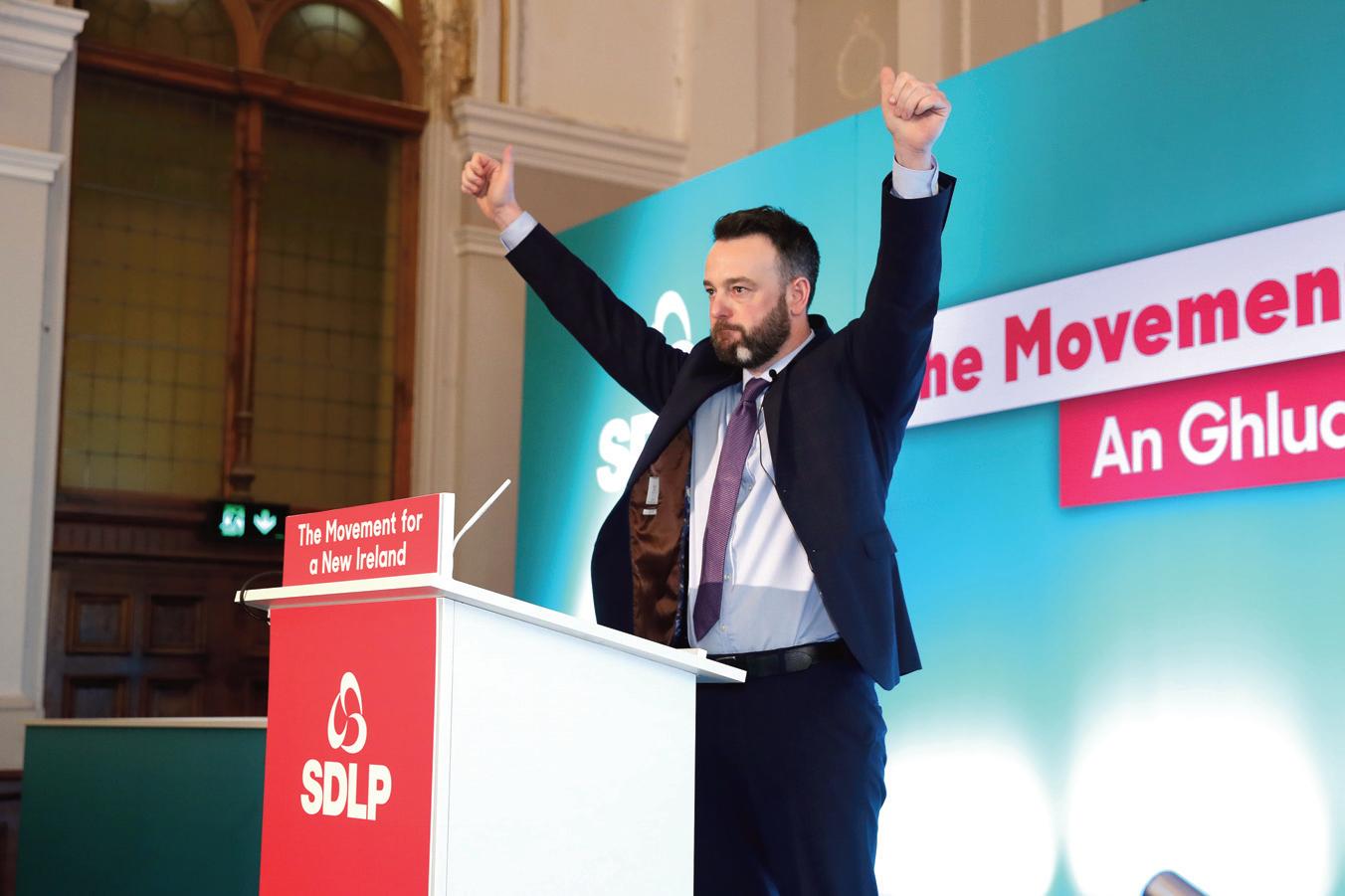


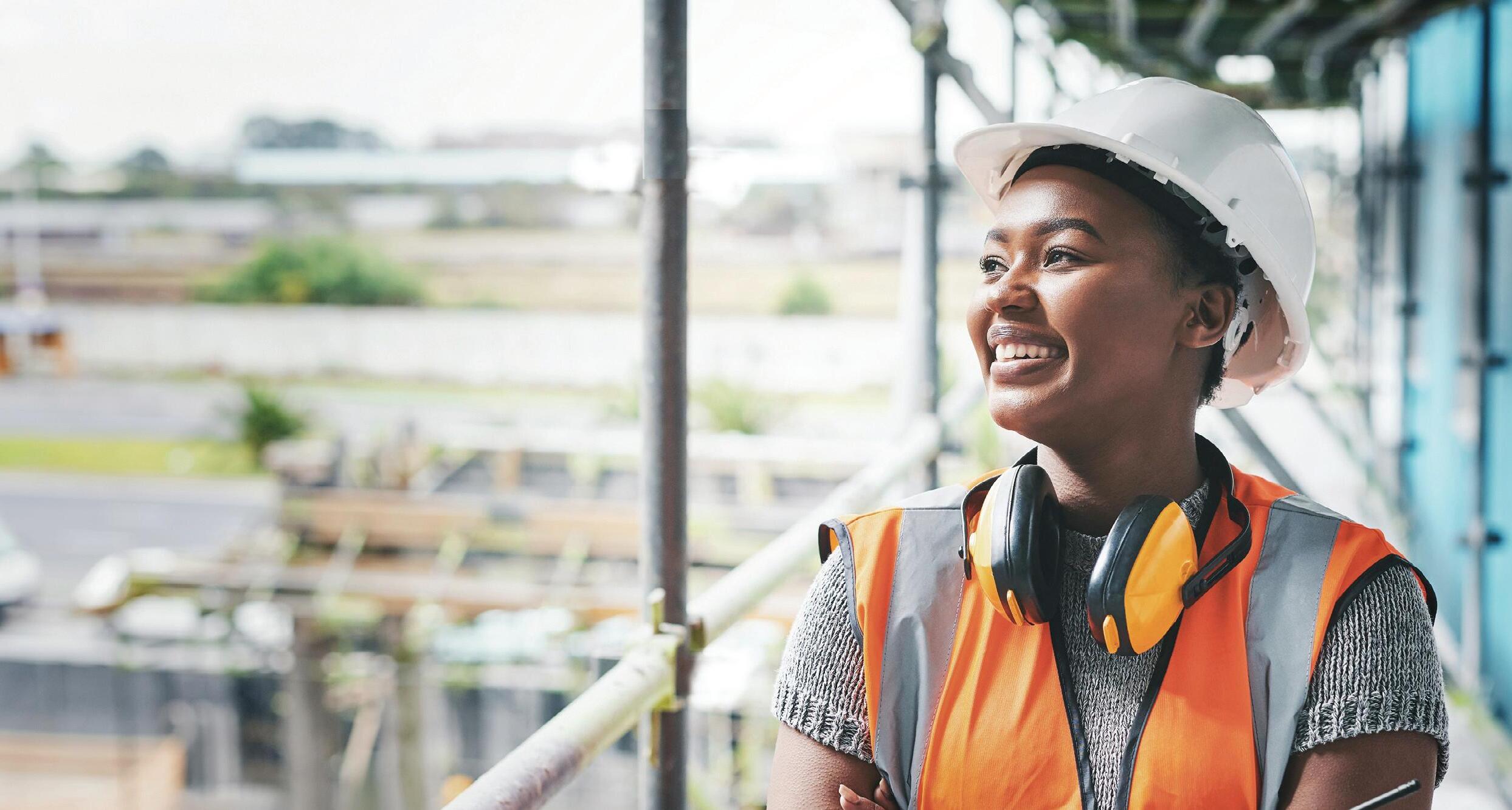
The CIOB is the world's largest and most influential professional body for construction management and leadership. We have a Charter to promote the science and practice of building and construction for the benefit of society, and we have been doing that since 1834.
With nearly 1,500 members in Northern Ireland, our members have led some of the country’s most high-profile projects, including Belfast’s iconic Custom House, and Titanic Quarter as well as thousands of smaller commercial and residential schemes in both the public and private sectors. On the education front, we accredit nine university courses in Northern Ireland across several institutions. To reflect our growing influence, we now have a dedicated policy and research function for Ireland.
This policy resource allowed us, in collaboration with our members, to write our first ever manifesto for Northern Ireland, addressing what we believe should be the key priorities for the future Northern Ireland Assembly in advance of the 2022 election. We called on the future Northern Ireland Government to:
• create a stable policy environment for the construction sector;
• ringfence funding for the development of an A-Level in construction; and

• develop a national retrofit strategy.
Furthermore, as part of the CIOB’s sustainability agenda, we recently published a policy paper: ‘Flipping the Green switch; a case for deferring stamp duty on residential retrofit in Ireland’, which has been met with an enthusiastic response from our stakeholders.
Collaboration is central to our work, and we regularly engage with the Government, our sister bodies and trade groups, and present our policy work through public speaking engagements. We have worked with the Department of Finance to achieve recognition for CIOB members in public procurement processes. We sit on a range of government and industry fora, including the Northern Ireland Construction Group, and we recently sat on the Northern Ireland Building Safety Expert Group as one of three industry representatives. We also sit on the All-Party Group on Construction, and the Heritage Skills Reference group for Northern Ireland. On the social policy front, we have worked with the Northern Ireland Equality Commission, and we sit on Aware Northern Ireland’s steering group.
The last two years have seen the launch of a Skills Strategy for Northern Ireland, a Housing Supply Strategy, a Programme for Government Framework, a Climate Change Act, and a series of reforms to public procurement, all of which directly impact the built environment. The CIOB has contributed to each of these initiatives through consultation responses and direct engagement with public bodies. After years of global upheaval, 2023 is the time to drive each of these policy areas forward, and to equip Northern Ireland for the challenges that will face its built environment for the remainder of this decade.
Jospeh Kilroy, Policy and Public Affairs Manager for Northern Ireland and Republic of IrelandE: jkilroy@ciob.org.uk
Since 2007, EirGrid and SONI have operated the all-island wholesale electricity market as part of a joint venture known as the Single Electricity Market Operator (SEMO).
In 2008, EirGrid bought SONI. Owned by Northern Ireland Electricity (NIE), SONI’s sale to EirGrid was in line with a desire to enhance the independence of Northern Ireland’s transmission system operator.
The decision to launch demerger proceedings comes after a critical report by the Northern Ireland Utility Regulator in 2021, which said that SONI was insufficiently independent of its parent company.
“The current governance structure is inadequate to ensure the protection of the interests of Northern Ireland consumers over the long-term,” stated the report by the Utility Regulator, which also suggested that consumers in the Northern Ireland may have been
overcharged for their electricity because of how the grid operator was being run. The recommendation for sweeping changes to how SONI was operated, was initially met with resistance by EirGrid, who argued that the Utility Regulator’s proposals were based on an assertion or assumption that there is some form of conflict of interest between EirGrid and SONI.
“This conflict has not been evidenced and does not in fact exist. Indeed, quite the contrary,” EirGrid wrote in a consultation on SONI governance by the regulator, highlighting that the Utility Regulator had explicitly stated in the consultation document that it had not identified any harm or specific performance issues that would have given rise to the need for the proposed governance measures for SONI.
EirGrid, as part of its submission, warned that a demerger would have an “adverse
impact” on electricity consumers on the island, and significant implications for the single electricity market on the island of Ireland.


The demerger proceedings come at a time when energy security on the island of Ireland has been under intense scrutiny, not least because of the decarbonisation agenda, and compounded by a European shift away from the purchase of Russian fossil fuels.
EirGrid’s latest Generation Capacity Statement predicted a “challenging outlook for Ireland” with capacity deficits identified for the decade to 2031.
The Utility Regulator’s decision became effective within the SONI TSO licence from 26 October 2022 and at the end of January 2023, EirGrid submitted a €3 million tender to “appoint a consultancy business to design, manage and implement this demerger project”.

The tender notification also stated that: “SONI Ltd will separately appoint consultants to design, manage and implement this demerger project reporting into the SONI Ltd Board. These projects will run in parallel to ensure completion of the demerger.”
EirGrid has set out that the framework agreement period for the demerger will be for an initial duration of two years with the option to extend annually for up to an additional three years, subject to the satisfactory performance of the supplier.

EirGrid, the Republic of Ireland’s national electricity grid operator, is seeking to appoint consultants to design, manage, and implement its demerger from the System Operator for Northern Ireland (SONI).
All-island electricity market faces ‘significant implications’ as demerger proceedings launched
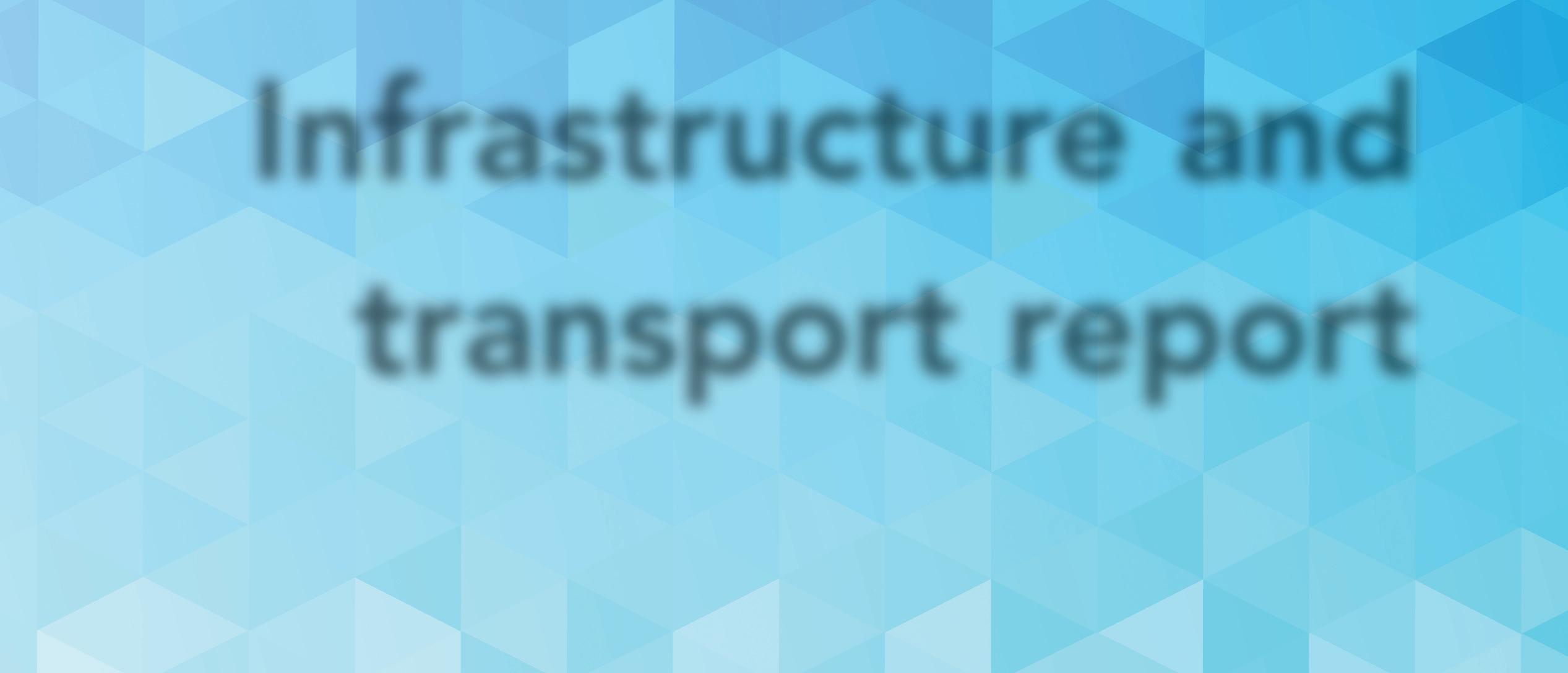

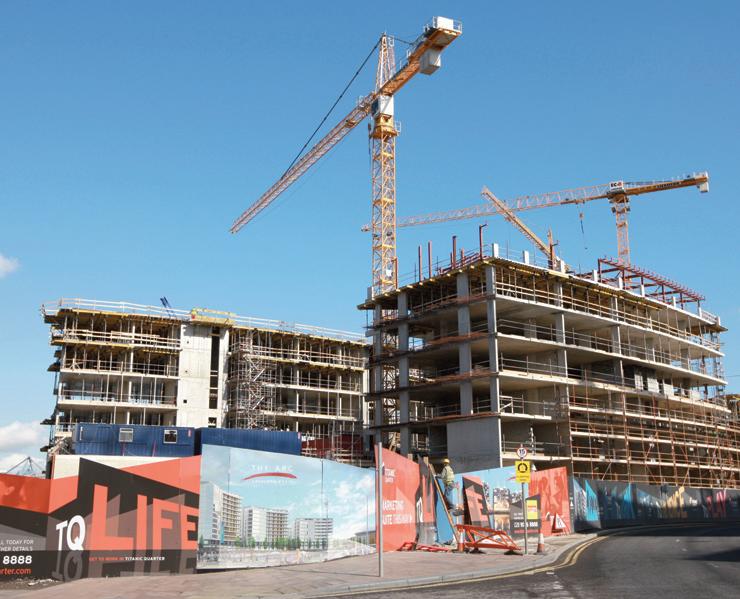







The passage of the Northern Ireland Budget Act, coupled with the UK-wide Spring Budget, leaves a lot of uncertainty for Northern Ireland’s infrastructure, with funding only to be allocated for projects which were signed off by the Executive prior to its collapse.
In the absence of a sitting Executive, Secretary of State Chris Heaton-Harris MP set the framework for a budget for Northern Ireland which was subsequently passed as a parliamentary Act in January 2023.
In his statement to the House of Commons in November 2022 outlining the draft guidelines for what became the Northern Ireland Budget Act, Heaton-Harris outlined his belief that: “Northern Ireland Ministers have long failed to demonstrate prudent fiscal management.
“Almost 10 years on from the commitments made in the Stormont House and Fresh Start agreements to put Northern Ireland’s public finances onto a sustainable footing, long promised public service transformation and fiscal sustainability has not been delivered.”
Complemented by the lack of a sitting Executive, as the DUP continues to use its boycott of the institutions to exercise leverage over the UK Government to change the Northern Ireland Protocol, devolved finances had been in the hands of Neil Gibson, Permanent Secretary for the Department of Finance, who was responsible for the implementation of previously-allocated funding.
Prior to the collapse of the Northern Ireland Executive, then-Finance Minister Conor Murphy MLA warned that the region was facing an overspend of over £600 million, in spite of over £300 million having remained unspent during the previous mandate.
Passed in January 2023, the Northern Ireland Budget Act provides financial allocations for the rest of the current financial year (ending 31 March 2023) along with provisional allocations to each department for the 2023/24 financial year, although the Secretary of State has stated that “…if the Executive has been restored in time for a budget for 2023/24, the UK Government will continue to work constructively with Executive Ministers, including on a sustainable budget that works for the people of Northern Ireland and supports economic growth”.
The budget raises infrastructure resource spending in Northern Ireland by 4.4 per cent when compared with the previous financial year, once the exclusions have been made of the one-off financial support during the Covid19 lockdowns, with the overall funding allocation for the 2023/24 financial year for the department amounting to £999 million, although this means it will still be running at a deficit, despite the fact that public spending in Northern Ireland is 21 per cent higher per capita than in the rest of the UK.
The allocation of the budget within the Department has not yet been set, although a spokesperson from the Department for Infrastructure told agendaNi: “Once the Department’s budget has been set, we will carefully consider the impact on service delivery. Given the overall financial position facing Northern Ireland departments, it is likely that some very difficult decisions will be
required that will impact on the level of essential services delivered.”
The Secretary of State explained that this allocation will be used for funding existing projects, such as the A5 and A6 road (which is set to be completed by the end of April 2023) schemes, as well as the York Street Interchange.
However, a number of projects, including the All-Island Rail Review, will not be enabled by the budget in and of itself due to the requirement for the reformation of an Executive, with the project requiring review and sign-off from a Minister for Infrastructure.
The supporting memorandum of the legislation outlines the scope in difference in the number of sources of income for the Department for Infrastructure when compared with its amount of expensive projects.
Northern Ireland, the supporting memorandum explains, will continue to receive EU funding on infrastructure projects, although it is not clear how much.
Additionally, sources of income are outlined in the forms of the Mater Hospital car park, operation of the blue badge scheme, and increasing enforcement of parking charges.
With infrastructure and transport a devolved issue in Northern Ireland, there is little by the way of UK-wide measures which will be significant for the transport sector in Northern Ireland from the UK Spring Budget, announced on 15 March 2023.
The UK Budget, in a rhetorically similar vein to that of the Kwasi Kwarteng budget, was billed as a ‘budget for growth’. The most significant measure for the transport sector on a UKwide basis is the freeze in fuel duty, a measure which was meant to be temporary amid the cost-of-living crisis, although UK fuel duty remains among the highest in the European continent.
“If the Executive has been restored in time for a budget for 2023/24, the UK Government will continue to work constructively with Executive Ministers, including on a sustainable budget that works for the people of Northern Ireland and supports economic growth.”infrastructure and transport report
Northern Ireland Secretary Chris Heaton-Harris MP in November 2022.
We want Northern Ireland to decarbonise both to achieve net zero by 2050, and to end our dependence on carbon fuels which not only threaten the planet, but also in the last year have placed such pressure on all our budgets as a result of volatile global markets. We want a stable, indigenous source of energy.
We also want to be able to both lessen our environmental footprint and allow local communities and business to grow organically.
And, finally, we want Northern Ireland to be an example to the world of green growth to fulfil the vision of the 10X economy and attract investment and high skilled jobs.
Doing so, however, means recognising the need to address these challenges as a whole rather than individually. Collectively we need to innovate, collaborate and act with both urgency and agility.
And that is at the heart of NI Water’s approach.
Northern Ireland, like many countries, faces a series of tensions going forward; tensions between the desire to revitalise local economies; the equally important need to achieve net zero and protect our precious environment; and the hard reality that public expenditure is under severe pressure, while inflation means money does not go as far as it used to.
Two other local factors also bring those tensions into particularly sharp relief.
The first is that the target of net zero by 2050 is no longer just an aspiration in Northern Ireland. As a result of Assembly legislation, it is now the law. The second is that we are starting further back than we should be in trying to protect our environment. The historic failure to invest enough in wastewater management services, to treat it as the essential service that it is, has caught up with us as a country.
Not only do we now need to modernise our wastewater system, we also need to catch up with growing public expectations around the environmental impact of those services.
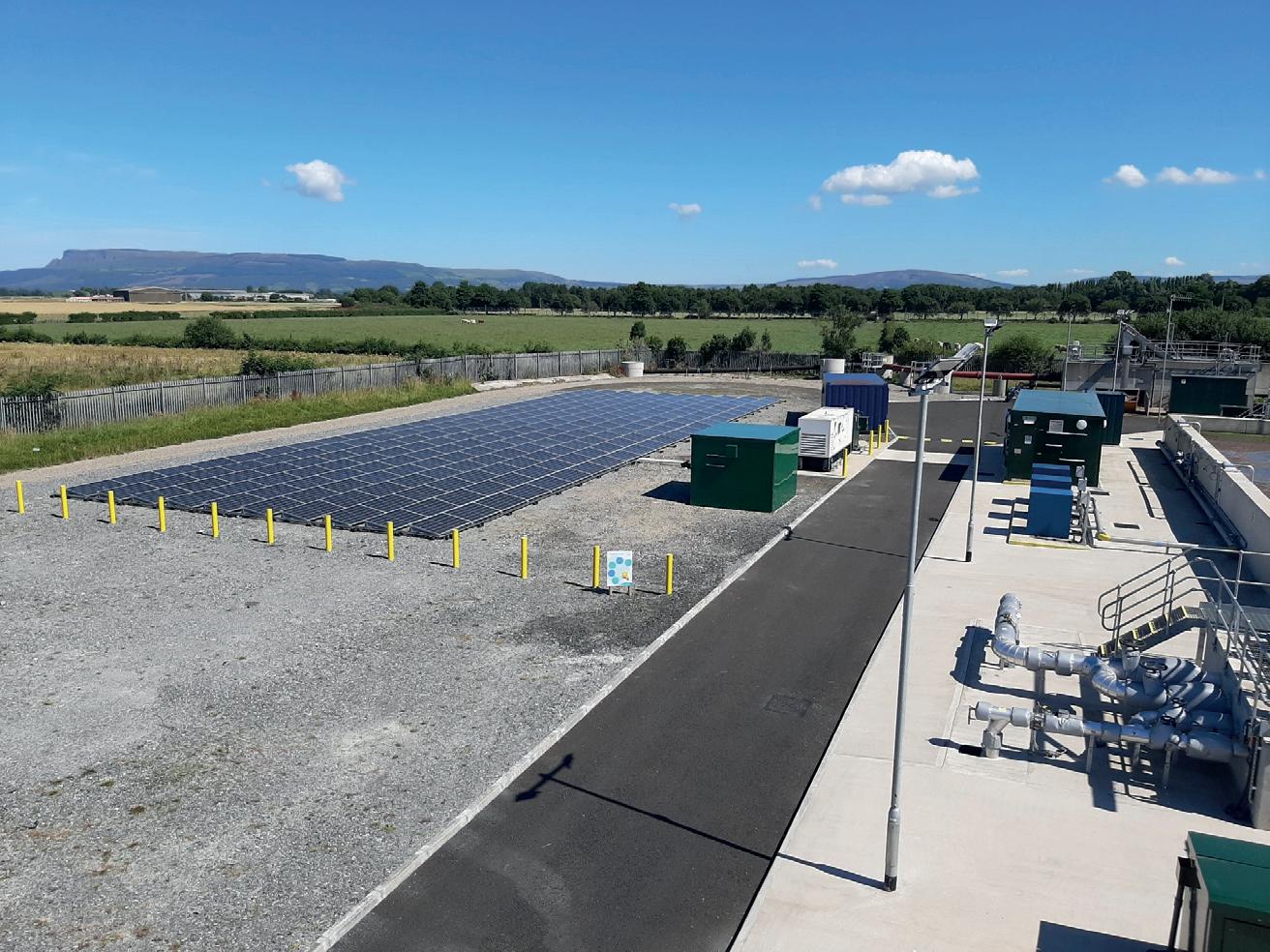
A Victorian system that was traditionally designed to use heavily diluted discharges as a relief valve at times of particularly intense rainfall, is increasingly at odds with the public’s legitimate desire to avoid any sort of pollution.
And that awareness of the limitations of the current system has driven constraints on development, whether for housing or business, right across Northern Ireland. Constraints that, in turn, act as a brake on local economies.
So how do we begin to square the circle of these apparently conflicting challenges?
The first step is to be clear about what we want and the outcomes we want to achieve.
As an organisation that has spent the last decade and more refining its processes and operations, NI Water recognises that the next generation of efficiencies has to come from addressing structural inefficiencies, such as the amount it pays for its largest cost item: the energy it uses.
That means, as set out in our Power of Water report, finding ways to use less, and, also, more fundamentally, making the shift to renewable energy through the use of wind and solar power, electrolysis, and hydro power. The result would be good not just for NI Water and its budget, but also Northern Ireland as a whole in helping it reach that 2050 net zero target. But that also means decarbonising both our own operations and that of our supply chain, as well as increasing the resilience of our assets so as they can deal with the impact of a changing environment as set out in our Climate Change Strategy.
Thirdly, it also means finding a way to align the desire for local development with the imperative of easing our environmental footprint.
The opportunity exits to make the environment an ally in ending Northern Ireland’s dependence on the legacy of bygone eras, whether it is the Victorian sewage network, or fossil fuels.
That Northern Ireland historically did not invest enough in its wastewater services has now been accepted across government, regulators, and the public at large.
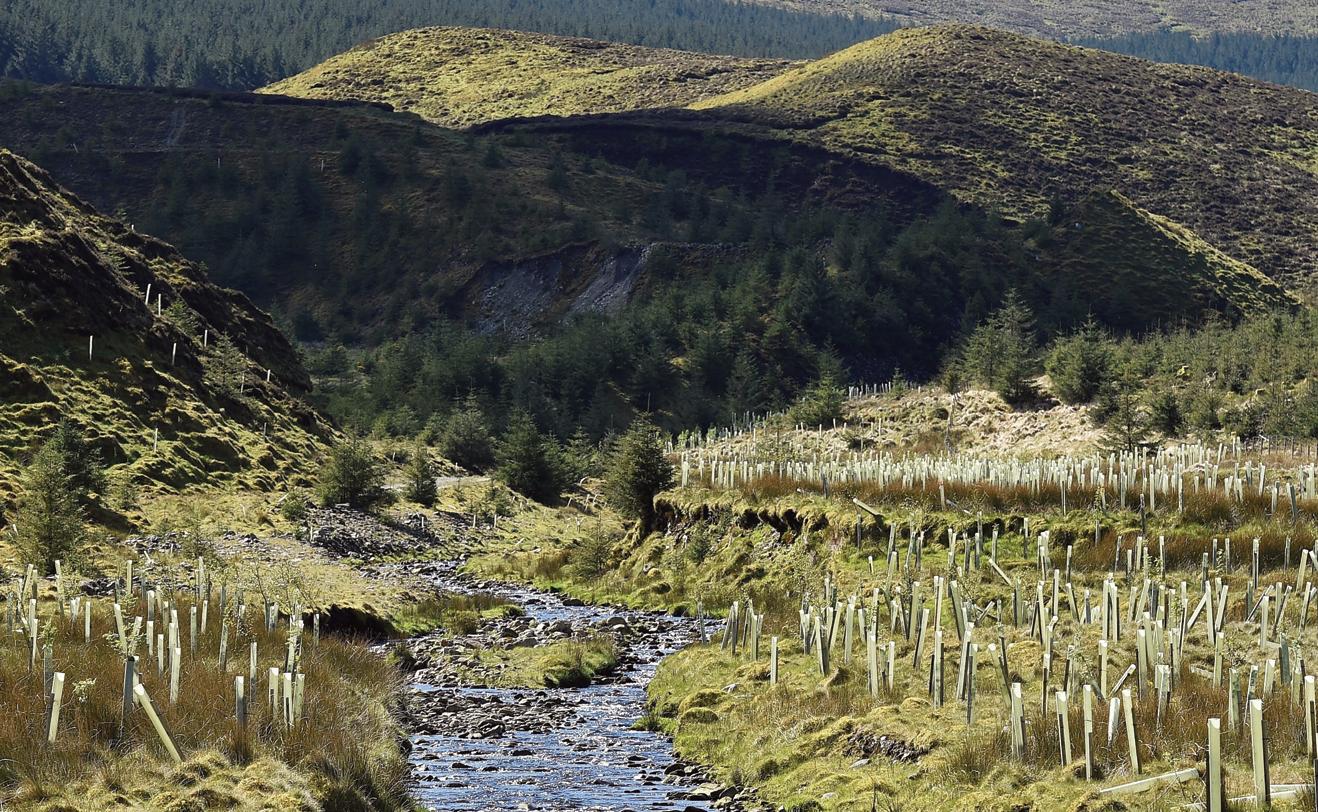
Our current regulatory settlement reflects that recognition by allocating new investment to help modernise the network, but the hard reality is that inflation in the construction industry, as in other infrastructure projects, has impacted that work and, even when it is finished it will take many years to clear the backlog.
The other reality is that as we have learnt over the past few years a uniform, one-size-fits-all approach does not always reflect local circumstances or timescales. We need a more sophisticated approach, one that balances economic, social, and environmental imperatives at a local level with the need to ensure equity across Northern Ireland as a whole. That is no easy task. It demands innovation, not just in terms of technology, but also in how the various agencies come together to find workable solutions. Collectively, NI Water, our regulators, government departments, and local representatives need to find ways to analyse, assess, and act to address the legacy of constraints we are all faced with.
Different solutions may be appropriate in different locations, but so long as they help achieve the outcomes of decarbonisation, protecting the environment and encouraging green growth we need to show the agility and flexibility to recognise and respond to those differences.
The environment has always been central to what makes Northern Ireland the special place that it is, but now we have the opportunity to make that environment an ally in ending our dependence on the legacy of bygone eras, whether it is the Victorian sewage network, or fossil fuels.
Now we can use modern technology to harness the wind, the sun, water, and our unique geography, to help Northern Ireland, its economy, and local communities make that transition. NI Water will keep playing its part in doing so.
Contact us
E: waterline@niwater.com
W: niwater.com/contact-us
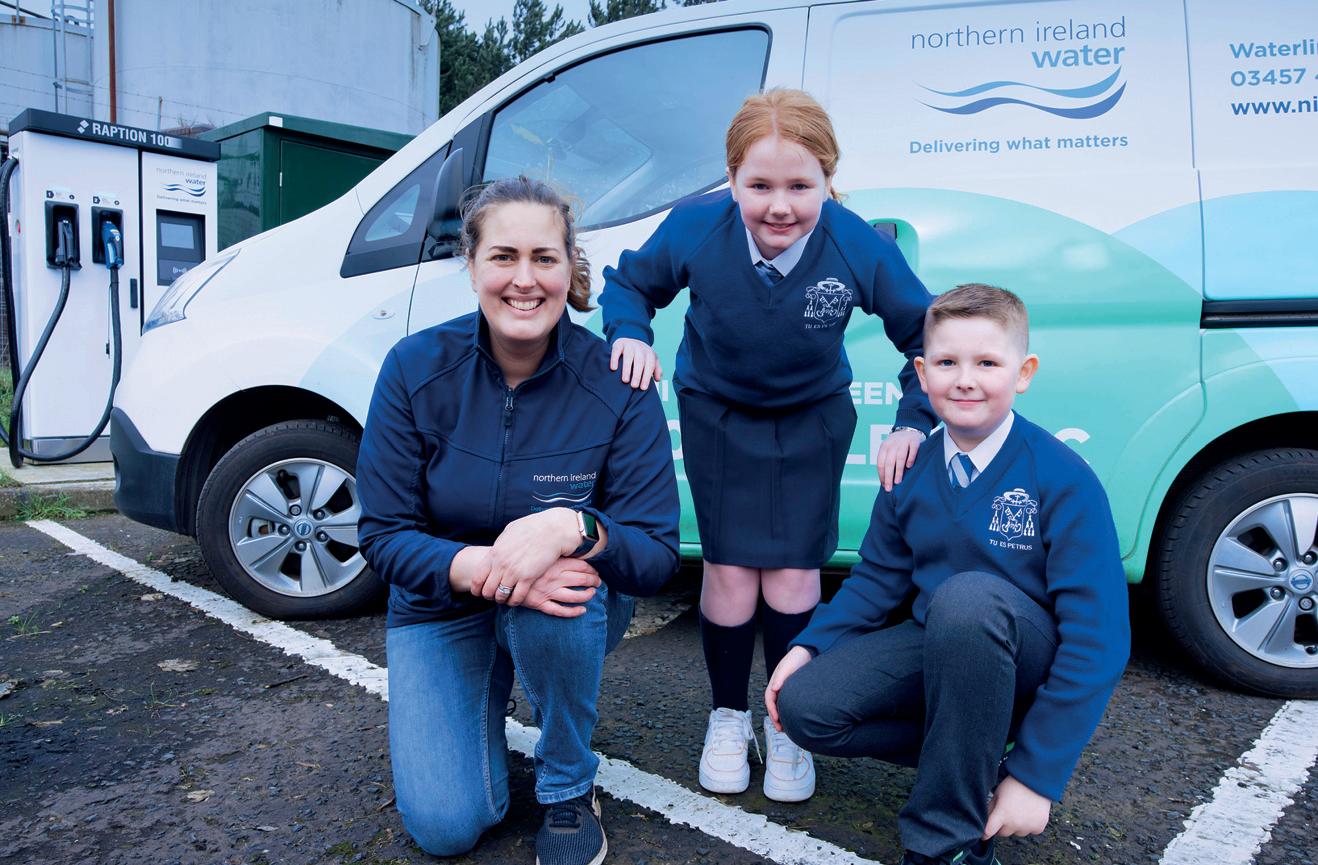
“We want Northern Ireland to be an example to the world of green growth to fulfil the vision of the 10X economy and attract investment and high skilled jobs.”NI Water’s Environmental Outreach and Learning Officer, Anna Killen demonstrating a new electric van to local school children.
Published by the Executive Office, Infrastructure 2050 – draft Investment Strategy for Northern Ireland was opened for consultations which were supposed to close in April 2022, with a final strategy to be agreed towards the end of 2022.


However, since the Executive currently has no political leadership and is not functional, no progress has been made with the Executive Office website still stating that the draft strategy is open for submissions, and that the deadline for submissions is 20 April 2022 – almost one year prior to the publication of this article.
Upon the prospective reformation of an Executive, it is not clear whether the consultations process will re-open. Furthermore, there is the prospect of direct rule, with Secretary of State Chris Heaton-Harris MP having already taken the step of setting a budget for Northern Ireland, although this budget will only fund existing projects which have already been signed off by prior executives.
Central to the challenge pending the future formation of an Executive will be the implementation of the Medium-Term Infrastructure Finance Plan outlined as part of the strategy as, in the draft document’s own words: “Long-term investment planning has been hampered by immediate-term (one- to three-year) budget settlements.”
The strategy itself has five objectives: Cutting emissions; strengthening essential services; making Northern Ireland more competitive; making Northern Ireland’s towns and villages nicer places to live; and making the most of new technology.
A critical investment strategy has made little to no progress since it was released in draft form in January 2022, prior to the collapse of the Northern Ireland Executive.
The draft report acknowledges the inefficiency in Northern Ireland’s wastewater services, with more than 70 per cent of the infrastructure in Northern Ireland to deal with wastewater treatment serving only 10 per cent of the population.
“Across the region, some of our combined wastewater plants that collect rainwater runoff, domestic sewage and industrial wastewater into one pipe are nearing or at capacity – especially at times of high demand due to adverse weather,” the report states.
It continues: “This is now acting as a brake on the planned development of the new homes and businesses we need. The lack of wastewater treatment capacity has also resulted in an excess of small legacy treatment works, often developed privately to enable small-scale housing developments to proceed.”
To solve Northern Ireland’s ailing infrastructure, the report explains that “we will need other essential infrastructure such as public transport and water and wastewater facilities to be fit for purpose”.

“This will require a more collaborative and joined-up approach to planning and investment to avoid sub-optimal or ad hoc outcomes.”
In the Republic, Environment Minister Eamon Ryan has been a proponent of the 15minute city model as a means of cutting the number of journeys taken by the average citizen, with the potential benefits of cutting emissions, increasing efficiency in the transport system, and making work accessible for citizens.
Likewise, when the draft Investment Strategy was published, it too proposed a similar model to be brought into more widespread use in Northern Ireland, in addition to expanding the use of electric vehicles in Northern Ireland.
“We need to cut the number of journeys we take, and make sure more of the trips we do take are by public transport or ‘active travel’ – namely, walking or cycling.
“Also, over 40 per cent of vehicles will need to be electric by 2035 if we are to meet our emissions targets. So, we will invest in charging stations and battery recycling, and encourage drivers to switch to alternative fuels.”
Currently, Northern Ireland has 11,476 electric vehicles registered on the roads, less than half the per capita rate in the Republic.
Already characterised as a recognised leader in many specialist areas such as cybersecurity, data analytics, life and health sciences, and fintech, Northern Ireland has the potential to be Europe’s leading foreign direct investment destination for new software development.
The report balances these promising features of the Northern Ireland economy by outlining that the region “suffers from poor productivity, relatively low wages, with too many lacking high-level skills or in need of reskilling; high rates of economic inactivity; and relatively low levels of investment in research, development and innovation”.
Despite the recognition of Northern Ireland’s lagging infrastructure and subsequent economic stagnation, backed up by a strategy which gained political support which will likely ensure if an Executive is formed again in the future, the implementation of the Investment Strategy is entirely dependent on the reformation of an Executive, with deadlines for consultations and implementation having already been missed.



March 2022 Climate Change Committee (CCC) report has found.
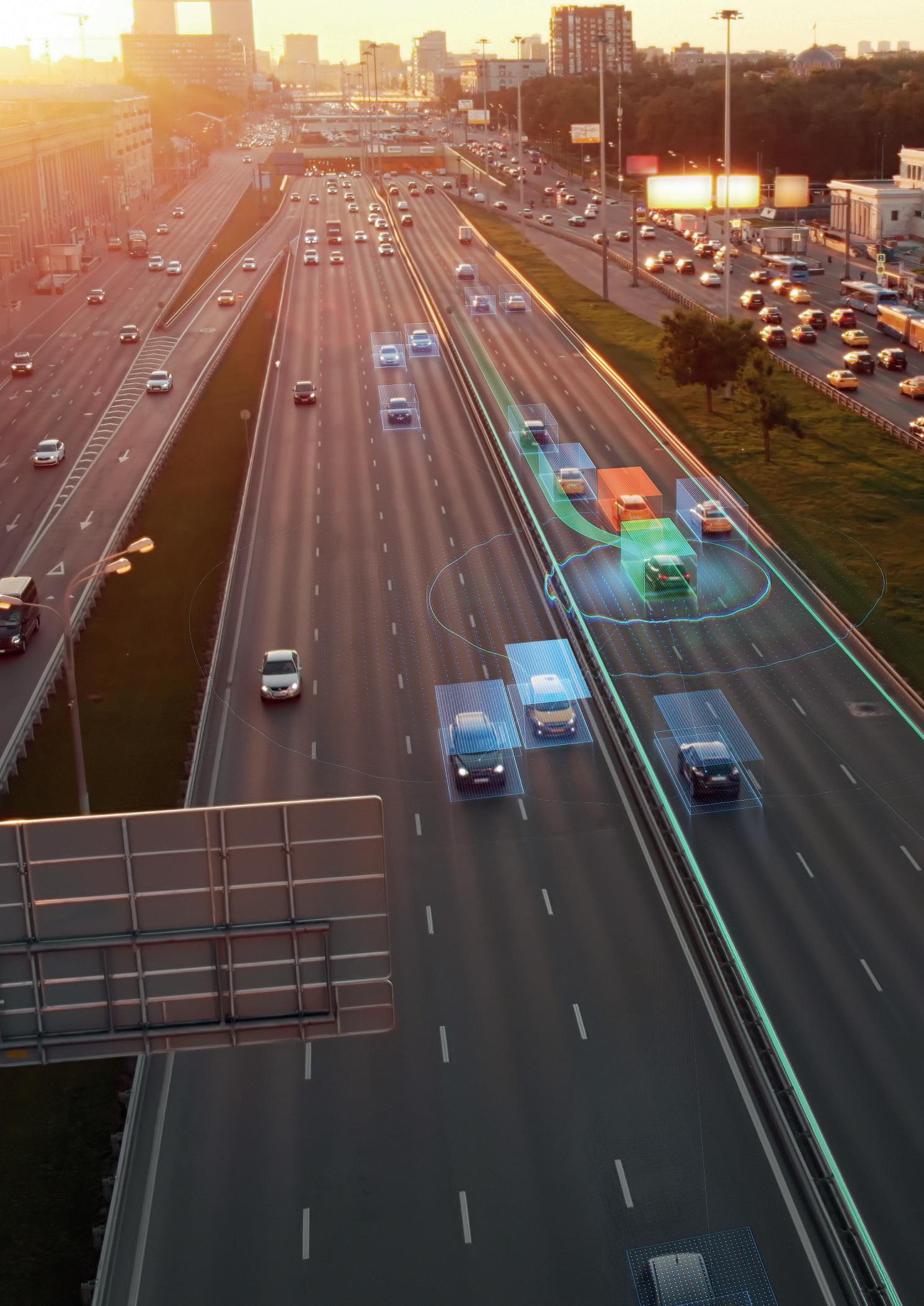
The report furthermore states that emissions could be reduced by 83 per cent by 2032 if all of the current proposals, namely livestock reductions and increase in use of electric vehicles, are implemented over the next decade. Under UK legislation, petrol and diesel combustion engine-based vehicles will be banned from sale throughout the UK by 2030, thus calling for a reform of the transport model which emphasises the importance of UK Government projects such as the proposed highspeed rail links between the north and south of England.
Northern Ireland’s rail network development has been stifled by the collapse of the Northern Ireland Executive, with the All-Island Rail Review – a collaborative project between the Republic’s Department for Transport and the Department for Infrastructure – unable to publish its recommendations for rail development throughout the island until there is an Executive formed in Northern Ireland.
The CCC report states: “By 2032, every new car and van sold in Northern Ireland should be zeroemission. This implies substantial investment to expand the electric vehicle charging infrastructure in Northern Ireland, and major scale up of plug-in vehicles’ share of new car sales from the current 10 per cent to 100 per cent within a decade. Enabling an increased proportion of journeys made by walking and cycling will be important to improve public health and air quality alongside reducing greenhouse gas emissions. Rail services should also be largely electrified, with the proportion of diesel freight trains in operation falling to below 15 per cent by 2050, from 87 per cent in 2020.”
Societal factors remain significant, with a report published by the Department for Infrastructure outlining that just over one-third (37 per cent) of the population would either ‘definitely’ or ‘strongly consider’ purchasing an electric vehicle, likely due to price factors with the majority of the people of Northern Ireland currently living between pay dates with no necessary savings to purchase electric vehicles.
Furthermore, electric vehicle charging infrastructure in Northern Ireland is only available every 30 miles, with the recently announced EV strategy only announcing an incremental increase in this target that electric vehicle infrastructure is available for residents every 25 miles, thus cutting off electric vehicles as a feasible means of transport for poorer residents in rural areas.
the availability of a relatively small grant (£3,000) for prospective purchasers, despite the average UK price of an electric vehicle amounting to more than £44,000, according to the Great Britain-based car service Book My Garage.
According to the Department for Infrastructure, there are, as of June 2022, 11,476 electric vehicles registered in Northern Ireland electric vehicles operational on the roads of Northern Ireland, a figure which is can be compared to the approximately 67,000 registered in the Republic of Ireland (October 2022).

Figures released by the Department of Agriculture, Environment and Rural Affairs show that transport emissions in Northern Ireland remain at broadly the same levels as they were in 1990, owing to an over-reliance on cars in Northern Ireland’s transport system.
In 2020, greenhouse gas emissions emanating from the transport sector amounted to 3.4 MtCO2eq; the same as they were in 1990. Whilst, at first glance, this appears promising, these figures come with the caveat of the one-off reduction in transport emissions which took place in 2020, meaning that emissions were almost certainly artificially deflated amid the Covid-19 pandemic.

Statistics released by the Department of Agriculture, Environment and Rural Affairs in 2022 show that greenhouse gas emissions in Northern Ireland have reduced significantly less than compared to England, Scotland, and Wales over the past two decades. Between 1990 and 2020, Northern Ireland greenhouse gas emissions fell by 23.9 per cent, whilst the overall reductions throughout the UK was 49.9 per cent.
In 2020, the transport accounted for 84.9 per cent of the greenhouse gas emissions which took place between 2019 and 2020. With workers increasingly commuting to offices again, and aviation levels rising following the shock to that sector during the pandemic, the Northern Ireland Executive, in a report released in February 2023, has projected that emissions in Northern Ireland will have increased in 2021 and 2022. A subsequent reduction to 3.1 MtCO2eq by is projected 2030, once the full effects of the upcoming transformation to electric vehicle infrastructure and renewable fuels are being felt.
However, even if the projection of 3.1 MtCO2eq by 2030 comes to fruition, this will still only mark a 0.3 MtCO2eq reduction in emissions from the transport sector from the base year of 2020, meaning that the transport sector in Northern Ireland cannot solely deliver the transition to net zero. There is currently no plan in Northern Ireland which will transform the fundamentals of the transport sector, meaning that the population, under the current plans, will remain reliant on private vehicles as their primary form of transport, in the absence of any significant expansion of public transport.
John O’Dowd MLA, prior to his enforced resignation as part of the collapse of the Northern Ireland Executive, intimated that he wished to see a new railway connection to Belfast International Airport, but has remained hesitant to comment on rail connectivity as a solution for rural regions in Fermanagh, Tyrone, Derry, south Down, and south Armagh, meaning that residents of these areas are likely to remain reliant on private vehicle transport.
In the Republic, Minister for Transport Eamon Ryan TD has outlined his vision for a transformation of the transport sector which expands the availability of public transport, as well as being a proponent of the 15minute city urban planning concept which would reduce the need for
This concern around affordability is backed up by 4
lengthy journeys and use of private vehicles, both would result in a significant reduction of greenhouse gas emissions. However, despite these measures, it is worth noting that the Republic’s Climate Change Advisory Council has found that the Irish Government may not reach 40 per cent of the emissions targets it has set itself.

Methane currently accounts for 22.3 per cent of the overall emissions of greenhouse gases in Northern Ireland, whilst in the UK overall, methane accounts for 9.3 per cent of emissions. Therefore, the importance of the transport sector reducing its greenhouse gas emissions is paramount, given that the Climate Change Act, passed in the Assembly in 2022, contains the ‘Poots compromise’ that the agricultural sector – the largest emitting sector in Northern Ireland – does not have to achieve net zero methane emissions, instead only having to reduce methane emissions by 46 per cent before 2050.
This was a clause inserted into the Climate Change Bill as a compromise between then-Minister for Agriculture, Environment and Rural Affairs, Edwin Poots MLA, and then-Green Party leader Clare Bailey, who proposed a net zero emissions target for methane by 2050 in line with the rest of the UK.
The agriculture sector, according to the statistical analysis published by the Department of Agriculture, Environment and Rural Affairs in late 2022, is the largest-emitting sector in Northern Ireland, followed closely by transport.
According to the Department for Infrastructure: “An unadopted road is one where a street planning function has been exercised, a bond has been placed under the Private Streets (NI) Order 1980 and the Department is not satisfied that the street has been sewered, levelled, paved, channelled, made good and lighted.”
The process of adoption involves the Department for Infrastructure acquiring the road from its previous private owner, although in practice the Department has been reluctant to adopt roads owing to the cost implications of bringing the road to an acceptable standard, and in practice require roads to be of a certain standard and have a high enough level of existing infrastructure to minimise costs to the public purse prior to commencing adoption.
A further problem exists in that ownership records can be lost over the course of time, particularly with old roads, thus throwing into question who the DfI is purchasing the road from.
Owners of properties adjacent or attached to unadopted roads can find themselves vulnerable to a range of factors and, unlike those living on properties adjacent to adopted roads, are not able to get support from the Department for Infrastructure.
This scenario often results in difficulties selling such properties, as prospective purchasers cannot obtain a mortgage to buy the property. Lenders are reluctant to lend money for the purchase of a property in these circumstances which can result in property owners being unable to sell their property, potentially having to reduce the sale price and often limits them to selling to cash buyers.
In 2012, the Assembly’s Regional Development Committee carried out an inquiry on unadopted roads and sewage systems in Northern Ireland, reporting there are between 1,200 and 3,500 unadopted roads, and around 1,200 unadopted sewage systems in Northern Ireland. The inquiry further found that it would cost approximately £300 million to bring these roads up to a standard sufficient to allow for adoption.


The Committee for Infrastructure, in its 2017-2022 term report prior to the denoument of the Assembly for the 2022 election, stated that “the recommendations made in the 2012 report are yet to be fully considered”.
In response to a question from Alex Easton MLA in October 2022, thenMinister for Infrastructure John O’Dowd MLA explained the process for the adoption of roads.
“New roads are normally adopted by the Department for Infrastructure under Article 8 of the Private Streets (Northern Ireland) Order 1980. This process involves the department first determining the street for adoption under Article 3, as part of the planning process.”
He continued: “Prior to development commencing, the developer is required under Article 32 to enter into an agreement with my department. Once the developer joins the street to a public road and constructs it to an adoptable standard in conformity with the determination, my department may issue a preliminary certificate.
“Following a one-year maintenance period, during which time the developer is responsible for making good any defects, my department may then issue a further certificate and the street is then adopted.”
The reasons for the lack of action following an inquiry which took place more than a decade ago are unclear, and cannot be fully explained by the lack of a functioning Executive, with the Executive having been active for six of the years between 2012 and 2023, and being functional for parts of the years 2017 and 2020. With no further action possible until a new Executive is formed, it is likely that the shortage of road adoption will continue.
There are between 1,200 and 3,500 unadopted roads in Northern Ireland, meaning that there has been no progress on a 2012 enquiry which found a similar number of roads to be unadopted in the region.
average, simply cannot continue. There is a need to address the public transport funding shortfall as a priority so that the network can not only be delivered but enhanced; otherwise, the cross-cutting aspects that public transport delivers for health, education, the economy, and our environment, will be in jeopardy, with Northern Ireland’s net zero target moving out of reach.
As well as working with a significant funding discrepancy in Northern Ireland, as compared to Great Britain, there is also a significant gap between funding here and funding in the Republic of Ireland. In 2019, just prior to the pandemic, the per-capita subsidy in the Republic was €2.17, compared to £0.86 in Northern Ireland.
Translink has a wide range of ambitious plans for the months ahead and beyond towards 2040, but these can only be realised, and provide benefit to communities in every part of Northern Ireland, with appropriate, long-term support and funding.
Public transport is key to the delivery of any future Programme for Government, as well as the delivery of any net zero strategy. It is essential for the good of our economy and our environment that there is a modal shift to sustainable transport and reliance on the private car is reduced, this will help to deliver on a broad range of deliverables in health, education, social policy, community development and above all, the road to net zero.
2023 is shaping up be a challenging year for Northern Ireland’s economy and the budget for public services, with significant impacts being felt across a
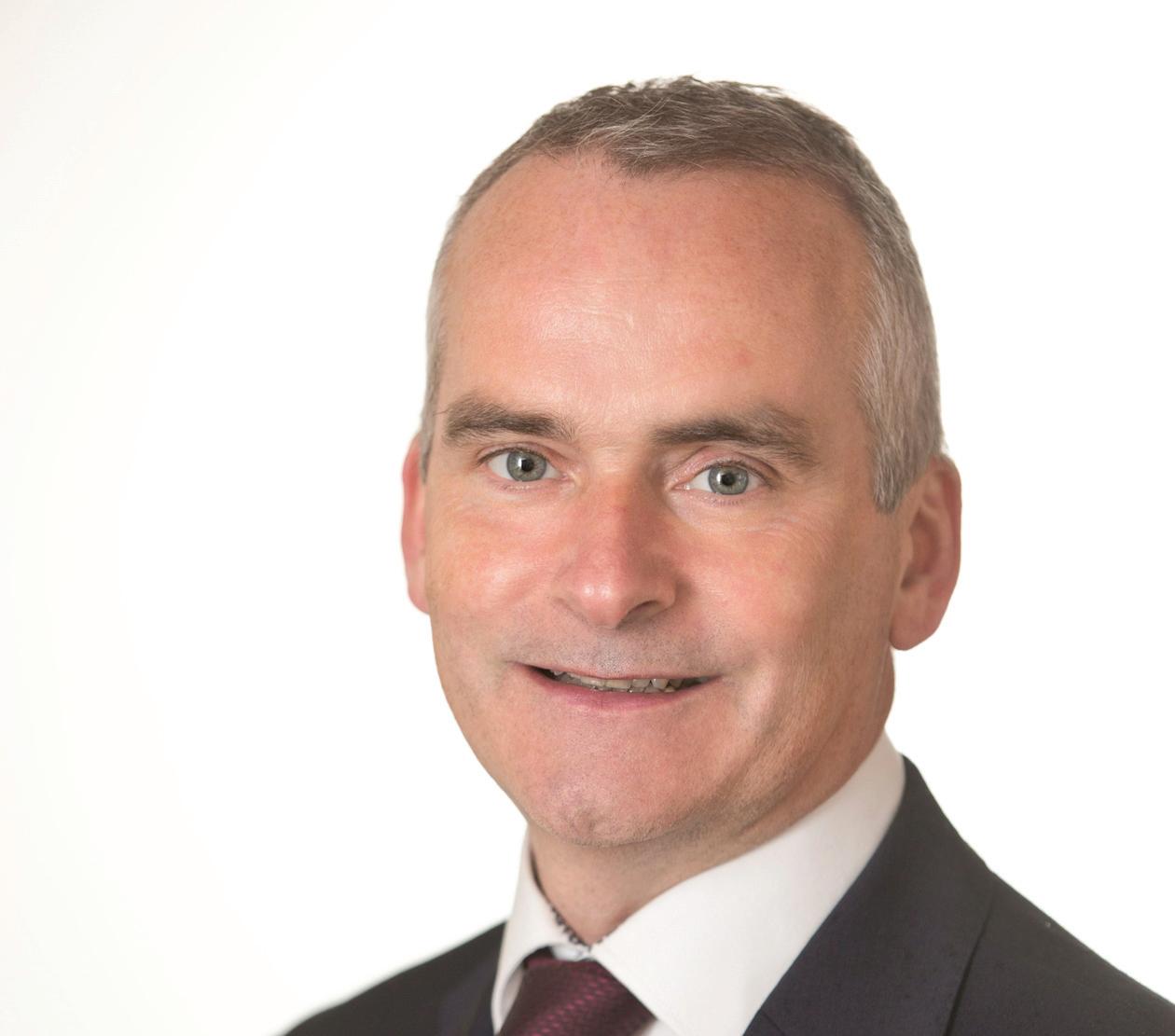
wide range of deliveries and there is a pressing need to ensure that public transport, a major enabler of a vast number of other policy priorities and a key component of the transition to net zero, is appropriately funded as part of this process.

Translink wishes to see public transport adequately supported in the time ahead, with financial stability and an agreed budget that will enable us to deliver our essential services for the benefit of the whole community.
The situation as it currently stands, with public transport spending in Northern Ireland sitting at 30 per cent of the UK
Our ambitions remain unchanged, however, and Translink is wholly committed to achieving net zero across our network. Climate change is the most pressing environmental concern of our time, and the time for action is now. We must continue the progress towards net zero this year, in line with the 2022 Climate Change Act; transport accounts for around 20 per cent of all Northern Ireland’s emissions, a figure that has actually grown in the last thirty years. Translink has a strategy to accelerate the transformation towards net zero, seeking to deliver a 50 per cent reduction in emissions by 2030 and achieve net zero across our bus and rail network by 2040.
We are embracing zero emission technology and innovations to decarbonise the fleet, and we are making strong progress; we already
Public transport is a cross-cutting enabler for economic growth, social connection and environmental progress, writes Translink Chief Executive, Chris Conway.
operate one of the largest zero emission bus fleets in these islands, and over one third of the Belfast Metro fleet already runs on zero emission technology.

The headline this year however will be the transition to zero emission of the entirety of the Derry~Londonderry Foyle Metro fleet in the months ahead, as well as an initial roll-out of zero emission services in the Causeway Coast area . Many of our major depots, including Belfast’s Milewater Service Centre and Pennyburn in Derry~Londonderry, are already equipped with some of the largest charging and refuelling points in the UK and Ireland, with Newtownabbey depot hosting one of the largest hydrogen refuelling plants in Europe.
Our railway fleet will also transition to renewable technologies ahead of the 2040 target, and we are working with key stakeholders to deliver a range of developments. We have a joint venture with Irish Rail to bring forward improved cross-border Enterprise frequency, including the procurement of additional fleet, which will deliver an hourly service frequency and improved journey times.
The forthcoming All-Island Strategic Rail Review will bring forward recommendations to expand the opportunities offered by rail transport. We are also working with some of the opportunities presented by the UK Government’s Union Connectivity
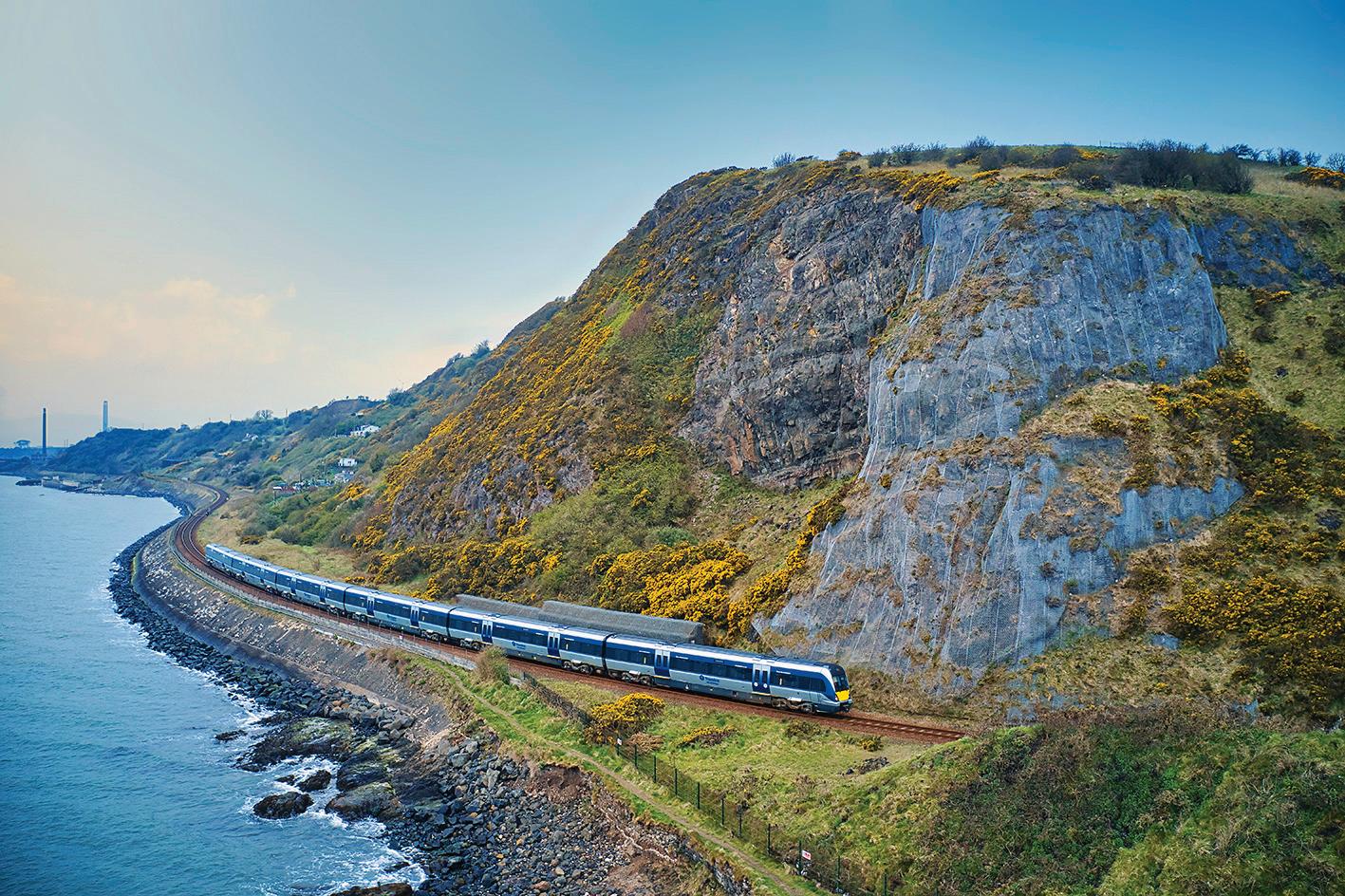
Review, which will help us enhance our connections to other transport hubs, such as airports.
Passenger numbers have returned strongly to bus and rail travel during 2022 and we will be working to continue this trend this year, with a continued focus on high levels of customer service; we are also continuing the deployment of contactless ticketing across the network to make it easier for everyone to use public transport, providing greater choice and flexibility.
We are also undertaking major track and signalling works across our £3 billion rail asset to address years of underinvestment and to make sure that rail infrastructure is fit for future generations to use, helping to improve journey reliability and safety, and we will complete work in the Lisburn area, at Cullybackey, and at Lagan Junction in central Belfast, in the months ahead. We will work to progress the muchanticipated Phase 3 project on the Derry~Londonderry railway line, helping to build capacity and provide essential resilience on this vital inter-city link. Alongside this, work is being maintained at pace at the flagship Belfast Grand Central Station project, which is on target to enter the first phase of operational service by late 2024, with other major projects, including the new
station at York Street, also making progress.
We also look forward to working with the Department for Infrastructure to deliver Belfast Rapid Transport Phase 2, building on the success of the existing east-west and Titanic Quarter connections in operation since 2018.

Translink is working to expand the public transport network to support the economy and our environment in Northern Ireland with a high-quality, sustainable service, working in support of other policy areas, but we are clear that this will require ongoing investment in our services and in our infrastructure.
We want to work with a wide range of stakeholders to ensure that public transport is appropriately funded and supported, with our society benefitting from better, extended, more frequent services, and public transport helping to drive economic and social regeneration, playing our full part in the shift towards an active, sustainable, net zero future, one that is Better. Connected.
For more information, please visit www.translink.co.uk/betterconnected


The draft strategy outlines a target of 35 or less deaths by road accidents by 2030, with a target of 376 or less injuries on Northern Ireland’s roads by 2030.

Statistics from the Department for Infrastructure show a consistent decline in deaths from road traffic collisions throughout the 2010s, with the figure having reduced from an average of 126 between 2004 and 2008 to a figure of 50 by 2021.
The strategy sets an ambition of a 60 per cent reduction in young people suffering road deaths or serious injury by 2030.
In the long term, the strategy outlines an ambition for zero road deaths or serious injuries in Northern Ireland by 2050.
To achieve this, the draft document states that the Department for Infrastructure will expand the use of initiatives such as 20 miles per hour (mph) limits outside schools and the use of speed indicator devices.
The Police Service of Northern Ireland (PSNI) data continues to show that approximately 95 per cent of road casualties are due to a number of dangerous road user behaviours with the majority of collisions being caused by carelessness/inattention, driving at excessive speed, or through alcohol/drugs despite interventions to date. Additionally, uncertainties remain as to the lasting impacts of the Covid-19 pandemic on travel choices and behaviours.
The new strategy, if implemented, will act as a successor to the Northern Ireland Road Safety Strategy to 2020. The main strands of the previous strategy included the introduction of 20mph zones around vulnerable trafficking zones such as around schools, as well as a maintenance of focus on wellestablished marketing campaigns.
The draft document outlines the progress made against the previous road safety strategy through the
A draft Road Safety Strategy was announced outlines ambitious targets of halving the numbers of deaths and injuries on Northern Ireland’s roads by 2030.
2010s until 2020. Launched under former Environment Minister Edwin Poots MLA, the targets outlined were measured against base numbers established in the period between 2004 and 2008.
The previous strategy targeted a reduction in deaths from road traffic collisions of 60 per cent by 2020, a target which was not met by 2020, although it was in 2021, a year behind schedule, (there is the added caveat of the reduced amount of road usership emanating from the Covid-19 pandemic).
Northern Ireland, Britain, and the Republic of Ireland have among the best relative records on road safety in the European continent, with all three states having a road death rate below 30 per one million people. For context, France and the Netherlands both have death rates of between 31 and 40 per one million.
The Department for Infrastructure, in January 2023, released statistics which outline the scale of the challenge of halving the numbers of road deaths and injuries roads by 2030. 58 per cent of road users who took part in the survey admitted to using their mobile phones whilst driving.
Despite this high level of mobile phone usage whilst driving, users are acutely aware of the risk associated with such actions. 94 per cent of road users stated that they believed that using a mobile phone whilst driving increased their likelihood of being involved in an accident.
The survey further states that 90 per cent of road users correctly assume that the presence of street lights translates into a 30mph limit. A point for concern is that a small number of respondents found it acceptable to drive at 70mph in an area with street lights, pointing to the potential danger posed by a minority of road users.


Having been announced in draft format, implementation of the strategy requires sign-off from the Northern Ireland Executive, which remains absent as the DUP boycotts the institutions in an attempt to leverage influence over the UK Government to change the Northern Ireland Protocol.
Announcing the draft strategy in October 2022, then-Minister for Infrastructure John O’Dowd MLA stated: “Unfortunately, due to the ongoing absence of an Executive, it has not been possible for me to deliver a final strategy at this time. I have however sought support from ministerial colleagues to allow my officials to continue to develop preparatory work, and to co-ordinate with other Departments, on the final form of this Strategy in anticipation of the return of a functioning Executive.”
Thanks to the Local Full Fibre Network (LFFN) and Rural Gigabit Connectivity (RGC) projects, over 887 public sector buildings have access to high-speed ‘gigabit capable’ infrastructure throughout Northern Ireland.
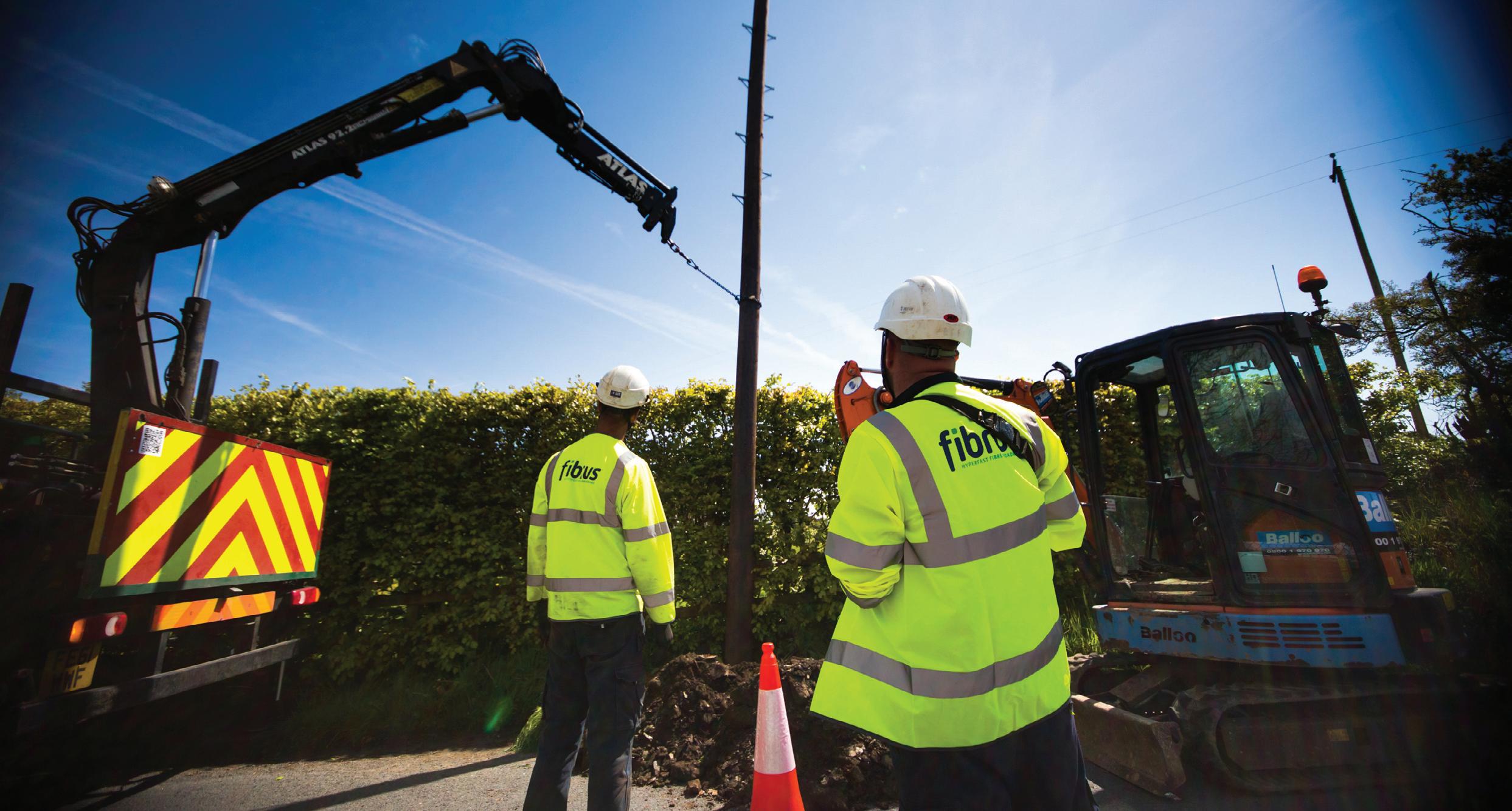
The initiative was delivered by the Full Fibre Northern Ireland (FFNI) Consortium, which is made up of 10 councils outside Belfast and the Business Services Organisation (BSO), and led by Newry, Mourne and Down District Council. Its aim was to implement an exciting new collaborative programme to drive greater investment in fibre infrastructure and digital related projects across Northern Ireland at a local authority level.
Director of Enterprise, Regeneration and Tourism at Newry, Mourne and Down District Council, Conor Mallon, explains: “Shortly after it was established in 2018,
the Consortium applied for up to £15 million from the Local Full Fibre Networks Challenge Fund (LFFN) to invest in full fibre connectivity services. This bid placed a heavy emphasis on a multi, local authority collaboration that would help to integrate services to serve the public sector and stimulate further rollout of full fibre to residential areas. This was later supplemented with a subsequent successful bid for up to £9 million of UK Government funds from the Rural Gigabit Connectivity Fund (RGC).”
The project concept was designed and delivered by a centralised hybrid operations team within Newry, Mourne and Down District Council, which brought together a powerful blend of public sector commitment and local knowledge, with highly experienced technical, commercial and legal consultants, and expert digital infrastructure providers, all carefully
selected through a rigorous and robust procurement process.
Build partner and local full fibre broadband provider, Fibrus, supported the rollout of the project on behalf of FFNI. The installation phase, which was delivered between February 2021 until March 2022, connected over 240 GP surgeries, 148 community centres, 90 council offices, 79 recycling centres, 69 fire stations and 63 leisure centres, which now have the required infrastructure to access internet speeds at least 10 times faster than their old, mostly copper-based connections. And, as requirements increase in the future, they will be able to tap into gigabit capable speeds of 1,000 megabits per second and above.
Talking about the work undertaken to achieve this rollout in such a short period of time, Mallon says: “To connect these public sector buildings, Fibrus extended
One of the largest broadband initiatives delivered by multiple public sector organisations across Northern Ireland has successfully delivered the full fibre infrastructure required for high-speed connectivity to public sector buildings in order to fast track digital transformation and help improve the rollout to surrounding areas.
its own fibre broadband network and commissioned Openreach in places where it was better value to do so or where Fibrus had no plans to move into an area.
“During installation, Fibrus and Openreach employed a combination of new civil work and utilised Openreach’s existing Physical Infrastructure Access (PIA), which enables other communication providers to share its existing access network infrastructure. Utilising PIA not only reduced costs, it provided an efficient route to getting connections setup quickly.”
This multi-million-pound investment has contributed to the development of an important telecoms infrastructure. Additional connections can now be made to nearby residential and commercial properties from these public sector sites through separate commercial investment plans, allowing communication providers to extend the rollout of gigabit capable connectivity.
Better digital infrastructure is widely considered to drive economic growth and assist the region to flourish. Mallon continues: “FFNI is essentially an economic development and regeneration vehicle contributing to the advancement of an important telecoms infrastructure and providing increased access to full fibre within public sector buildings.
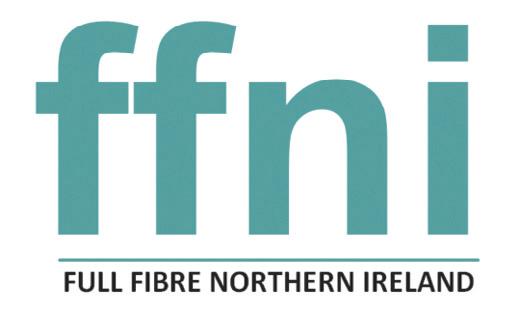

“Councils involved in the FFNI project have now started to put measures in place to make use of this infrastructure through separate Wide Area Network (WAN) plans. The FFNI infrastructure and these overlaying projects will help to enable more efficient delivery of digital services, achieve improved productivity for residents, local businesses and employees, and support the development of new technology initiatives from within each of the local councils.
“In the long term, the infrastructure will help to develop better digital quality services and the high-speed network
will complement the digital projects under the City and Growth Deals currently operating in Northern Ireland. Moving from an ageing copper network to a cutting-edge, next generation, ‘gigabit capable’ network, provides tremendous opportunities for SMART City applications and new innovative digital services to be implemented.
“For Newry, Mourne and Down, this new network will help to upgrade the delivery of our frontline public sector services, lower operational costs, and boost business productivity. This will help to address the growing demand from residents and businesses for digital services and support the improvement of educational resources, whilst reducing the digital divide across the district. By revolutionising how the public sector operates, the positive impacts will be even more far reaching for years to come.”
Both the LFFN and RGC projects delivered under FFNI, mark the completion of one of the largest, public sector broadband initiatives delivered by multiple public sector organisations across Northern Ireland, funded as part of the UK Government’s Levelling Up Strategy. The committed efforts of the FFNI Consortium and its component Councils and public sector partners, together with the significant investment from UK Government (BDUK) and Fibrus, will help make a tangible difference not only to the public sector, but also to the lives of families, people, communities and businesses at risk of digital exclusion across the province.
T: 0330 137 4000
E: info@nmandd.org
W: www.newrymournedown.org
Worryingly, the Climate Change Committee’s (CCC) critical assessment of Northern Ireland’s progress towards net zero was not based on current trajectory, but rather on the assumption that Northern Ireland will undertake an “extremely challenging” balanced pathway.
Assumed in the balanced pathway are several significant transitions beyond Northern Ireland’s current scenario. These include decarbonisation of electricity generation, an almost one-third reduction of Northern Ireland’s livestock numbers, a significant increase in peatland restoration and afforestation, and, that all new car and van sales be zero-emissions by the first half of the 2030s.
That decarbonisation of the private vehicle fleet will require a radical shift from the current scenario in the region. At end of June 2022, there were 1.25 million registered vehicles in Northern Ireland, of which, only 0.7 per cent were Ultra-Low Emission Vehicles (ULEVs). Of these vehicles, close to half were plug-in hybrids.
The UK Government has set out plans to end the sale of new petrol and diesel cars/vans from 2030 and new hybrid vehicles by 2035.
Recent research, commissioned by the Department for Infrastructure, forecasted that Northern Ireland could have between 60,000 and 125,000 EVs by 2025. However, one acknowledged challenge to the uptake of EVs in Northern Ireland is its inadequate charging network infrastructure.
In July 2021, the UK’s Competition and Markets Authority published a report on electric vehicle charging across the UK, which showed Northern Ireland to be a laggard regarding public


With Northern Ireland projected to “fall well short” of net zero emissions by 2050 without radical action, David Whelan looks at the new Electric Vehicle Infrastructure Action Plan’s role in decarbonising private transport.
charging infrastructure, when compared to other regions.
A ratio of 17 public charge points per 100,000 of the population in Northern Ireland was significantly lower than that of the UK average (34:100,000), England (35:100,000), Scotland (43:100,000), and Wales (27:100,000).
Northern Ireland has almost five times fewer public EV charge points per 100,000 of the population than the city of London (80:100,000).
The rollout of Northern Ireland’s EV charging network began in 2011, and the network was commercialised in 2015. However, a standoff over funding between commercial operator (ESB) and government, resulted in little investment put into extending and expanding the network.
However, in November 2021, ESB announced that it was set to use £3.27 million awarded from the UK Government’s Levelling Up Fund to expand and enhance its EV charging network in Northern Ireland, including doubling its existing number (17) of rapid chargers. Other commercial operators have also joined the public charging network.
Progress has been made, the Electric Vehicle Association Northern Ireland (EVANI) has confirmed 21 new rapid chargers have been added by various commercial operators in just onequarter at the end of 2022, and on 26 April 2023, ESB will activate pay-tocharge tariffs on their network, a move most EV owners support as a means to seeing better infrastructure maintenance and availability.
Included in the Department for the Economy’s Energy Strategy was the development of an EV Infrastructure Action Plan, recently published on advice from an EV infrastructure taskforce, set up by the Department for Infrastructure.
For context of the scale of change needed in the EV charging network, the CCC says that to be on track for net zero by 2050, the scaleup of plug-in vehicles’ share of new car sales must rise from the current 10 per cent to 100 per cent within a decade.
The action plan outlines six courses of action to be undertaken with the aim of helping Northern Ireland play its part in
the UK’s goal of banning the sale of new petrol- and diesel-powered vehicles from 2030.
The goals for the action plan are:
• Future-proofing electrical capacity at key strategic sites along key transport corridors;
• undertaking a review of connection costs;
• establishing an oversight group to ensure a co-ordinated approach to EV infrastructure;
• introducing pay-for-charge;
• consumer priorities; and
• expanding the usage of EV charging at park and ride sites.
In June 2023, a report is due to be published by the Department for the Economy, in conjunction with NIE Networks and the Department for Infrastructure, that assesses and identifies a range of key strategic sites along key transport corridors that will “develop the costing necessary to secure the funding to deliver the upgrade necessary to the grid”; facilitate the provision of 1,000 rapid chargers by 2025; and enable the development of a rapid (DC) charging network that will ensure no resident is more than 25 miles from a rapid charger. A deadline of 2025 has been set for project completion.
Delay in the projected timelines contained within the action plan is already discernible. For instance, the initial date of the introduction of pay to charge across the ESB network by December 2022 was missed, with the scheme now not set to go live until 26 April 2023. Similarly, an initial
consultation by the Utility Regulator around connection charges, set to be launched in December 2022, is now not expected until June 2023, potentially causing delays to considerations set to be brought forward by December 2023.
At the same time, an EV Infrastructure Co-ordination Group, set to be led by the Department for Infrastructure, to ensure that the development of EV infrastructure is co-ordinated, which was expected to meet in January 2023, was only expected to hold its first meeting at the end of March.
Other elements of the action plan, scheduled to begin later this year, include an agreed and funded work programme for the Consumer Council by April 2023, for conducting a wider survey of consumers on EV infrastructure, and using this to bring forward either legislation or a voluntary Code of Practice for CPOs to address concerns.
Additionally, to combat minimal provision for electric vehicles at current park and ride sites, the Department for Infrastructure is planning a feasibility study at its park and ride sites, which will recommend an appropriate mix of AC and DC chargers required at sites by June 2023. December 2024 has been set as a timeframe for having charge points operational at all the Department’s park and ride sites.
The action plan sets out an ambitious pathway, and represents progress on efforts to decarbonise the private transport fleet, however, change will require radical action by a multitude of players if a net zero 2050 ambition is to be reached.
One acknowledged challenge to the uptake of EVs in Northern Ireland is its inadequate charging network infrastructure.


SSE hosted a think tank with key stakeholders from across Northern Ireland’s energy sector to identify potential partnerships and pathways on the journey towards net zero decarbonisation.
Nathan Sanders, Managing Director of SSE Energy Solutions opened the think tank by highlighting the importance he and his organisation place on the role of public-private collaboration in driving progress towards a net zero future. On the back of the Decarbonisation Summit held in Manchester in 2022, Sanders hopes that SSE can help kickstart the joint delivery of energy solutions in Northern Ireland to decarbonise the economy.
Sanders outlines that SSE is pushing ahead with generation projects across the UK, not least the UK’s largest offshore windfarm, Dogger Bank, which will have enough capacity to power six million homes by 2026. However, the organisation also has a distributed energy division business which is aiming to bring net zero to the end user. To this end, Sanders believes that distributed energy is central to decarbonising the energy system and providing stability to the electricity grid.
SSE plans to invest around £25 billion in low carbon infrastructure across the UK and Ireland to 2030 and creating 1,000 green jobs each year, but Sanders says that while investment is a key enabler for net zero, we also need to see the formation of trusted partnerships who can enable of whole system thinking and innovation.
“Integrating solutions and planning infrastructure to suit the needs of local areas is the solution to getting to net zero,” he explains.
“Underpinning those solutions is data, which helps inform, understand, and optimise decision-making. Creating space for the public and private sectors to become trusted partners, working in collaboration to deliver projects, is vital. To do that, we need more collaboration, where a holistic rather than a silo mentality is taken to decarbonising our communities. By doing this, we can ensure that not only do we reach net zero, but we do it in a just fashion whereby no one is left behind and our investments in green infrastructure deliver social value for the areas and the authorities we work with.”
Setting the policy context, Head of Energy for the Department for the Economy, Deputy Secretary Richard Rodgers explains that the Climate Change Act is the legislation that will drive the net zero agenda in the coming days, months, and years. Emphasising that Northern Ireland’s ambition must be to be self-sufficient in affordable renewable energy, Rodgers points to progress under the Energy Strategy, the Northern Ireland Executive’s energy decarbonisation pathway. Highlighting Northern Ireland’s advantages in its relative size and abundance of natural resources, Rodgers says: “We are entering a point where there is the opportunity to access an abundance of locally produced energy, and we need to work out how to best utilise that energy to bring benefit to the economy and thus society.”
Rodgers believes that the fabric of Northern Ireland – its manufacturing and engineering skills – bodes well for the region’s prospects of not only decarbonising but delivering those solutions to the rest of the world.


Accepting that Northern Ireland will need multi-billion pound investment in new energy infrastructure, Rodgers says that the establishment of an energy decarbonisation pathway and sectoral carbon budgets has put Northern Ireland on the right trajectory.
The Head of Energy believes that technology and business innovation is part of Northern Ireland’s DNA. Collaboration, he contends, must happen at a pace which ensures that the region does not fall to the back of the supply chain queue as nations around the world strive for net zero by 2050, or earlier. Equally, he believes that academic research will play a huge role, dovetailing with collaboration on technology, to drive down cost curves and deliver the energy infrastructure that could make Northern Ireland a small, yet elite economy.

Outline the key enablers of a net zero economy. What are the priority areas in the transition?

 Jacqueline Walls, Belfast Harbour
Jacqueline Walls, Belfast Harbour
A net zero economy is a mammoth task and one in which the approach needs to be phased into short-, medium- and long-term actions. However, we are in a climate emergency and need to accelerate those actions. To do this, we need to focus on the most efficient use of our energy system. In the short term, we need the rollout of smart meters to enable consumers to make informed energy efficiency decisions and lower consumption costs, which will in turn encourage businesses to further invest in green technologies. We also need to utilise alternative drop in fuels to decarbonise what we can –right now. In the medium term, we need to accelerate the deployment of established renewable
technologies, both on a micro and macro scale. These are tried and trusted technologies but will require the correct and stable regulatory, policy, and funding environments. To enable these technologies and to provide investor confidence, we also need a robust infrastructure system, not least reinforced grid capacity.

Finally, while considering our short- and medium-term options, we must always have an eye to the future energy landscape over the next decades. There is no silver bullet for wholesystem decarbonisation, but we have some incredibly innovative companies and research development organisations. We must foster this innovation, not only to decarbonise Northern Ireland, but to capitalise on the growth of a green economy.
Noel Brady, Construction Industry Training Board Northern Ireland Government policy and action is a key enabler,
especially in an economy so heavily dominated by the public sector. For the past few years there has been a lot of policy talk and policy review, but very little tangible action. The reality is that we are already at the back of the supply chain when it comes to technologies such as battery storage. If we are going to get ahead, we need concrete actions which sees decarbonisation projects either coming from the public sector, or the finance to encourage others.
John Barry, Queen’s University BelfastCommunities and citizens are the key enablers and should therefore be a priority because technology alone is not going to be sufficient to make this journey. We need more focus on carbon literacy within our communities and across all our sectors. To date, there has been insufficient attention to reduced energy consumption. The cheapest and most carbon-free energy is that which is not used. The Climate Change
Commission has been quite clear that around two-thirds of the changes we need to reach our net zero targets are behavioural, so we need to mobilise the policy drivers and the capital in that area.
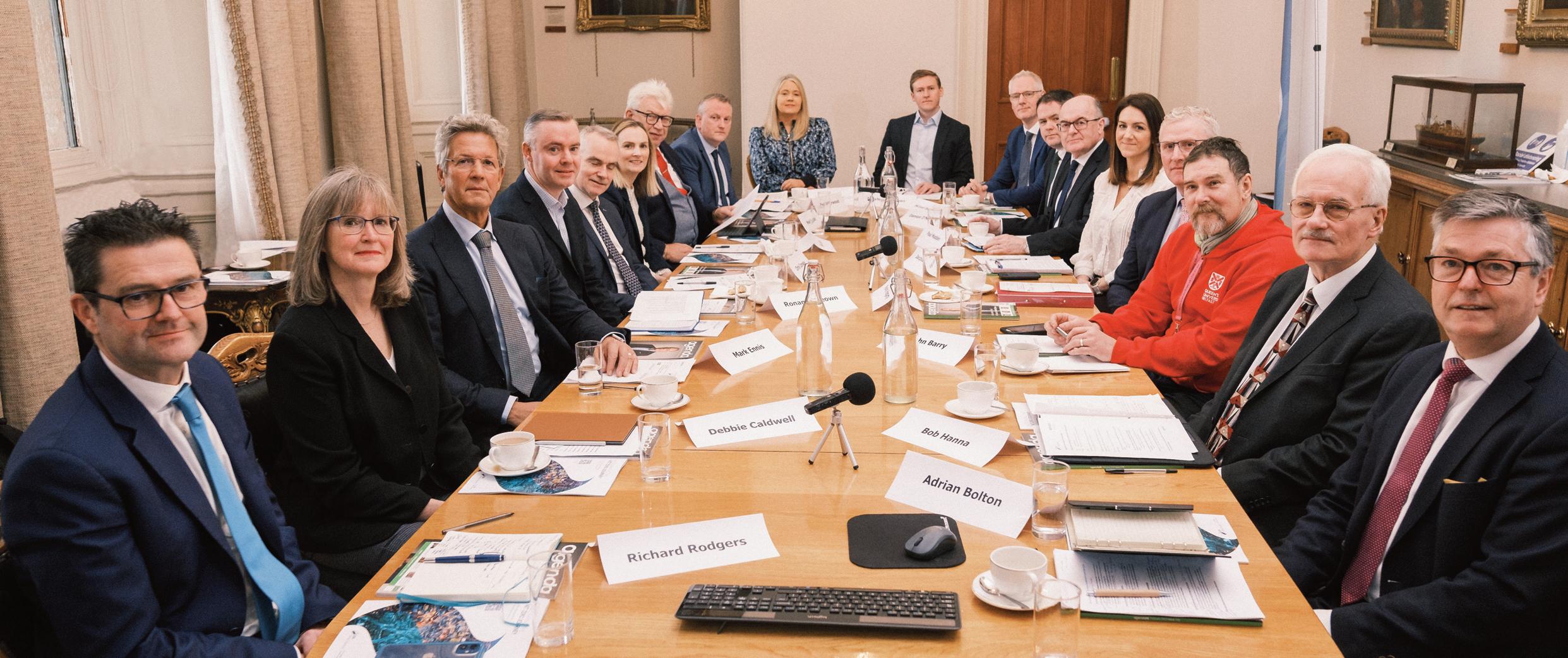 Paul Isherwood, Housing Executive
Paul Isherwood, Housing Executive
A reduction of consumption must be a priority. At the Housing Executive we have adopted a fabric-first approach, which is essentially empowering tenants through multiple interventions. Evidence and data are the currencies of a decarbonised future and in recognition of this, we are exploring the creation of a net zero centre of excellence, which creates an environment for tenants, staff, and our contractors to interact with and learn about the technologies we are deploying. As the owner of some 84,000 properties, achieving net zero represents a huge investment, but one that we must get right, because we are only going to get one chance.
Electrification is a key enabler of a net zero economy, moving into sectors such as transport and heat that the grid has not traditionally provided a supply for. There is a capacity challenge, but it is also a huge opportunity to develop the network for the future. For me, digitalisation of the energy system is key. Data is an enabler, but it is what you do with that data which really counts. We need to find ways for the system to dynamically manage electricity consumption and generation on a more local level, empowering communities to manage their own local energy system.
We are pleased to see the Department for Infrastructure review the current planning regulations. It is important that they reflect our net zero goals and ensure local planning strategies are aligned with the Department’s, both with a presumption in favour of renewables.


Kyle



A lot of focus is on the electrification of infrastructure, and rightly so,
but it is important to recognise that there can be a disconnect between local emissions and grid emissions. Organisations may have little by way of Scope Two emissions by entering into green electricity contracts, but if we follow the supply chain we still may be ultimately reliant on fossil fuels. So addressing both the enduser and the supply chain in tandem is a key enabler. At the same time, we cannot afford to lose sight of the sticky Scope One emissions, such as fuel oils, which are a real and pressing challenge and contribute to local emissions.
Paul Madden, Centre for Competitiveness
The requirement to move at pace means that our focus cannot solely be on electrification. We have a great opportunity on the alternative fuel front to
decarbonise those sectors that electrification will not fully meet. Agriculture, for example. The use of biomethane in transport fleets is something that can be done immediately. It has a co-benefit of helping the farming community reduce their carbon footprint but also helping businesses and organisations transition their fossil-fuelled fleet, perhaps even quicker than electrification. Alternatively, biomethane can be injected into the gas grid and used today. Ultimately, a decision must be taken to invest in the construction of biomethane generation plants at scale.
Damien O’Mullan, NI Water NI Water considers decarbonisation within the context of the overall impact of climate change on the resilience of our services. As the largest electricity user in Northern Ireland, most of our operational emissions are from electricity. Our energy strategy over the current regulatory price period focuses on several areas but its cornerstone is
about reducing consumption, and energy efficiency. The second part of our strategy is around the incorporation of renewable technologies because we recognise the need for large public sector organisations to use our assets towards the decarbonation agenda. Finally, and importantly, is a focus on flexibility and how as an organisation we can grow and develop our capability in relation to a flexible user on the demand side.
Bob Hanna, energy consultant
In Northern Ireland we have a ‘not invented here’ mentality, particularly evident in energy, where we neglect learnings from other jurisdictions. We do not have time to reinvent the wheel and so we must put resources in to examining what has worked elsewhere. This would be illuminating for policymakers, particularly in relation to sustainable energy support schemes.

What funding mechanisms can best support the upscaling of renewable technologies to aid the energy transition and achieve environmental priorities?
 Michael Donnelly, Strategic Investment Board
Michael Donnelly, Strategic Investment Board
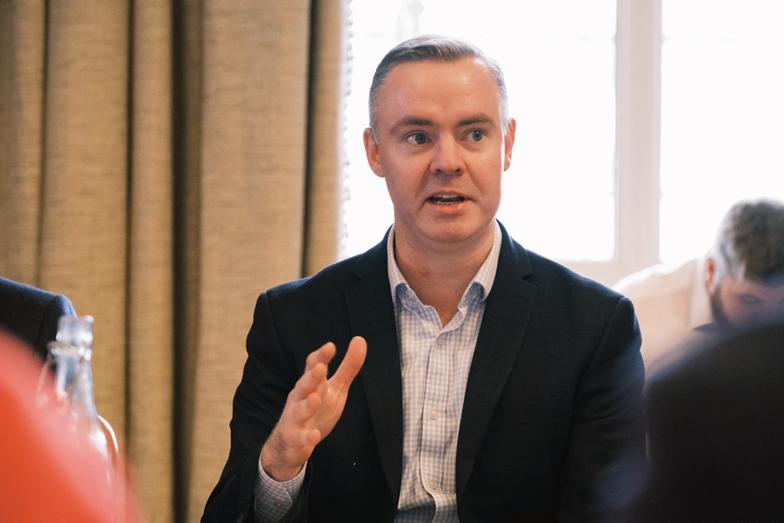

To upscale renewable technologies we need to be investment ready. Finance can only flow where we have projects to fund, the right expertise is centralised, the delivery capability exists, and there is enabling policy. Central government does not have enough money in its block grant or sufficient lending capacity to solve this problem alone, so it is a challenge for both the public and private sectors.

Structurally, we have recognised that what we lack is a vehicle or a conduit to work with private sector funders and leverage our money together in a way that is directed towards solutions. We have learned from our experience of setting up the Northern Ireland Investment Fund and are working at the moment to set up a net zero accelerator fund. This private sector investment fund will act as a focal point for government to take a patient equity position in net zero generation and storage projects whilst working out the policy interventions it needs to make for the sustainability of the sector in the medium and long term.
Paul Isherwood, Housing ExecutiveWe must look at the package from start to finish. When we were successful with attaining European Regional Development Fund (ERDF) funding to do external wall insulation works, we thought we could easily get contractors in the market. That was not the case, in fact, it took almost three years to upskill contractors, working with them hand in glove, to ensure they became proficient in the installation. As we look at new technologies coming through and even those that have been well established in other areas, we need to ensure that we are building the skills capacity to deploy that technology. We know what we need to do and for the most part, we have the technology, however, the funding and the skillsets are not always there. That goes beyond just the installation of the technology, in that we also need to have a support network to monitor and maintain it. Ultimately, what we do not want to see happen is that we install technology that does more
environmental harm in the long term, or pushes people further in to fuel poverty.
Michael Donnelly, Strategic Investment Board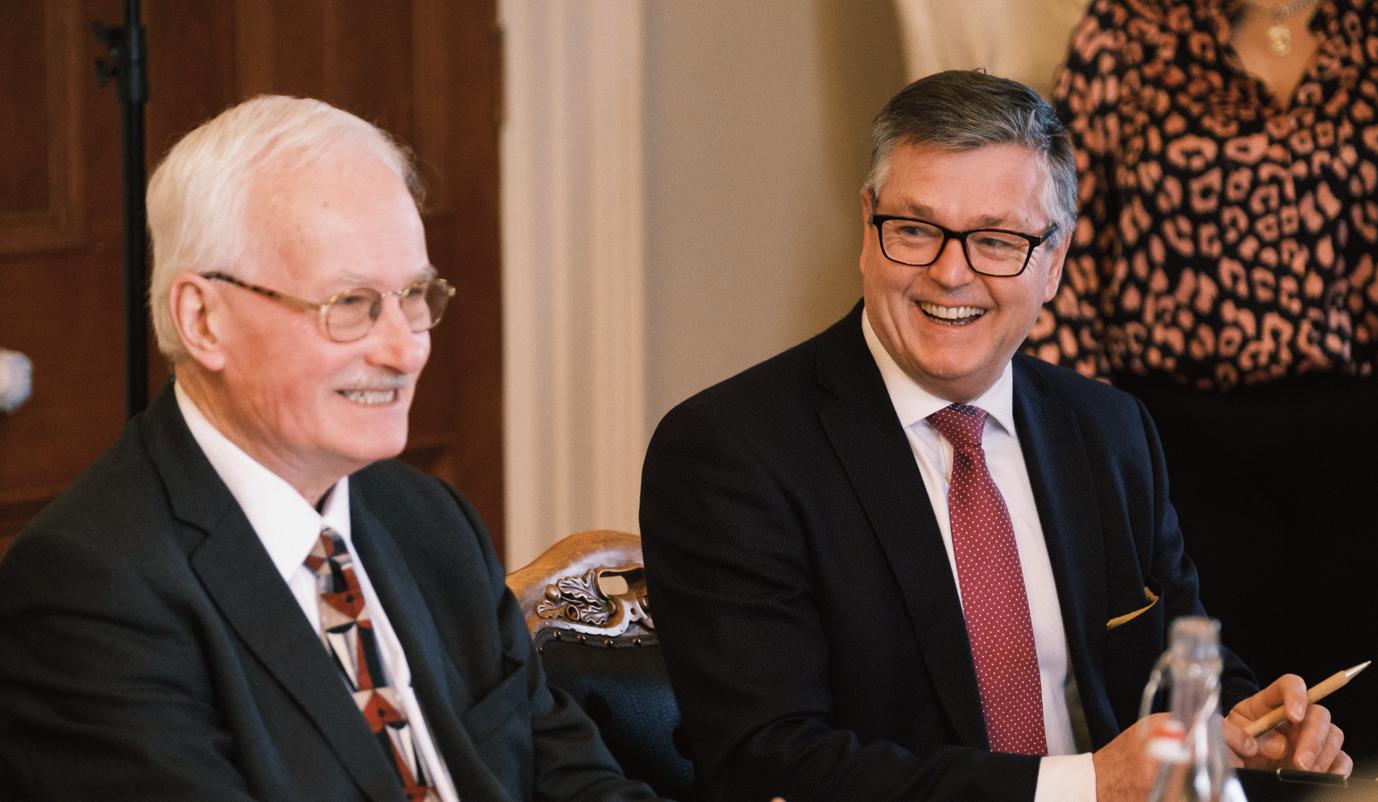

Another important indirect funding mechanism is procurement. Indirect funding, in this context, means the potential for Government to aggregate its demand for commodities like oxygen, hydrogen and electric vehicles. Then, Government can procure these goods and services to create a multi-year income stream for private sector providers. This type of approach would let the private sector raise finances to deliver the net zero goods and services that will make a difference to our climate change targets.
Kevin Hegarty, Department of Agriculture, Environment and Rural AffairsWe have touched on the role of the public sector or government in relation to providing equity, but I also think consideration must be given to the money that we already spend. Around 50 per cent of every capital £1 spent in Northern Ireland is related to central government. Current budgets are a challenging position and the amount of money from central
government is a finite amount, so we must ensure the money being spent is in the correct areas. For example, £327 million has been ringfenced for the successor to the Common Agricultural Policy (CAP). As such, decisions are going to have to be taken on how that money is spent. The work in the development of the Climate Action Plan and the carbon budgets should trigger decisions investment priorities.
The Climate Change Commission (CCC) has stated that it is going to cost around £2.2 billion per year of new money from 2030 to decarbonise the economy. The macro analysis of who will fund that has yet to be done but the OBR has effectively said that the private sector will play a significant role. The Government’s role, therefore, must focus on policy- and market-making.
To date, SSE has invested £500 million in Northern Ireland and we would love to double that figure. However, there are constraints. SSE


as a group has an investment plan of £25 billion over the next decade but it is competing internally for the investment. Quite often, I am asked about the risk profile when compared to the likes of Scotland, the Republic of Ireland, Europe, and elsewhere. Planning is a major constraint, but so too is political stability. We need a pathway for investment and one which is lower risk compared to competitive countries, who are ultimately seeking the same investment.
How important is achieving public buyin to altering our consumer choice and travel patterns?
Chris Conway, Translink Transport is the second biggest emitter of greenhouse gases in Northern Ireland and utilises over 30 per cent of our entire energy consumption. Transitioning away from imported petrol and diesel to alternative energy such as electricity, hydrogen, and to some degree biofuels, is a massive shift in technology. However, simply trying to
decarbonise our existing transport would be a wholly inefficient approach.
Northern Ireland has the highest private car use per capita in Europe, so we need a much broader modal shift.
That modal shift is a huge behavioural change and one that requires leadership to ensure buy-in. Some good examples already exist including congestion charges in London, where the use of public transport subsequently doubled. Those behavioural changes were driven by strong policy leadership, something we really lack.
has been slower than neighbouring areas at adopting electric vehicles and the lack of visible charging infrastructure has held consumers back from making the switch.
Fuel poverty is still a significant challenge and some of the technologies we are talking about are financially inaccessible to individuals and households. So, we need to create support mechanisms that protect and enable the public.
Public buy-in is hugely important and to that end, we need to simplify the complexity. Decarbonisation of our entire economy is a mammoth task, and each of our sectors are required to break that whole-system plan down into digestible chunks, to ensure we are bringing people along with us. In the transport sector we can see Northern Ireland
The one stop shop solution being utilised in the Republic of Ireland in relation to retrofitting is something we are keen to bring to Northern Ireland. It is not just about deep retrofits, we are working with customers even if they are only making small changes, giving people sustainable solutions to reduce their energy costs.

councils, with much more limited powers than our English counterparts, we must focus on planning and convening. Through initiatives such as Belfast City Council’s community planning partnerships, our newly established retrofit hub, and the Climate Commission, we are trying to get all parts of the system into one room to create pathways and launch projects. We have undertaken some foundational pieces of work such as our local area energy plan, which provides data on the whole system and the most cost-effective pathway to decarbonise and offers a coordinated series of investments. However, as a region we do not have investment-ready projects and the reason is the absence of development finance to build out a pipeline. We need that funding to carry out feasibility studies and to really unlock capital to flow into those projects.
Richard Rodgers, Department for the Economy
The collaboration between those who want to produce solutions is happening, the difficulty lies in the actions. We need more targeted outcomes following the conversations we as a sector are having. The organisations which are leading the way on decarbonisation are the ones which have challenged their traditional business models and adopted innovative approaches.

Sara Lynch, Queen’s University Belfast
We recently held a student summit as part of the development of our own university net zero strategy and interestingly, it was not energy that people were talking about, but rather public transport access and lack of active travel opportunity across Belfast. To move away from our addiction to cars, they want to see things like safe cycling infrastructure, walking infrastructure, and public transport initiatives. Traditionally, policy has been slow to prioritise a modal shift. The carbon budgets and the Climate Change Act are a welcome emphasis for change in that regard.
Bob Hanna, energy consultant
We need to enable communities in the energy transition. Energy communities are growing in other countries but there has been little progress here in Northern Ireland.
Noel Brady, Construction Industry Training Board Northern Ireland
Public buy-in is key but to achieve it we need a collaborative effort. As

We have faced government inertia before, and it should not be allowed to stand in the way of the fact that there are companies who want to invest. In the absence of political leadership there are things that can be done.
 Ronan McKeown, NIE Networks
Klair Neenan, SSE Airtricity
Debbie Caldwell, Belfast City Council
Ronan McKeown, NIE Networks
Klair Neenan, SSE Airtricity
Debbie Caldwell, Belfast City Council
Pathfinder projects are vehicles to progress, and we then need a mechanism to allow them to contract.
 John Barry, Queen’s University Belfast
John Barry, Queen’s University Belfast
We are at risk of failing to apply the lessons we learned during the pandemic to this crisis. During the pandemic, we had the Chief Science Officer and the Chief Medical Officer, together with government, being trusted sources of information. Academia and research have a role in being a trusted source of evidence for communities. Carbon literacy is very important to getting public buy-in, ensuring that there are no unintended side effects of technological innovation.
What is the role of local authorities in achieving a cleaner and greener future?
 Debbie Caldwell, Belfast City Council
Debbie Caldwell, Belfast City Council
The transition represents a huge opportunity to unlock the economic, social, and environmental benefits of local areas to the benefit of all those who live in, work in, and visit them. However, local authorities must also ensure that in seeking to reinvigorate local economies and attract investment, no one gets left behind. People must be offered resources to reskill and be supported in moving out of carbon-
intensive supply chains. Additionally, local authorities are ideally situated to act as conduits between sectors and push a whole-system approach. Place-based solutions can help foster collaboration and innovation to release investment. Finally, as John [Barry] has mentioned, two-thirds of the fundamental changes to achieve our climate goals are behavioural. As such, local authorities have an exemplar role in driving those behavioural changes, guiding decisions taken by individuals, businesses, and investors.
John Barry, Queen’s University Belfast
Our economy is set to undergo major structural changes through which some sectors will grow, and others will shrink. We must plan to ensure that the fossil fuel sector gets a decent departure, followed by the establishment of a new sustainable economic
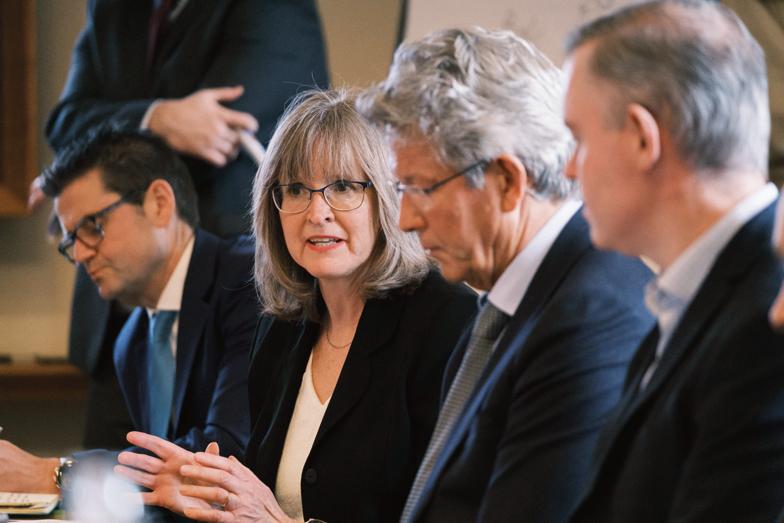
model. However, there are limits to economic compensation. There are non-economic aspects to the changes we are going to be asking of our citizens and we need to start those conversations now.
Chris Conway, Translink

The modal shift agenda we are pushing is facing challenges of budget constraints and a lack of political leadership. We see our role as leading the way and we have made progress in the rollout of 100 electric buses in Belfast with a further 38 due in Derry~Londonderry by mid2023. In addition, 20 hydrogen vehicles are now in service, and we are about to begin a feasibility study to decarbonise Northern Ireland’s rail network. However, we have encountered challenges, a prime example of which is the skills capacity needed to operate and maintain the associated infrastructure for the green technologies we
are pursuing. We are working to share that knowledge with other organisations but there is room for a platform that brings that whole-system learning together, and ensures that any policy change that does come forward is landed correctly at a local level.

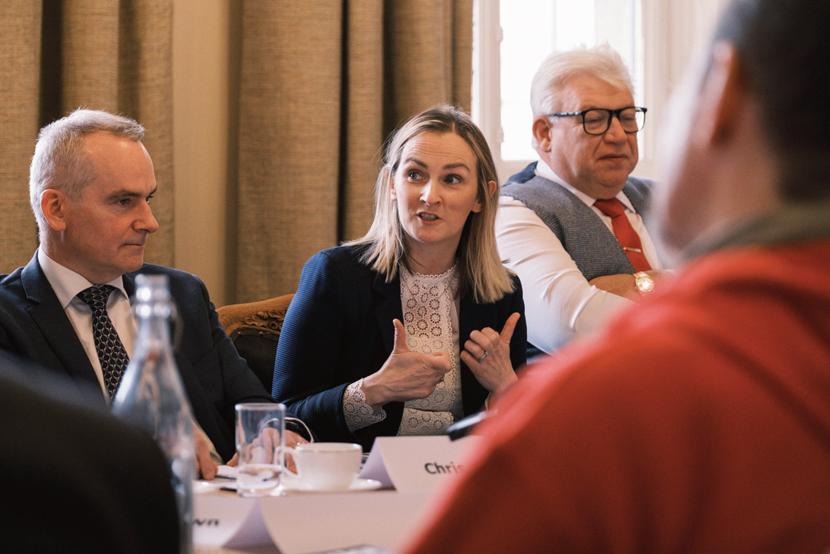
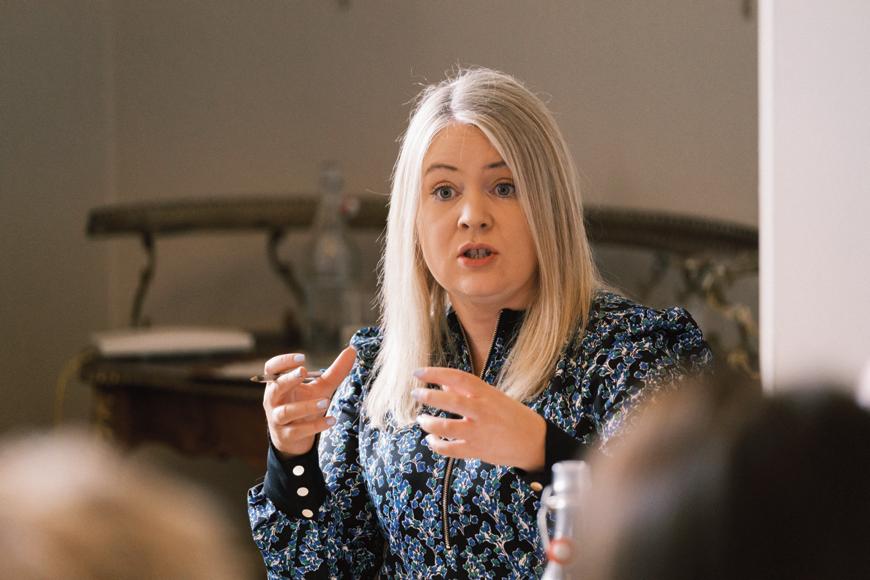

Bob Hanna, energy consultant


The role of local communities in energy activities is much less developed in Northern Ireland than in any other part of these islands. There are currently only two community energy cooperatives in Northern Ireland, compared with hundreds in other nations. Local authorities have a role to play in facilitating community thinking in areas such as public transport facilitation, district heating, electric vehicle charging infrastructure, and planning permission for community wind and solar projects.

Identify the existing barriers to a net zero future. What is the role of collaboration in overcoming these challenges?

Adrian Bolton, SSE Energy Solutions

The enablement of private investment in fundamental infrastructure programmes is important and therefore, we need to look at public procurement as an enabler of private investment to step in.
Bob Hanna, energy consultant

The general availability of technical and non-technical information which everyone can trust can be a gamechanger. Society has
become less trusting of government, multinational companies, and other figures of authority. This is affecting the ability to implement key infrastructure projects, particularly in the energy sector. This is less apparent in countries where there is a history of municipal or regional planning, for example in Denmark, rather than market competition, such as in the UK. Some countries and regions fund organisations to make publicly available technical information that can be relied on by all interest groups in a given situation, as this has been proven to deliver energy infrastructure projects more quickly and with less controversy than before.
The inadequate framing of the climate crisis as an emergency is a barrier. The science is telling us we need wartime mobilisation, but that appears to be insufficiently understood.
Chris Conway, Translink Education needs to change on both a personal and at an organisational level. We know ‘what’ needs to change but we have not quite got the ‘how’. Politicians listen to what they hear on the door, so if we educate the public on energy, the environment, and climate, political will should follow.
Kevin Hegarty, Department of Agriculture, Environment and Rural Affairs
Knowledge is a barrier. The information exists but we need to use it. In preparation for carbon budgets, getting information out from the various sectors has been a challenge, and that will be even more difficult at a political level.
Jacqueline Walls, Belfast Harbour
Collaboration needs to take place at all levels of the supply chain. There is a big appetite in the local economy for driving decarbonisation and a big part of that is that
organisations are being asked for their green credentials on the product they supply. If we do not support those businesses, local manufacturers will not be able to compete in the global market.
Paul Madden, Centre for Competitiveness
A lack of urgency is a barrier. Until recently we have not treated this as an emergency. Targets out to 2050 were too far out to spark a crisis mentality, which is needed.
Damien O’Mullan, NI Water
From a delivery point of view, a major challenge is the availability of grid capacity and the capability within the electricity system. The sectors moving towards electrification must have connectivity and flexibility across Northern Ireland.
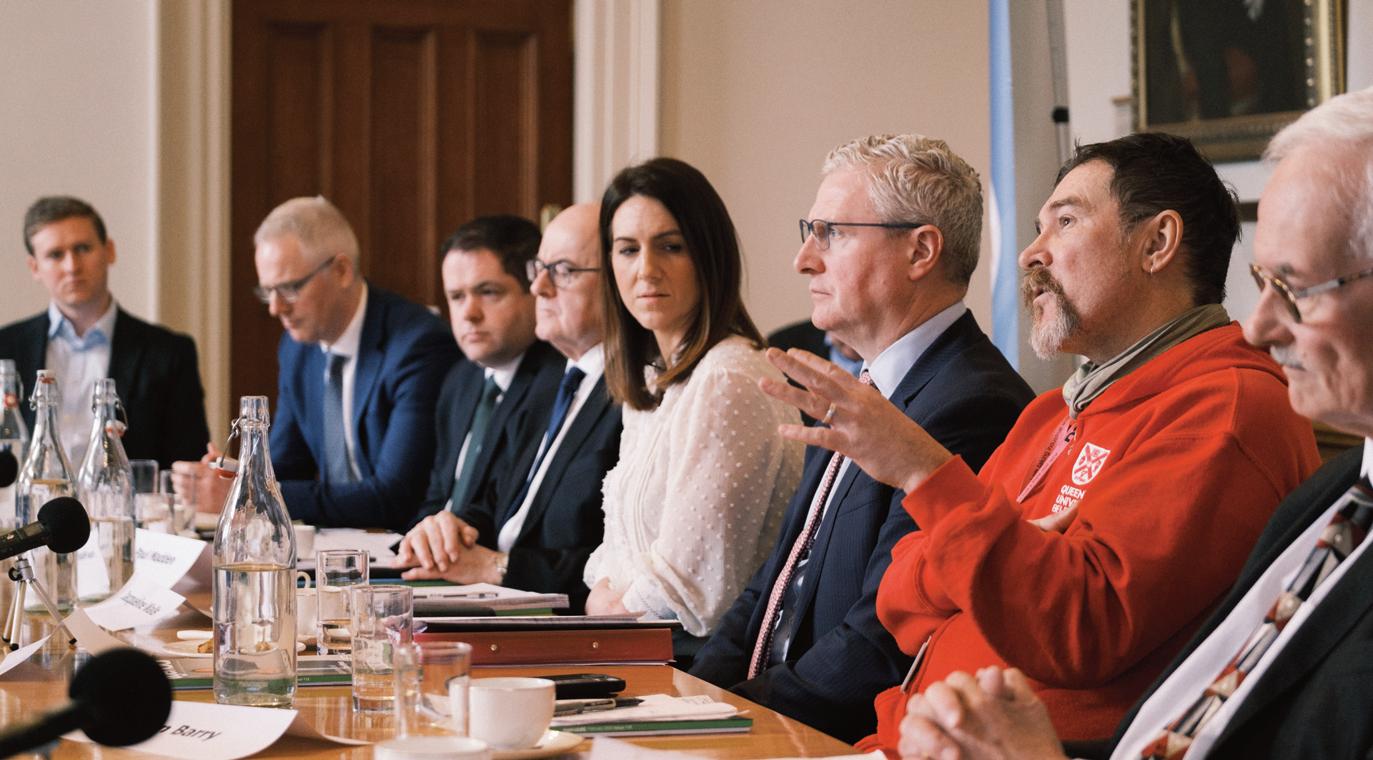
Michael Donnelly, Strategic Investment Board

What is needed is a single, prioritised, and resourced action plan that everyone can galvanise around and participate in.
Kyle Flanigan, Belfast Harbour
Existing carbon intensive solutions still work. Petrol and diesel can still power our cars, brown electric can still power our buildings, and natural gas or home heating oil can still heat our homes. That is a problem because the cheapest option in the short term is to do nothing. There is scope to start costing carbon into business models now, even without policy, to change mindsets.
Klair Neenan, SSE Airtricity
We do not have the right incentives to encourage households and businesses to make the step changes that are needed.
Paul Isherwood, Housing Executive
Human resource availability and industry capacity. These are in global demand and as we start to stretch target timelines, costs will go up
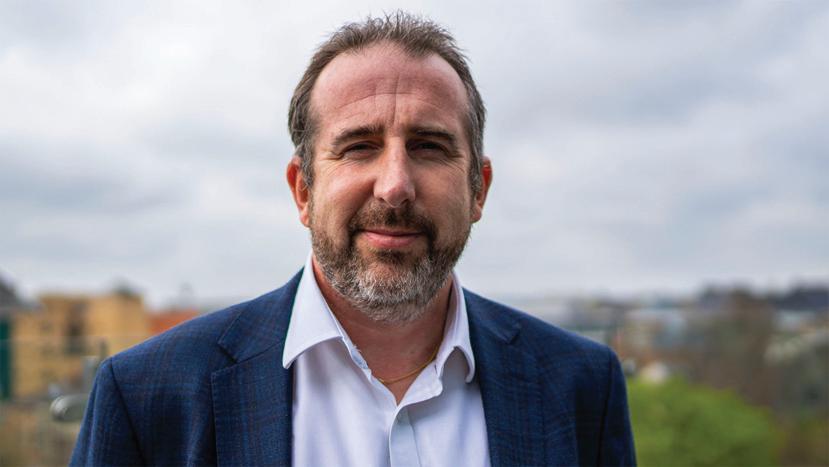 John Barry, Queen’s University Belfast
John Barry, Queen’s University Belfast
and resources will be at a premium. If we do not start to invest now, we will be hampered in our delivery to 2050.
Noel Brady, Construction Industry Training Board

Northern Ireland
Indecisiveness, which originates in the absence of leadership. The pandemic showed that we can act in a crisis and that we can find resources, technology, and people when the will is there.
Sara Lynch, Queen’s University Belfast

We need clear political leadership. Political will can make change through policy and make more decarbonisation requirements mandatory. We talk a lot about cost, but we also need to talk about the cost of carbon in everything we are pricing to incentivise action.
Ronan McKeown, NIE Networks



Northern Ireland is the optimal size to be really agile and get ahead of other countries. I think we have a culture of creating our own barriers, but that mindset
must change. It is the doing that will make us successful.
Mark Ennis, SSE Ireland
Most of the local authorities do not articulate the climate crisis on an emergency basis or educate about it. There is a need for a trusted body to get that information across and encourage local authorities to become action orientated.
Debbie Caldwell, Belfast City Council
I would point to seed finance. We need to stop offshoring our emissions and take responsibility. A carbon tax would be useful in this regard.
John Barry, Professor of Green Political Economy, Queen's University Belfast
Adrian Bolton, Head of Business Development, SSE Energy Solutions

Noel Brady, Chairman, Construction Industry Training Board Northern Ireland
Debbie Caldwell, Climate Commissioner, Belfast City Council
Chris Conway, Chief Executive, Translink
Michael Donnelly, Head of Commercial Investment and Risk Management, Strategic Investment Board, Northern Ireland
Mark Ennis, Chair, SSE Ireland
Kyle Flanigan, Infrastructure and Capacity Planning Lead, Belfast Harbour
Bob Hanna, energy consultant
Richard Rodgers, Department for the Economy
We need the public sector to have a higher risk appetite to enable public and private sector collaboration to deliver energy decarbonisation more urgently.
Nathan Sanders, SSE Energy Solutions
Silo mentalities are a barrier. We need collaboration and trusted partnerships. Additionally, we need to increase our speed to
execute. Capital exists but we need to get projects moving to boost confidence in the future market, to unlock future investment. We need to ensure that we are levelling up. We cannot leave anyone behind on this journey and our work must deliver social value.
Kevin Hegarty, Director of Green Growth and Climate Action, Department of Agriculture and Rural Affairs
Paul Isherwood, Director of Asset Managing, Housing Executive
Sara Lynch, Head of Sustainability, Estates Directorate, Queen’s University Belfast
Paul Madden, Director, Centre for Competitiveness
Ronan McKeown, Customer and Market Services Director, NIE Networks
Klair Neenan, Managing Director, SSE Airtricity
Damien O’Mullan, Head of Energy, Northern Ireland Water
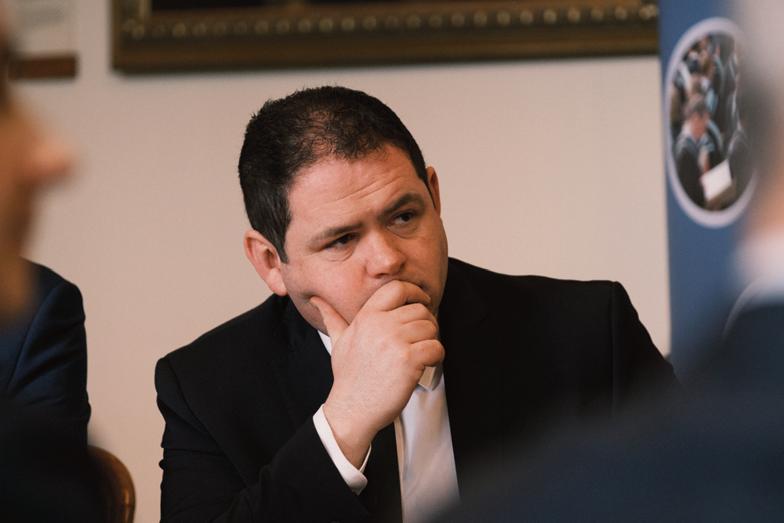
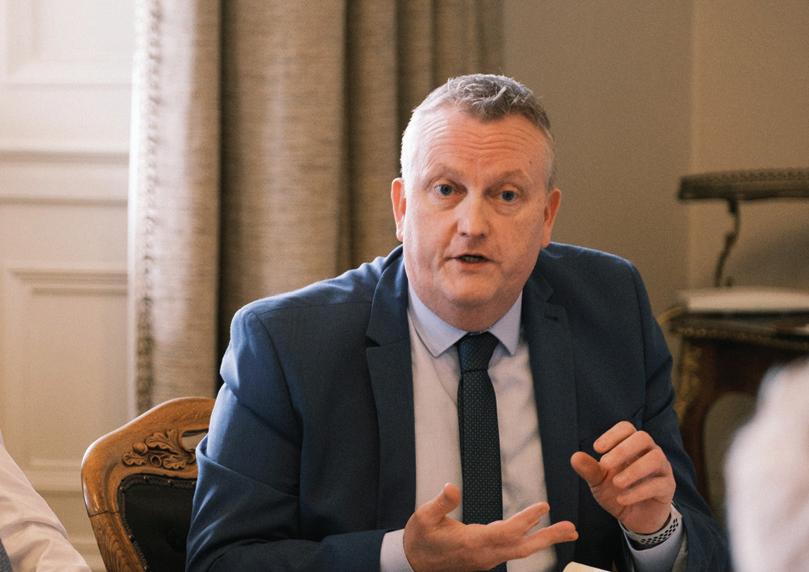
Richard Rodgers, Deputy Secretary, Head of Energy, Department for the Economy
Nathan Sanders, Managing Director, SSE Energy Solutions
Jacqueline Walls, Energy and Decarbonisation Lead, Belfast Harbour

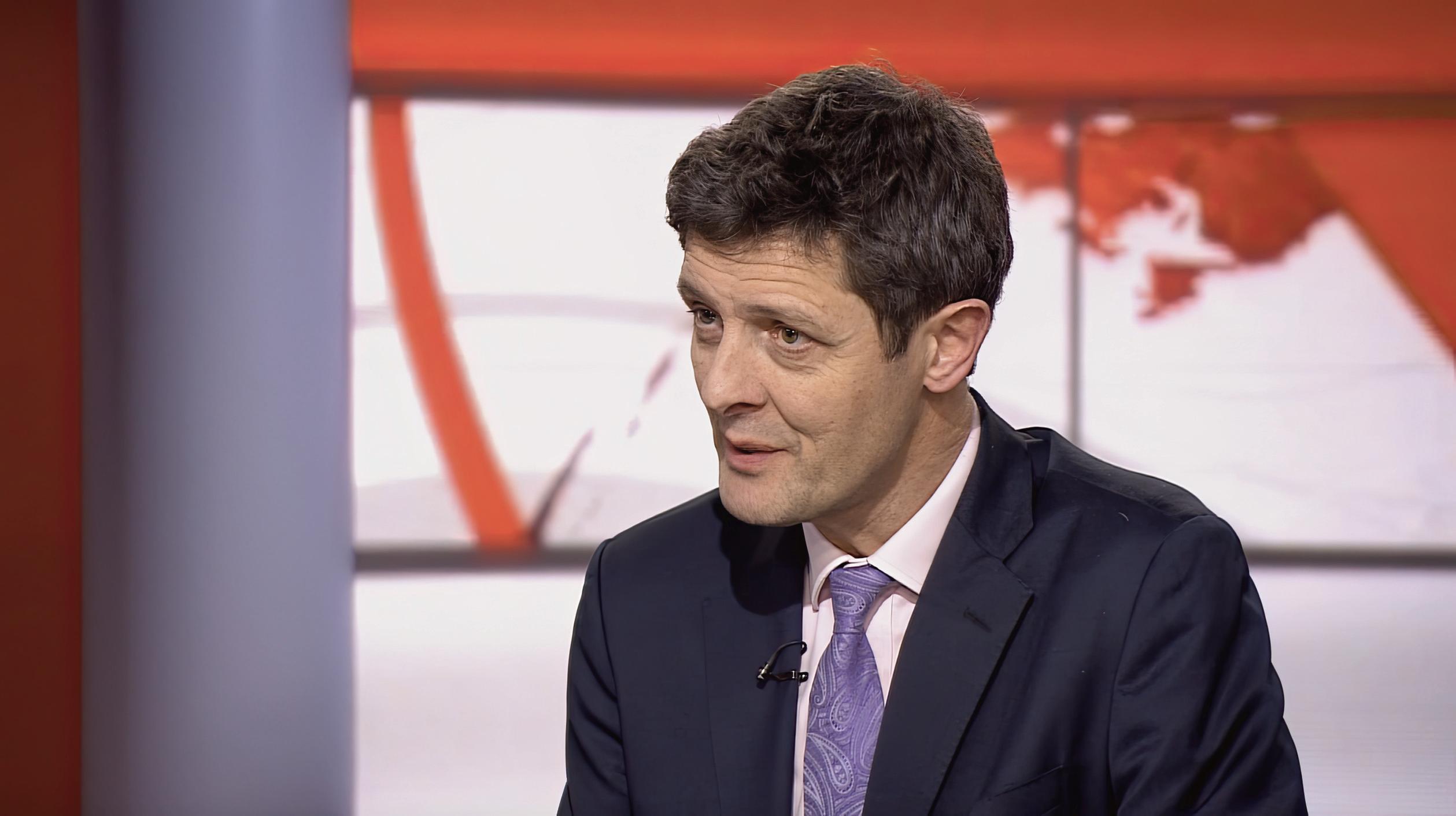
Pym’s interest in journalism was piqued whilst at school, when he read an account of a journalist working in south Wales. “She was a graduate trainee and she explained that in the morning she covered the Magistrates’ Court, then went to a council meeting, then went off to a press conference at the rugby club, then maybe went to an agricultural event, before doing a theatre review in the evening. The sheer variety of this woman’s job is what fascinated me,” he explains.
Pym’s progression through university and into the world of journalism was not straight forward. He admits that not wholeheartedly throwing himself into working with the student paper and radio station while studying at the University of Oxford hampered his pathway to

employment. However, his persistence in taking up a postgraduate diploma at Falmouth Technical College (now Falmouth University) paid dividends, opening the door to work in radio.
“It was great in that it trained me in radio journalism and gave me the chance to work at a local radio station and gain some hands-on experience which is probably the most difficult thing for a young journalist. I then got the chance to work for Wiltshire Radio, an independent radio station near Swindon and they eventually took me on as a trainee journalist,” says Pym.
He further explains that he found inspiration in figures such as Sandy Gall at ITV News, and journalists like Martin Bell, Charles Wheeler, and Kate Adie, as he progressed.
Pym’s reporting on the Covid-19 pandemic, an event which he describes as “completely unprecedented in our lifetimes”, led to him receiving of the British Journalism Review Charles Wheeler Award in 2020. However, he emphasises that the award is a shared effort, explaining that, as with most broadcast pieces, “it is all about teamwork, and there is a lot more to the gathering of a story than the person onscreen”.
He recounts being the first journalist to interview Margaret Keenan, the recipient of the first approved Covid-19 vaccine in the world in December 2020. “It was in the University Hospital, Coventry which had been asked by NHS England to find

As the health editor at BBC News, Hugh Pym was a familiar fixture on many television screens throughout the duration of the Covid-19 pandemic. He talks to Joshua Murray about the evolution of journalism, his career highlights, and impartiality at the BBC.
a first patient with the media present. Margaret was there, in her 90s and she was just amazing, wonderfully charming, and was really happy to take all of our questions.
“I was really conscious that this was a moment in history because whilst trials had been done on the vaccines, getting it approved and then into the arms of the public was a big moment.”
On the same day, Pym tells of his tweet about the second vaccine recipient and which led to his most viral social media moment, likely due to the fact that the recipient was a man named William Shakespeare who hailed from Warwickshire, the same home county of his namesake, the famous playwright.

Although the overwhelming majority of Pym’s career has been based in England, he spent a period of time covering the politics of Northern Ireland at the time of the Omagh bomb in 1998 and recounts the differing nuances which made complicated the reporting of political affairs compared with those in Britain.
“I remember the question at the time, in addition to the human tragedy, being about where this event left the Good Friday Agreement. I had to drop whatever story I was doing and go on air. That was what we did as political correspondents. I was then sent over to Northern Ireland in the subsequent days to report on the follow-up of the event and cover the politics.”
He has also covered health and social challenges in Northern Ireland, including problems with waiting lists.

The death of British Queen Elizabeth II saw a level of specialised coverage previously unseen for the vast majority of the broadcaster’s viewers, and was a historical moment for news presenters and the public alike.
Pym, who reported on the health of the Queen in the hours prior to the announcement of her death, explains: “We had been informed that day that doctors were concerned about the Queen’s condition at Balmoral. It was clear that something unusual was happening here. On the reporting side, it was important to ensure that the tone was right; I only made a brief appearance on the first day and it was all about getting the tone right, being responsible, not speculating whilst still giving people as much information as we could.”
“We have seen local papers fall back and struggle to compete with online. That important texture of journalism in every community has changed a lot and I hope that it can be saved and sustained.”Credit: BBC News
On the task of being an impartial reporter, Pym believes that: “From day one, you have got to be scrupulous in ensuring the impartiality of your coverage.”

In the 2001 general election, he was a candidate for the Liberal Democrats in North Wiltshire, a seat which is normally safe Conservative. Pym explains the transition from political activist to impartial journalist: “The key thing is how you conduct yourself once you join the BBC. There are some in the BBC who have been involved in one way or another in politics in a previous life. The key thing is that once you walk through the door, you uphold the BBC’s values of impartiality, fairness, accuracy, and understanding your key responsibility. You cannot remain active in any way once you join BBC News.”
He further explains the underlying personal traits which have helped him to success at the BBC: “The most important thing is that you work hard and are willing to go the extra mile to find out what is truly going on, whether it is making phone calls or whatever it may be. In addition to that, you have to have determination, curiosity, putting in the hours, not being put off by anything, and being prepared to ask the innocent question.
“It is all about that willingness to pursue the facts until you are satisfied that either there is no story or that there is one and that you want to get it out there.”

On how the world of media has changed through his career, Pym says: “When I was a trainee journalist, we did our shorthand and law, so those basic skills have not changed. Research wise, there is a world of difference; we did not have any mobile phones or internet. To do our research we had to go to newspaper libraries or cuttings libraries and do a lot more work on the phone.” He further explains that he sometimes wonders “how we did it” by carrying out a similar scale of research without resources such as Google.
In addition to the tech revolution, Pym observes that independent local radio stations, which “used to rival the BBC” are now greatly diminished, as is local media overall. “A lot of them have since merged and they are much broader groups now,” he explains, adding: “We have seen local papers fall back and struggle to compete with online. That important texture of journalism in every community has changed a lot and I hope that it can be saved and sustained.”
Hugh Pym has been the BBC health editor since 2014. Prior to that he was the BBC chief economics correspondent and was acting economics editor. He is married to Susan, a Scot, and has three children. Pym has also authored four books, including Inside the Banking Crisis in 2014.
An avid sports fan, Pym and his family are season-ticket holders at Queens Park Rangers, although, in his own words, “the football takes a back seat during February and March for the Six Nations”, where he supports the Scottish rugby union team.

The key thing is how you conduct yourself once you join the BBC. There are some in the BBC who have been involved in one way or another in politics in a previous life. The key thing is that once you walk through the door, you uphold the BBC’s values of impartiality, fairness, accuracy, and understanding your key responsibility.

Recent coverage of the 25th anniversary of the Good Friday Agreement brought back a story I reported back then about the rate of adult literacy in Northern Ireland, writes
John O’Farrell, Irish

Congress of Trade
Unions (ICTU).The hook of the story was that over one-quarter of all people with the right to vote could not actually read and understand the document we voted on in the 1998 referendum.
In February 2023, the latest tranche of census results were delivered, including the sobering figure that just under a quarter of the adult population would struggle to comprehend the highlights of the Windsor Framework. These are people with no qualifications, and yet, it should be both recognised and celebrated as a significant improvement than a decade ago. Back in 2011, the Census revealed that 29.1 per cent of the population had no qualifications, compared with 23.8 per cent in 2021. That is 56,200 more people with better life chances.
But that is still too low. Many of the people with low or no qualifications are older people who may have left school 20 or 30 years ago and will have worked (if at all) in low-skill, low-status occupations, with little opportunity for updating or upgrading their skills. The UK skills survey shows that people working in ‘professional’ jobs have far greater access to education and skills to improve their output or simply increase their ‘wellbeing’.
The Economist ran an article recently scolding British business for not training their staff, “spending only half as much on training per employee as European ones. They train fewer workers and give each of them less time in class”.
This is a long-term problem, and has contributed to the unhappy statistic that only Spain is worse than other rich countries in the percentage of its workers in jobs requiring only a primary education. We are a low-skill economy, and various wheezes over the years to improve things have had mixed results. Train to Gain under the last Labour government was a flop, while the Tories’ plan was the Apprenticeship Levy, a 0.5 per cent tax on businesses (and public sector services), which smacked of the austerity tactics of George Osborne, with the ‘savings’ from the taxpayer being outsourced to employers, many of whom simply deducted the cost from their existing training budgets.
The Economist’s summary echoes what unions have been saying already: “Numbers have actually fallen… Many of the new ‘apprenticeships’ that they are funding look a lot like pre-existing programmes, rebadged to qualify for the cash. Some courses have just become more expensive.”
Meanwhile, the background grinding of austerity wore down the system, in particular on capital spending (which is where the infrastructure of education for all ages stands or falls). As was recently observed by the Nevin Economic Research Institute, “there was a boost to capital spending in 2019/20 which brought the total spend to within £10 million of the 2009/10 spend. However, capital spending fell back in cash terms in 2020/21 and was £137 million or 9.2 per cent below where it was in 2019/10 in real terms. The cumulative loss in capital spending in the 10 years to 2020 was £4.2 billion. It was estimated in 2020 that the Northern Ireland Executive has a backlog of capital expenditure projects totalling £5 billion, and this is likely to have increased substantially in the years since.”
Fortunately some programmes were spared being cut here, as their value was recognised by Department for the Economy, unlike some of the terrific educational projects funded under ESF and still awaiting news whether the UK’s Department for Communities and Levelling Up will continue their existence.
Since 2002, NIC-ICTU has managed the Union Learning Fund (ULF) to promote activity by trade unions in support of the Government’s objective of creating a learning society, with a particular focus on workers benefiting from essential skills (maths, literacy, ICT), and with creating a pathway to higher levels, right up to degrees from the Open University (OU). In March 2023, OU and ICTU launched an online resource, ICTU Learning Hub, with free, flexible, distance learning content designed to support employability and upskilling. The Hub is part of The Open University’s free learning site OpenLearn.

Two years ago, in a fit of spite, the Tory Education Minister Gavin Williamson MP scrapped funding for the ULF in England. Wisely, the Northern Ireland Department for the Economy has retained the service, as it is a proven and cost-effective measure for reaching the very adults highlighted in the Census.
Every minister overseeing ULF (Declan O’Loan, Carmel Hanna, Reg Empey, Danny Kennedy, Stephen Farry MP, Diane Dodds MLA, Paul Frew MLA, and Gordon Lyons MLA) acknowledged its value. It has plenty more work to do.



While described by the Secretary of State, Chris HeatonHarris MP, as a powerful “veto” which restores “practical sovereignty” over the application of certain EU laws in Northern Ireland, the Stormont Brake has also come in for heavy criticism over the complexity of its application.
Having been passed through the House of Commons with overwhelming support, the Stormont Brake, a core mechanism of the Windsor Framework, was designed to ease the “democratic deficit” central to the opposition of unionist parties in Northern Ireland.
In practice, the mechanism has the expressed purpose of ensuring that there is a transfer in sovereignty over EU law
away from Brussels, with Stormont being granted the right to reject an EU law. In reality, however, the complexity of conditions for application subdue its potential impact.
The Stormont Brake allows a veto of sorts for some EU laws, with 30 MLAs – as long as they are from more than one party – being granted the power to petition a trigger of the Stormont Brake, notifying the UK Government of their objection to
the amendment or replacement of certain EU laws which apply in Northern Ireland under the original Northern Ireland Protocol. While applicable to laws which mainly relate to goods, the Stormont Brake does not cover amended or replaced laws concerning state aid, the Single Electricity Market, or most of the EU’s customs codes.
Given the numerical requirements for the mechanism to be enacted, it would not enable the DUP to use the Stormont Brake without the support of one of the other main parties, as even with the additional support of independent unionist Alex Easton MLA and the TUV’s Jim Allister MLA the DUP is three votes short of exercising its potential veto power.
Crucially, the Stormont Brake does not have to be enacted on a cross-community basis; it can be triggered by unionists alone, nationalists alone, or a minority of either ‘side’ with the support of parties designated as ‘other’.

Although the Assembly has been granted the power to oppose, the final decision over whether to apply the prospective EU law rests with the British Government, with the Stormont Brake essentially serving as an advice and consent mechanism. The overall process of triggering the Stormont Brake takes around two months.
MLAs must satisfy certain conditions, including that the amending or replacement EU law “significantly differs” in its content or scope from the original and would have a “significant impact specific to everyday life” of communities in Northern Ireland which is “liable to persist”.
If the British Government agrees to pass forward the result of a vote in the Assembly to the EU, the EU then can either accept the British Government’s opposition or else request a further explanation. The UK Government will then be given two weeks to provide another explanation which will then suspend the EU law from being applied in Northern Ireland.
The UK Government would do so by notifying the EU in writing via the Joint Committee that the Brake has been applied. At that point the relevant EU law would not apply in Northern Ireland. Even if the UK and EU were subsequently to agree (in the Joint Committee) that it should apply in Northern Ireland, it could only do so with cross-community assent in the Assembly, except in “exceptional” and other “highly limited” circumstances. There is an arbitration process if there is disagreement between the UK and EU regarding application of the brake.
A new body, the Joint Committee, made up of members of the UK Government and the EU, will then discuss the proposal, before a new vote in the Assembly requiring support on a cross-community basis. If the Assembly fails to do this, the EU will have the ability to take “appropriate remedial measures”.
For clarity, a cross-community vote in the event of the triggering of the Stormont Brake is one which commands the support of a majority of the Assembly, including a majority of both unionists and nationalists, or alternatively a vote which commands the support of 60 per cent of the members of the Assembly, inclusive of 40 per cent of nationalists and 40 per cent of unionists.
Additionally, given that the Executive is not currently functioning, in the event of an EU law being applied to Northern Ireland, there will be no mechanism to oppose the prospective EU law, as the British Government will not unilaterally veto an EU law being proposed for Northern Ireland.
The prospect of direct rule, which is a significant possibility given the ongoing political boycott of the institutions by the DUP, is not covered by the mechanism, nor is the other possibility of joint authority between the UK Government and the Republic, whether on a formal or informal basis.

In May 2023, voters in Northern Ireland will return to the polls for the local elections. agendaNi outlines the 2019 election results in each council area, political developments which have taken place since then, and any potential political wildcards to look out for.


Largely encompassing the South Antrim constituency, the 2022 election saw significant growth in support for the TUV, whilst the DUP saw a decline in support. The other main parties largely maintained their previous level of support. Independent Ballyclare DEA councillor Michael Stewart, who unexpectedly gained a seat in 2019, has not confirmed if he will seek re-election.
The ABC council overlaps Upper Bann and part of Newry and Armagh. In the Assembly election in Upper Bann, Alliance gained a seat from the SDLP, whilst Sinn Féin topped the poll in the constituency. Former DUP MLA Paul Berry is the only independent member of the council. In the Assembly election in Newry and Armagh, the TUV’s Keith Ratcliffe, who will be a candidate, put up a strong, although unsuccessful, challenge to the DUP, whilst other parties’ support remained largely
The largest of Northern Ireland’s councils, south Belfast has seen the most significant political shift since the last council election, with an SDLP landslide in the Westminster election, followed by an Alliance surge in 2022, whilst the DUP and Sinn Féin have both consolidated support in Belfast. The story of the last council election was the triumph of small parties, with gains for the Green Party and People Before Profit. The UUP – once the dominant party in Belfast – won only two seats. The PUP has faced defections of John Kyle and other popular figures in the party to the UUP, with Billy Hutchinson now the PUP’s only councillor in Belfast.
Encompassing the Assembly constituencies of North Down and Strangford, Ards and North Down is an overwhelmingly unionistsupporting council area. In recent Assembly elections, Alliance has gained two seats, whilst Strangford saw the TUV come closest to gaining a seat outside of North Antrim. North Down is also known for its voter volatility between elections, with Alliance gaining a Westminster seat in 2019 with a swing of over 35 per cent. The seat has also returned independent MLAs and MPs, whilst a number of councillors have switched parties through this council term.
In 2019, the TUV lost all its seats on this council, whilst the UUP also suffered losses. These were countered by gains for Sinn Féin and the DUP. Causeway Coast and Glens encompasses North Antrim and East Derry. Since 2019, the DUP has lost an Assembly seat to Alliance in North Antrim. Despite his party’s woes in 2019, TUV leader Jim Allister MLA retained his Assembly seat in 2022. One other variable is the votes of independent councillor in The Glens, Pádraig McShane, who was co-opted to replace Ambrose Laverty, and is currently serving a suspension from the council, and will “likely not” seek re-election.
Derry has seen a high level of political flux since the 2019 local election, with Sinn Féin losing almost one-third of its council seats in 2019 and losing in a landslide to SDLP leader Colum Eastwood MP in the 2019 Westminster election, before resurging and topping the poll again in the 2022 Assembly election. Former DUP councillor Ryan McCready has since defected to the UUP, and unexpectedly came to within 100 votes of eclipsing the DUP to the final Assembly seat in 2022. 2019 also saw strong performances for smaller parties, with Aontú, People Before Profit, and a number of independents performing well, making Derry City and Strabane uniquely difficult to analyse ahead of May’s poll.
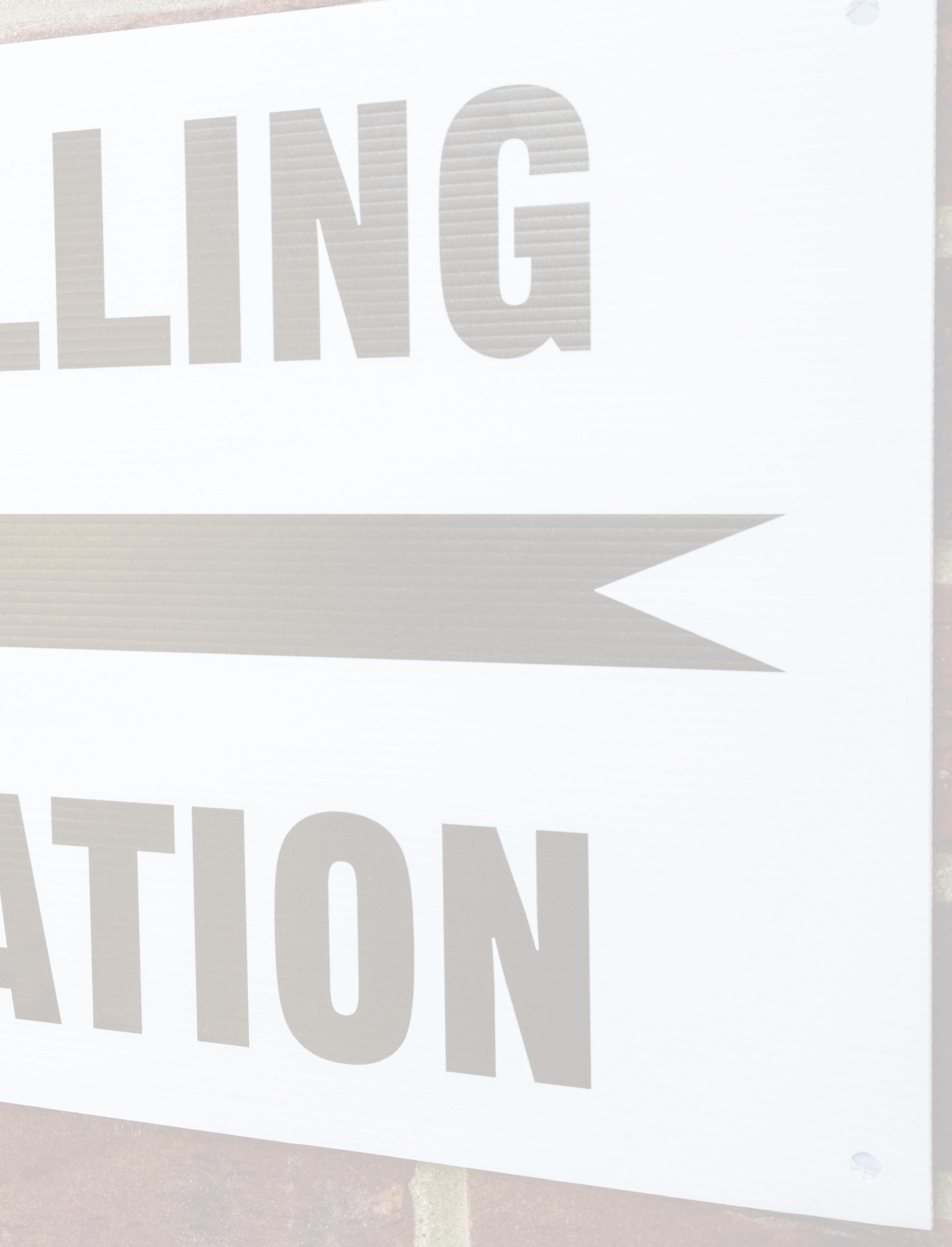
2019 saw marginal losses for unionists to the Alliance Party, a theme which has ensued in the subsequent Westminster and Assembly elections in 2019 and 2022. The TUV performed strongly here in 2019, garnering 15.2 per cent of the vote. 2022 saw the UUP lose a seat in East Antrim, with party stalwart Roy Beggs Jr. being ousted by the Alliance Party. This borough encompasses East Antrim as well as part of North Antrim, and Alliance’s Patricia O’Lynn (who has subsequently resigned) and Danny Donnelly MLA were both elected to this council in 2019, meaning that Alliance will be running candidates who were coopted in.
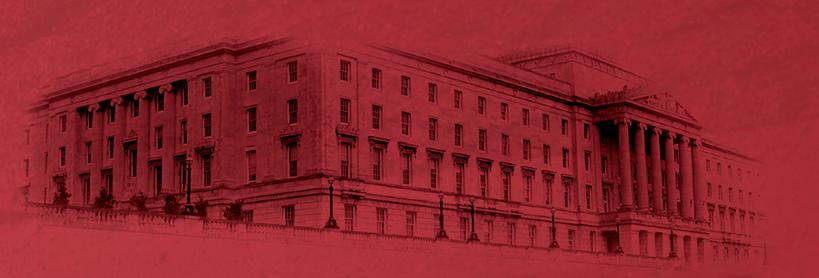
One of two councils where the UUP is larger than the DUP, Fermanagh and Omagh encompasses Fermanagh and South Tyrone and West Tyrone. The main parties’ support has largely remained consistent since 2019, but one potential wildcard will be that of radical left councillor Dónal Ó Cofaigh, who unexpectedly gained a seat in 2019. In addition, there are three independents who gained seats from Sinn Féin in 2019 which Michelle O’Neill’s party will hope to retake.
There was little change here in 2019, with Sinn Féin losing a seat to independent republican Dan Kerr, and the DUP gaining a seat from the UUP. The 2022 Assembly election in Mid Ulster saw the UUP almost halve its first prefrence vote share, with the TUV outpolling it. Sinn Féin maintained its dominance of an area for which the late Martin McGuinness was once the Westminster MP. Aontú will enter this election defending a seat, with former SDLP councillor Denise Mullen having defected to the party shortly after her election. This is the only council in which Alliance has no representation.
Incorporating Lagan Valley, as well as parts of south and east Belfast, Lisburn and Castlereagh has been an area central to the ‘Alliance surge’ since 2019, with the party gaining a second MLA in 2022 in Lagan Valley. Sinn Féin achieved a breakthrough here in 2019, whilst the DUP lost one-quarter of its seats to Alliance and the UUP. The DUP has since been resilient in Westminster and Assembly elections. Having won a seat here in 2019, the Green Party faces an uphill challenge as its only councillor, Simon Lee, has since defected to the SDLP.
Once an SDLP stronghold, 2019 saw Sinn Féin make a major breakthrough here. The DUP has gained momentum through the defection of Henry Reilly to the party, who has now represented four different unionist parties on this council. The 2022 Assembly election saw Alliance gain an Assembly seat in South Down at the expense of the SDLP. One further unknown will be where Gavin Malone voters choose to turn to, with the independent having announced he will not run for re-election despite having more than doubled the quota in the election in 2019, coupled with a promising poll in the 2022 Assembly election in Newry and Armagh.
Speaking to delegates at the Stormont Hotel on 4 March 2023, Alliance leader Naomi Long MLA made reform of the devolved institutions, highlighting perceived political failure of rival parties, and the ‘Alliance surge’ the main focus of her leader’s speech.
The Belfast East representative emphasised her belief that the Alliance position on institutional reform needs to be taken more seriously by observers: “Alliance is the third largest party… Rather than unlocking the Assembly’s rigid designation system, we remain
frozen by the system’s inherent vetoes and an unwillingness to embrace change.”
Long referred to Sharing Power to Build a Shared Future, a document published by the party in 2022 calling for a new process for forming an Executive, including the ending of the designation system, changing the titles of First Minister and deputy First Minister to ‘joint first minister’, and allowing an Executive to be formed on a voluntary basis.

“Irrespective of whether the DUP decide that it is in their own party-political interests to return to Stormont – for we know that is all that matters to them - the current system of stop-go, up-down,
ransom politics needs to end. That is in Northern Ireland’s interests and that should take priority.”
Long also acknowledged colleague Patricia O’Lynn who has resigned her role as an MLA in North Antrim, having expressed her frustration at not being able to carry out her role as an MLA and subsequently taking a new job at Queen’s University Belfast.
Referencing the “debacle” with the passage of the Organ and Tissue Donation (Deemed Consent) Act (known as Dáithí’s Law), Long called on parties to return to the Executive, further outlining: “The Windsor Framework is generally a much better deal than the Johnson/Frost Protocol, which we have


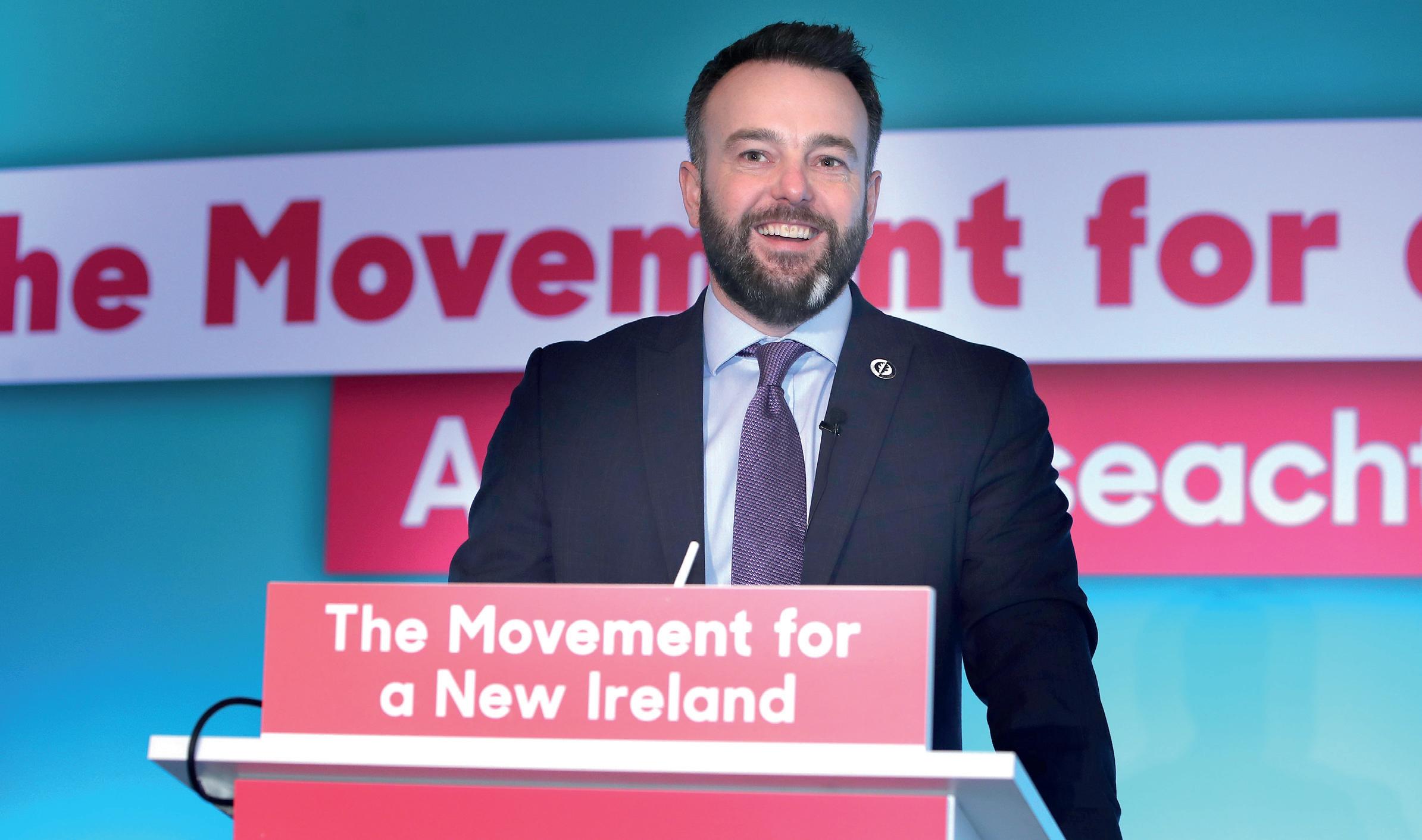
The Windsor Framework, a united Ireland, and reforming Stormont were among the hot topics as Alliance, the SDLP, the TUV, and the Green Party all held their party conferences in March 2023.
always acknowledged was clunky and bureaucratic and which needed to be refined.”
She concluded her speech looking to the local elections, saying that supporting her party was being against: “The blockers. The wasters. The people who take the votes but deliver nothing for them in return. Those who hold Stormont and our future to ransom.”

Almost one year after the party’s disastrous result in the 2022 Assembly election, the SDLP held its conference on 24 March 2023 in Derry, with leader Colum Eastwood MP opening his speech slating the DUP: “It is now decision time for the DUP… The choice now is not really about a protocol or a framework. It is about whether the DUP are prepared to share power with their neighbours.” Eastwood further called on the DUP to “get back to work or get out of the way”.
Turning to institutional reform, Eastwood outlined the SDLP’s vision of having an office of a ‘joint first minister’, and election of a speaker with a simple majority, promoting his colleague Patsy McGlone MLA as “well-qualified and well-tempered for the role”.
‘Towards a new Ireland’ was the eminent theme of the SDLP conference, with the
slogan appearing on the podium and in the backdrop of Eastwood as he made his speech. Pointing to Alex Salmond’s white paper released prior to the 2014 Scottish independence referendum, Eastwood told delegates that a similar endeavour would be required in the event of a border poll and would be intertwined with the work of the New Ireland Commission.
“My appeal to unionism is the same now as it was when I last spoke in this hall –do not avoid a new future together for fear of losing the identity you cherish.”
Eastwood concluded his address by a rallying cry to party members, saying that “the SDLP is here to stay”.
“We are redefining our movement. We are resetting our mission and we are going to embark on a long-term political strategy with the goal of reimagining our country.”
Addressing TUV delegates on 25 March 2023, party leader Jim Allister MLA said: “While others have dithered and equivocated and wondered if they could even present the Windsor Framework as the ‘Windsor Park Framework’, TUV was clear.
“There are no changes of substance only tinkering nor could there be, because the legal confines within which the ‘Windsor
whitewash’ was mixed expressly prohibits changes affecting the ‘essential elements’ of the protocol.”
Allister further warned rival parties against re-entering the Executive: “If there is an Executive, its ministers must by law implement the protocol and its Irish Sea border. A ‘Vichy Stormont’ for protocol collaborators.”

New Green Party leader Mal O’Hara rallied the Green Party base for the upcoming local elections and emphasised his party’s support for striking workers.
“The much-promised reform and investment has never materialised. That is after it carried us all through the pandemic. Yet this government refuses to give them the pay rise they deserve.”
On climate change he said: “If we invest in community-owned energy, we can prevent the most vulnerable from falling into fuel poverty… communities will produce, control, and manage their own energy.”
O’Hara further stated that drug decriminalisation will be a major focus for the Green Party in the future, and that he was “proud” that Belfast City Council supported creating an overdose prevention centre.
I was elected as an Alliance MLA for East Antrim in May 2022. Before that, I was working as a registered nurse in the Ulster Hospital, and I was also a councillor on Mid and East Antrim Council. I enjoyed my time in council and it gave me a real taste for helping people through politics. While there were many things we did in council that I am very proud of, the one that stands out was ensuring that all large-scale council events and events funded by council must have a Changing Places standard toilet available for people with additional needs. Improving accessibility to public spaces and public events is something I am passionate about. Since being elected in May 2022, unfortunately, I have not been able to do the full job of an MLA, but I hope that sense will prevail and that the Assembly will be back up and running soon.


Former healthcare worker and now East Antrim MLA for the Alliance Party Danny Donnelly holds Aneurin Bevan, the Labour MP that founded the NHS in 1948 up as a political role model, and says that the current absence of a Northern Ireland Assembly is preventing him and colleagues from making real change and helping to improve people’s lives.
I have always had an interest in current affairs and politics but not of the unionist/nationalist variety. It was mostly environmental issues that got me actively involved. Fracking was being mooted in the East Antrim area and I was very concerned that this would have a terrible impact on our local environment, wildlife, and even water supply. I met up with similarly minded people and joined the local Green Party group. I stood for election and got a taste for elective politics. A local Alliance Party councillor John Matthews attended a screening of the film Gasland that I had put on in Larne. He shared my concerns for the area and encouraged me to consider joining the Alliance Party. I am not driven by any national identity politics or a particular ideology, but I do see politics as a way of being able to make real changes and help improve people’s lives.
There are many achievements by politicians from across different parties that have positively impacted people’s lives here in Northern Ireland and across the UK that I have admired but my political hero is Aneurin Bevan, the Labour MP that founded the NHS in 1948. His belief that healthcare should be available to all regardless of wealth is the principle of equality in action and was the foundation of an incredible institution that can be depended on by everyone to deliver care from the cradle to the grave. As a nurse, I am incredibly proud to work in a system of universal healthcare, and politically, I am committed to this principle. Nye Bevan improved millions of people’s lives over generations and showed what politics is capable of achieving.

More locally, I have huge admiration for the civil rights leaders here in the 1960s, those who worked for peace in Northern Ireland, sometimes at great personal risk to themselves, and the politicians that stretched themselves to ensure the Good Friday Agreement delivered peace in 1998. The Northern Ireland we live in now is a living legacy to all their achievements.
The party’s environmental policies, and particularly the work of former MLA Anna Lo on a Northern Ireland Climate Change Act, and the moratorium on fracking in Northern Ireland. The Alliance Party is committed to improving the environment and its Green New Deal policies are a strong way forward for Northern Ireland to play its part in mitigating the worst aspects of climate change.

My wife and I are strong supporters of integrated education, and this has long been a key plank of Alliance Party policy. We are very thankful that we were able to send our children to an integrated primary school in Larne. It is great to see more and more schools transforming to integrated status and I hope that we can get to a place where all schools are just schools.
I have lived in Larne most of my life and it is a great place to live and bring up a family. We have so much stunning scenery in East Antrim – the beaches around Islandmagee, the Antrim Coast Road, and the Glens of Antrim to name a few. I am committed to protecting our natural environment and wildlife in and around it. I am strongly opposed to any further fossil fuel exploration, and I believe that we can use the abundance of natural resources on our doorstep to generate clean energy.
Like everywhere else there are some serious challenges: lack of housing, issues with access to services in rural areas, and increasing rates of people struggling with the costs of living. I have established a constituency service at my office in Larne to provide assistance to people who come to me with an issue, and I run regular pop-up constituency clinics across the area to try to be as accessible to as many constituents as possible.
I am a big music fan and I love nothing better than a live gig. We have a huge amount of musical talent in Northern Ireland and one of the things I look forward to every summer is Stendhal Festival in Limavady. Three days of amazing music, culture, comedy, and craic, from mostly local artists and performers. I also enjoy reading when I get time. I am currently reading Colin Bateman’s recent book – Thunder and Lightning: A Memoir of Life on the Tough Cul-De-Sacs of Bangor – and laughing out loud every few pages, which must look odd on the train.


mobilisation of broader expertise and insight through a civic forum. We believed that people in Northern Ireland could use the opportunity of peace to create a better society.
The snow clouds had just lifted on Good Friday, April 1998, as an elated group of women clustered on the steps of Castle Buildings in Stormont to celebrate the acceptance of an agreement. The chill in the air failed to dampen the sense of mixed elation and relief. It had been touch and go the previous week.
A peace agreement was tantalisingly within grasp, but was being heckled by the booming denunciations of those politicians who had walked out of the talks the previous year, alongside the door slamming of those who rejected the proposed framework. Just over six weeks later, through two concurrent referenda, the people in Northern Ireland and the Republic of Ireland voted in large numbers to accept the provisions of the Good Friday Agreement.
We were two of the co-founders of the Northern Ireland Women’s Coalition. We





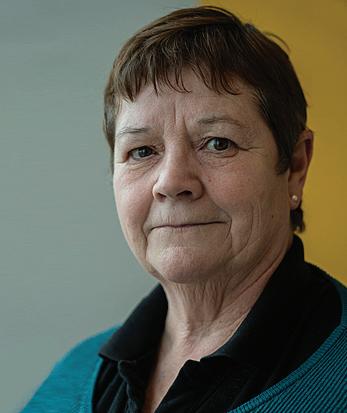
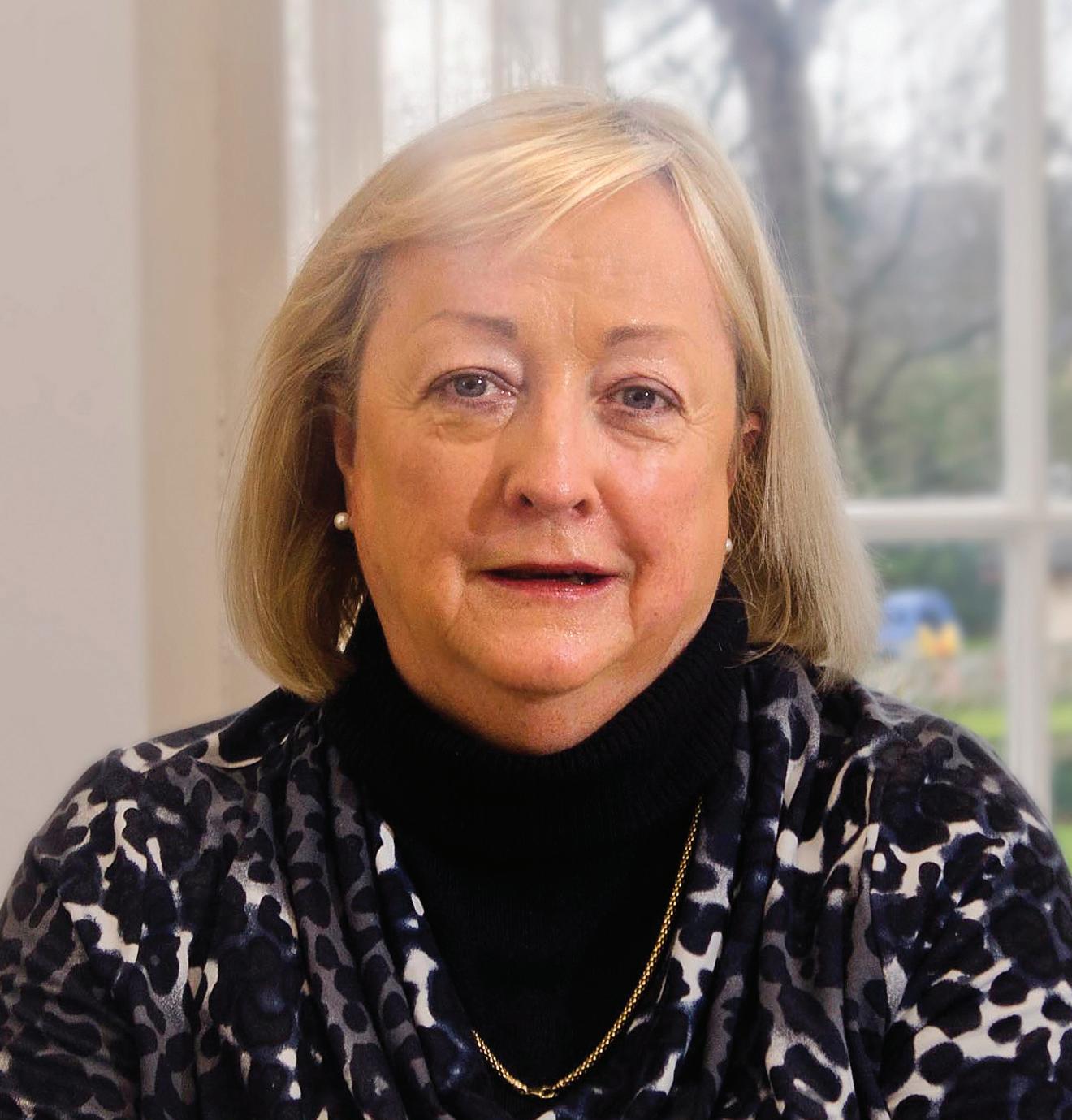
deliberately formed a coalition, not a party, with a shared leadership from both nationalist and unionist traditions. We modelled our ability to reach across our divisions by adopting shared values –equality, human rights, and inclusion. We worked hard to enshrine these values in the Agreement. We were determined to think beyond a politics of narrow interest and violence. Alongside many other people, our vision and our aspirations were broader than that.
The Coalition successfully argued for support for integrated education and shared housing in the Agreement. We named the importance of community development and the advancement of women in public life. We prioritised the concerns of victims/survivors of the conflict and we were convinced that politics in Northern Ireland would benefit from participative democracy – the
Were we overly optimistic? Perhaps to an extent. Yet, despite the persistence of traditional political ruts that all too often mired our politics over the next 25 years, that period has been immeasurably better than the previous decades of violent conflict or one-party political hegemony. What was disappointing was the relative withdrawal of civil society from proactive political voice. The Concordia, composed of employers, trade unions, agricultural and voluntary sector representatives, that NICVA (Northern Ireland Council for Voluntary Action) had curated in the 1990s is no more. Community-based groups are increasingly designated as PUL (Protestant/unionist/loyalist) or CNR (Catholic/nationalist/republican), and only 8 per cent of children benefit from integrated education. There is still much to be done.
But the optimism of April 1998 was not misplaced. The conditions were set for positive activism. All that is now needed is the confidence and foresight to work around, between, and over the negativities of a shared out, rather than a genuinely shared, politics. What this particular party, or that one, thinks, and says is still important, but there is a need for alternate spaces to think outside of the political party boxes. Women have always been good at this.

25 years on from their historic involvement in the Good Friday Agreement, co-founders of the Northern Ireland Women’s Coalition, Monica McWilliams and Avila Kilmurray, believe the conditions for positive activism set at the time must be built upon once more.



































